My Deep Sky Observations with the eVscope (Complete List of Observed DSO)
List of Observed Sky Objects | Remarks | References
Archive
From the end of January 2020 until mid-March 2022, I owned an Unistellar eVscope telescope for observing and taking photos of deep sky objects. On this page, I collected all the sky objects that I visited with the eVscope (more than 250 different sky objects).
Note: As I sold my eVscope in mid-March 2022, no more new photos will be added.
Note: The following Messier objects are missing: M 68 and M 83.
See also
- My Visual Deep Sky Observations (Complete List of Visually Observed DSO)
- My Visual Deep Sky Observations with my Electronic Telescopes (Complete List of Observed DSO)
- My Deep Sky Observations with the eVscope (Complete List of Observed DSO) Archive
- My Deep Sky Observations with the eVscope 2 (Complete List of Observed DSO) Archive
- My Deep Sky Observations with the Vespera (Complete List of Observed DSO) Archive
- My Deep Sky Observations with the Vespera Pro (Complete List of Observed DSO)
- My Deep Sky Observations with the Atik Infinity (Complete List of Observed DSO) Archive
- My Deep Sky Observations with the ZWO ASI224 (Complete List of Observed DSO) Archive
The linked object numbers lead to the detail pages for the respective objects; these typically contain at least one photo from each observation sesssion as well as further information about the object.
List of Observed Sky Objects
Object details can be obtained using the links to the relevant deep sky objects. Smaller sky objects that are also included in photos are usually not listed on their own.
Messier Objects |
|||||
DSO Details |
Name, Companions | Constellation | Type | Photo | Remarks |
| M 1 | Crab Nebula | Taurus | GE/SR | 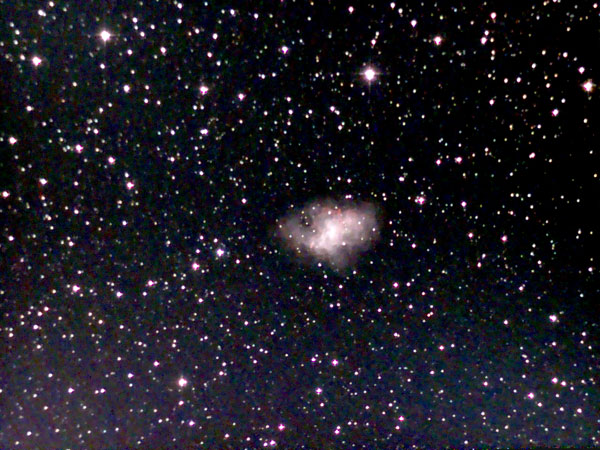 |
More distinct with longer exposure times; supernova remnant |
| M 2 | Aquarius | GC | 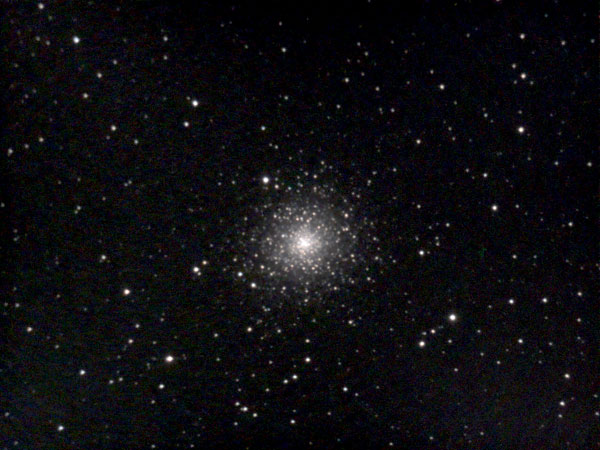 |
Nice globular cluster, one of the larger ones | |
| M 3 | Canes Venatici | GC | 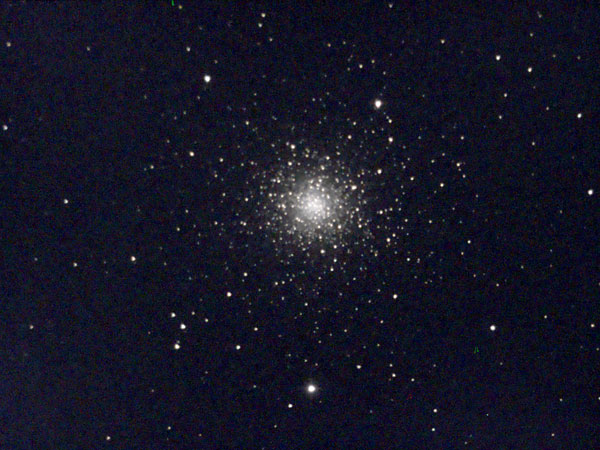 |
Nice globular cluster, one of the larger ones | |
| M 4 | Scorpius | GC | 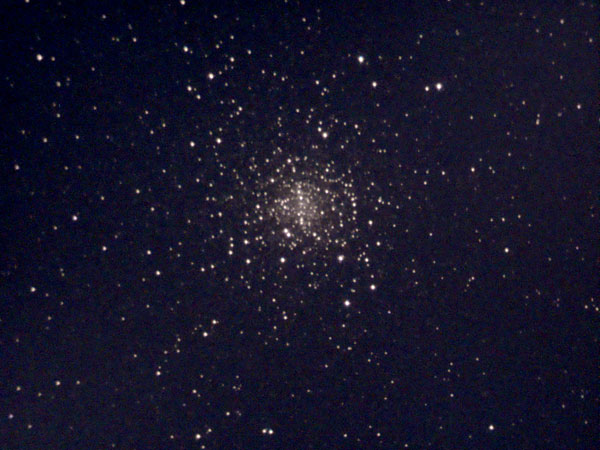 |
From Central Europe the most resolvable globular cluster, but difficult to observe because it is located far south. | |
| M 5 | Serpens Cauda | GC | 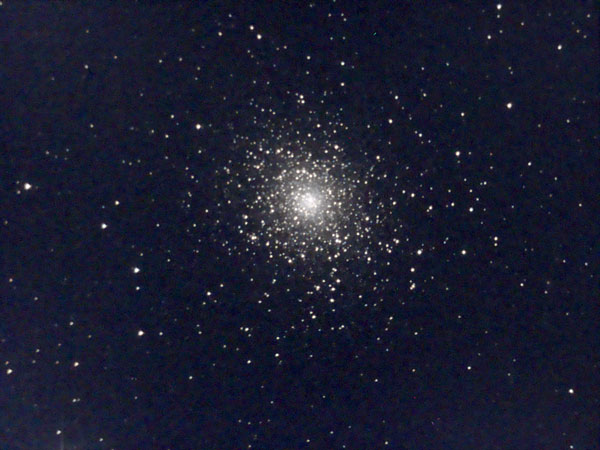 |
Nice globular cluster, one of the larger ones, larger than M 3 | |
| M 6 | Scorpius | OC | 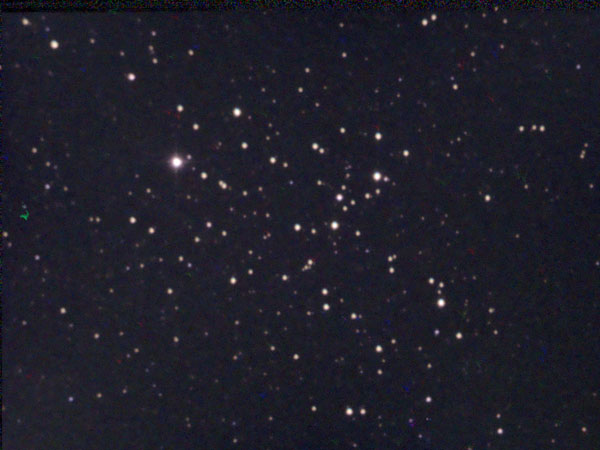 |
Forms a cluster duo with M 7, but not in the eVscope... | |
| M 7 | Scorpius | OC | 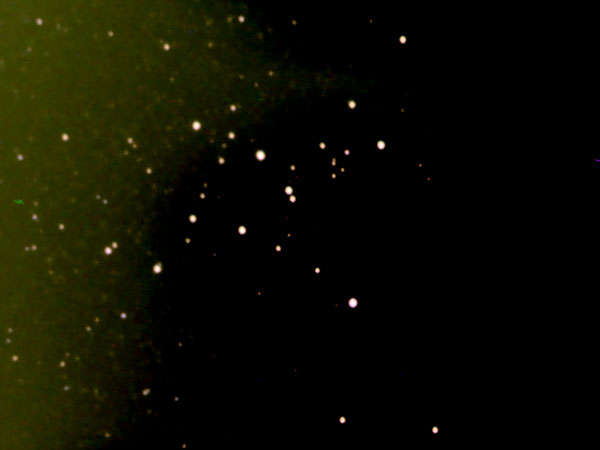 |
Forms a cluster duo with M 6, but not in the eVscope... Regrettably only photographed "disturbed" up to now... | |
| M 8 | Lagoon Nebula | Sagittarius | GN | 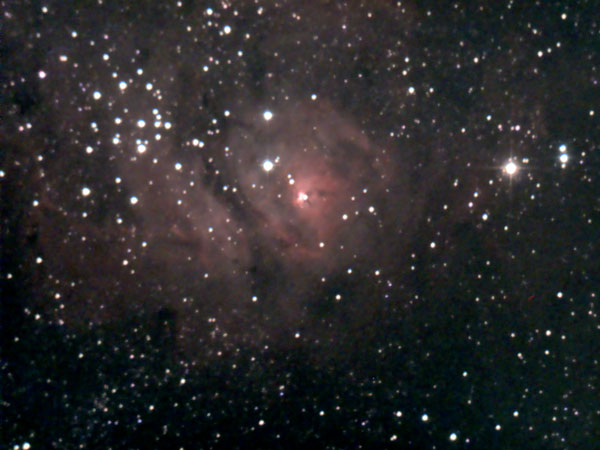 |
Emission nebula (NGC 6523) and open star cluster (NGC 6530) |
| M 9 | Ophiuchus | GC | 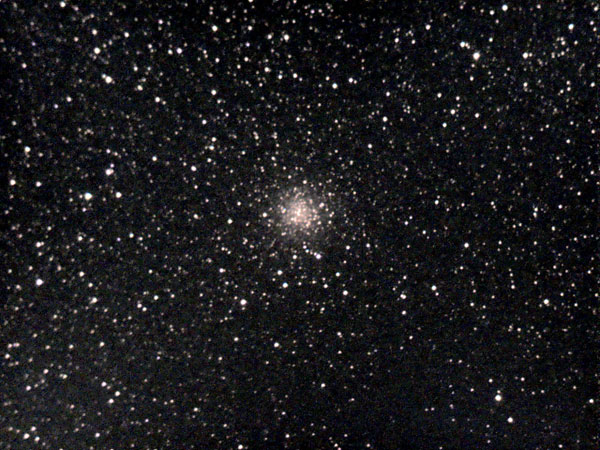 |
Small globular star cluster | |
| M 10 | Ophiuchus | GC | 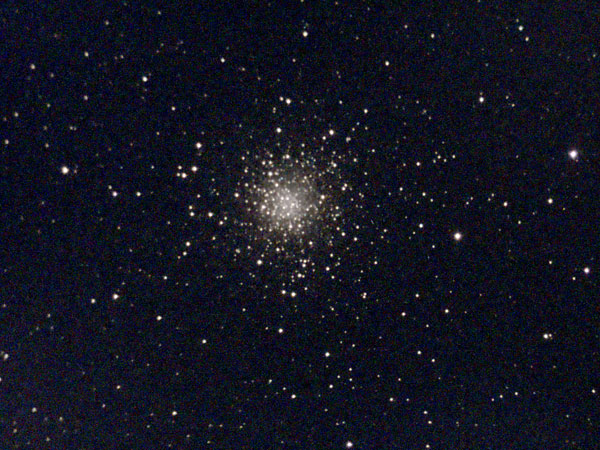 |
Forms a pair with the globular star cluster M 12 | |
| M 11 | Wild Duck Cluster | Scutum | OC | 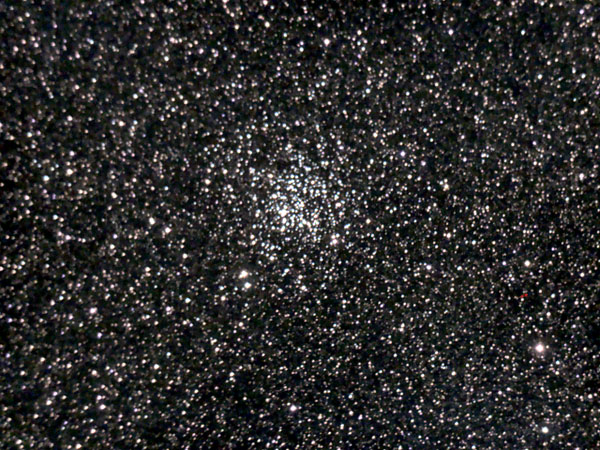 |
Is located in the Scutum cloud, a special section of the Milky Way; therefore the photos are full of stars. |
| M 12 | Ophiuchus | GC | 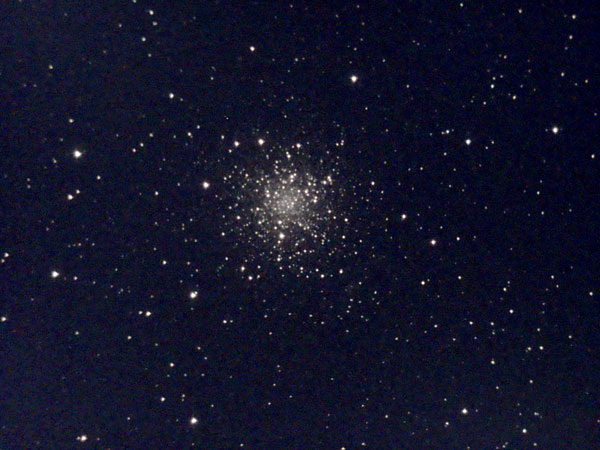 |
Forms a pair with the globular star cluster M 10 | |
| M 13 | Hercules | GC | 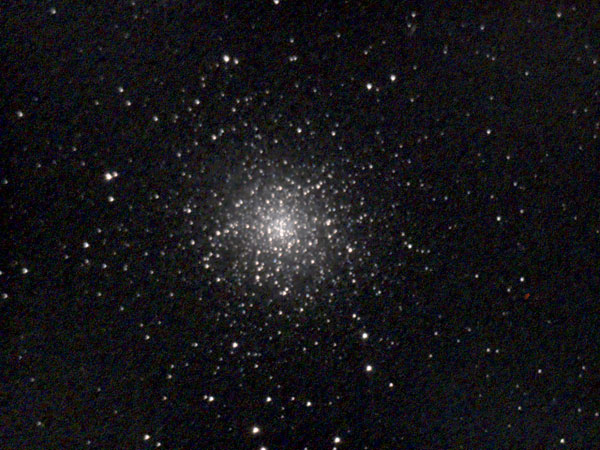 |
Nice globular cluster, one of the largest ones, larger than M 5; spiral galaxie NGC 6207 is nearby | |
| M 14 | Ophiuchus | GC | 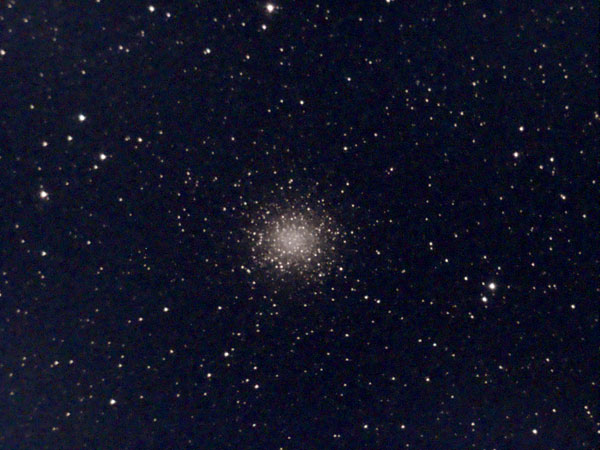 |
The third of the three bright globular star clusters in Ophiuchus, but different in character from M 10 und M 12. | |
| M 15 | Pegasus | GC | 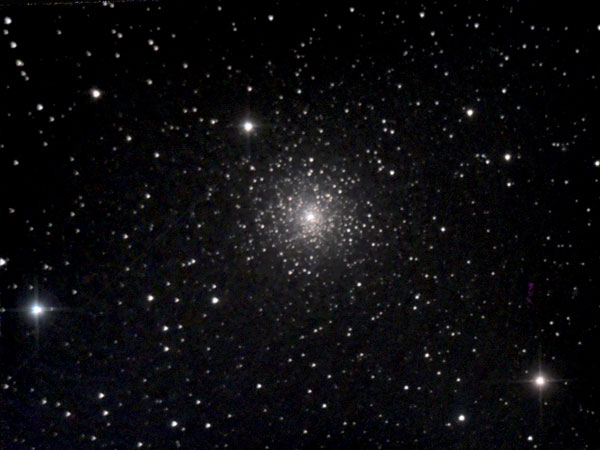 |
Supposedly, it is the best globular cluster in autumn, bright core. | |
| M 16 | Eagle Nebula | Serpens | GN | 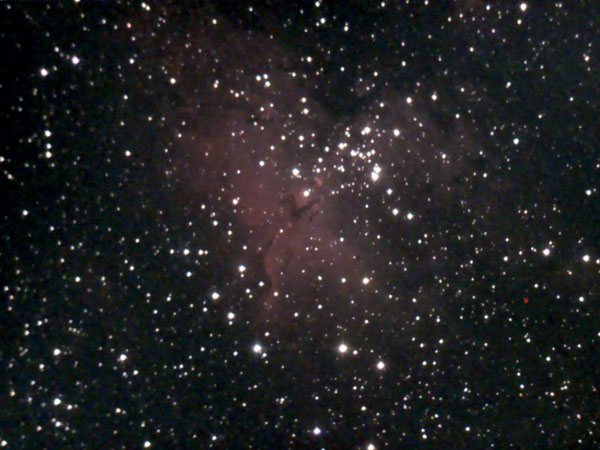 |
Star cluster M 16 embedded in the Eagle Nebula IC 4703 |
| M 17 | Omega/Swan Nebula | Sagittarius | GN | 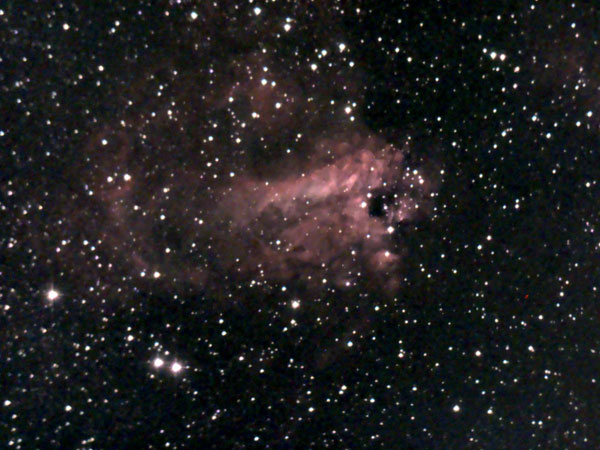 |
One of the most beautiful emission nebulae; in the reversing telescope, some people recognize a swan... |
| M 18 | Sagittarius | OC | 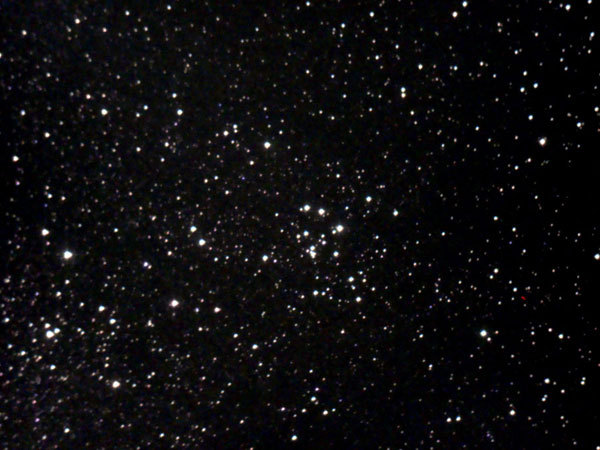 |
More a less a "sub par" star cluster | |
| M 19 | Ophiuchus | GC | 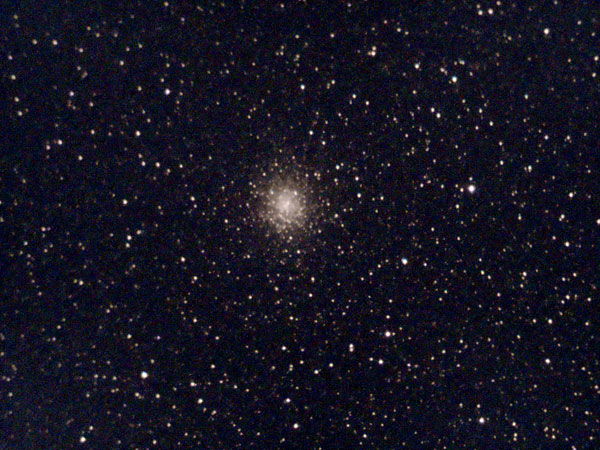 |
Famous for its oval shape | |
| M 20 | Trifid Nebula | Sagittarius | GN | 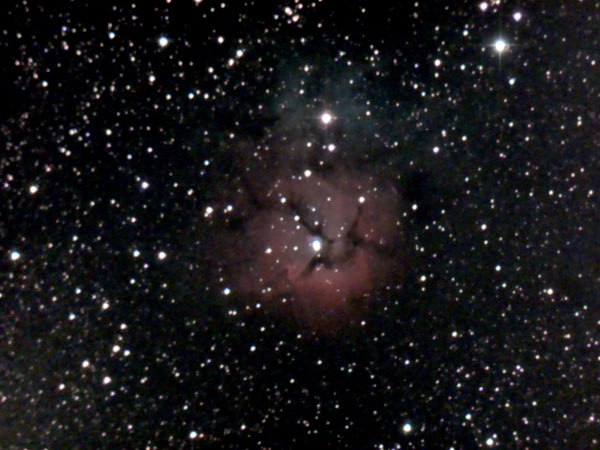 |
Is called Trifid Nebula because it consists of three parts. |
| M 21 | Sagittarius | OC | 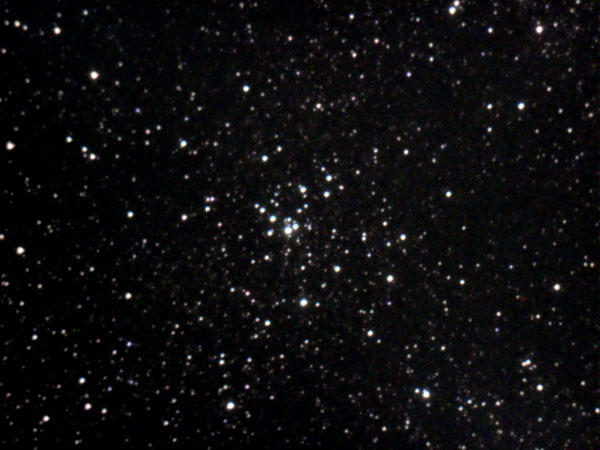 |
Open star cluster that is given little attention | |
| M 22 | Sagittarius | GC | 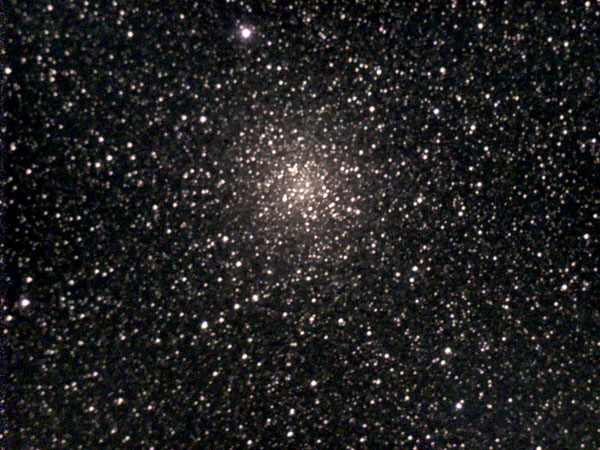 |
Nice globular cluster, one of the largest ones, larger than M 5 | |
| M 23 | Sagittarius | OC | 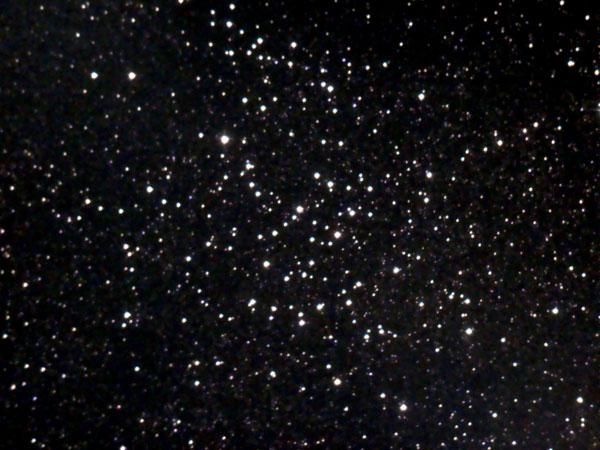 |
Large open star cluster (nearly moon size) | |
| M 24 | Small Sagittarius Cloud | Sagittarius | SC | 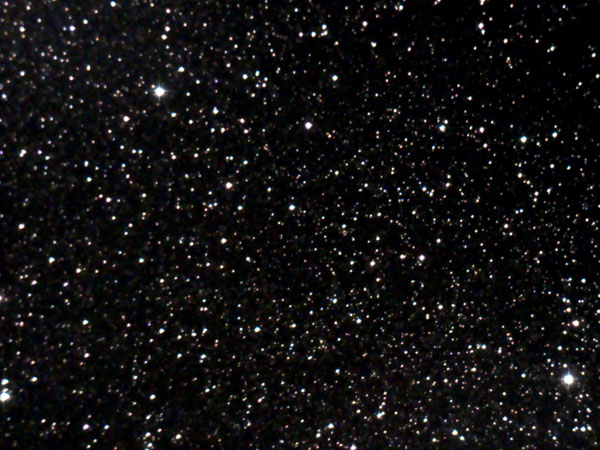 |
Part of the Milky Way, too large for the eVscope |
| M 25 | Sagittarius | OC | 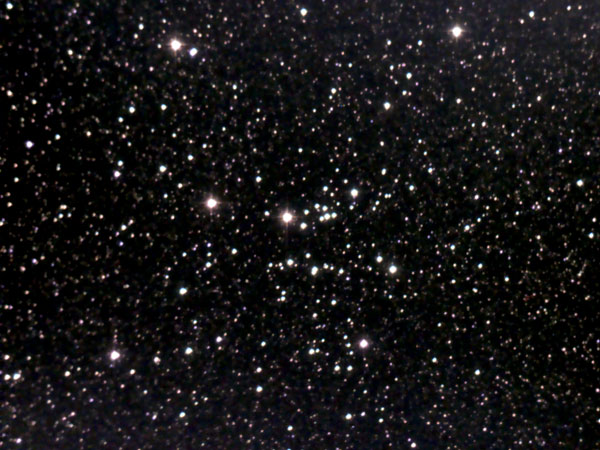 |
More of a "classical object for binoculars" | |
| M 26 | Scutum | OC | 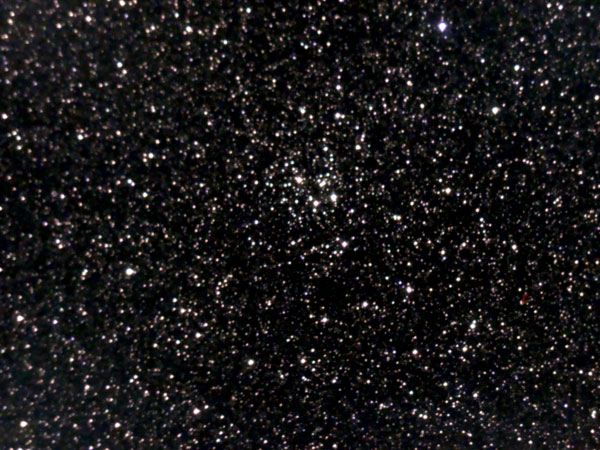 |
One of the more inconspicuous star clusters | |
| M 27 | Dumbbell Nebula | Vulpecula | GN | 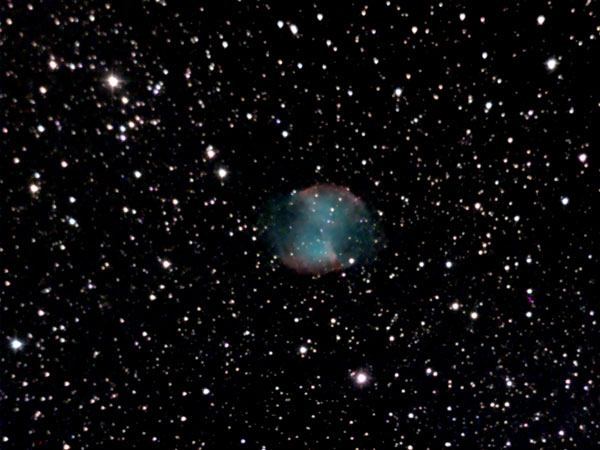 |
One of the most beautiful nebulae for me |
| M 28 | Sagittarius | GC | 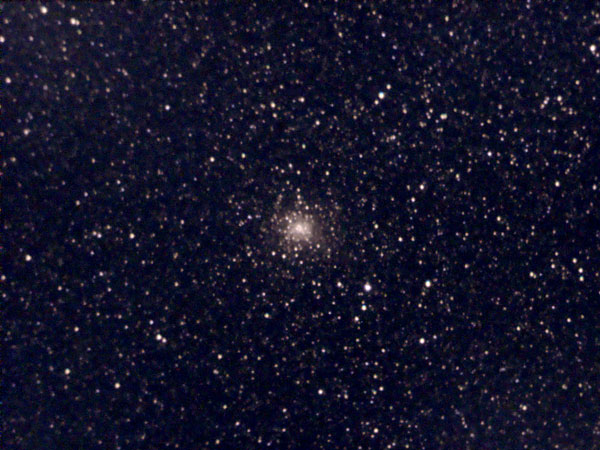 |
Smaller than the nearby M 22 | |
| M 29 | Cygnus | OC | 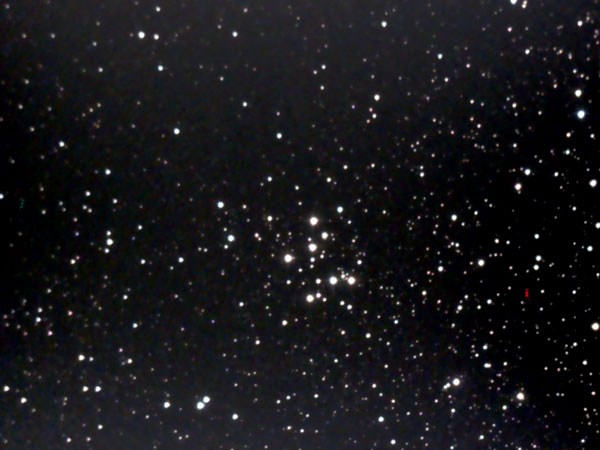 |
Pattern created from only a few stars | |
| M 30 | Capricornus | GC | 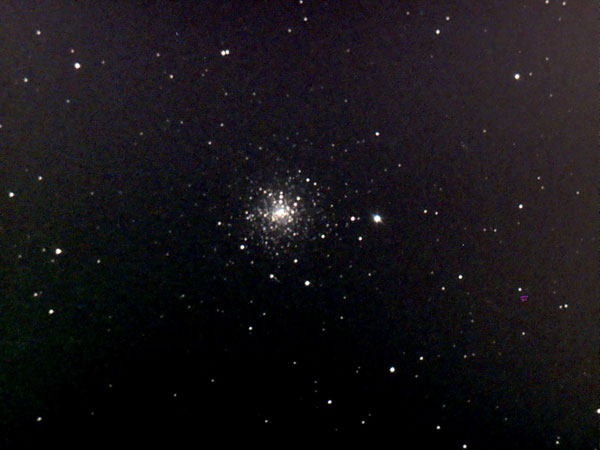 |
According to Stoyan, a typical globular star cluster that cannot be resolved in small telescopes. In the eVscope this is manifested by the very bright core. | |
| M 31 | Andromeda Galaxy | Andromeda | G | 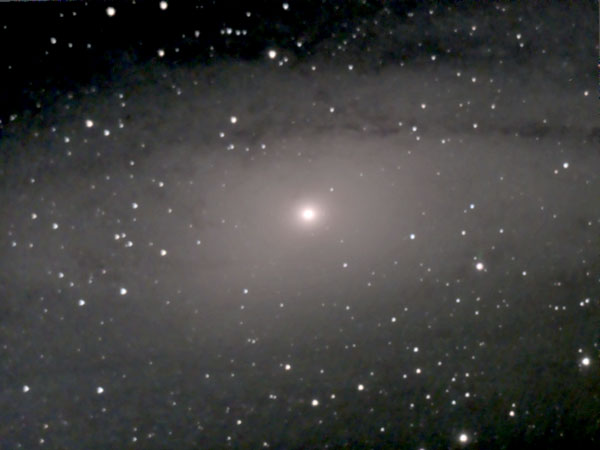 |
Too large for the eVscope's field of view |
| M 32 | Andromeda | G | 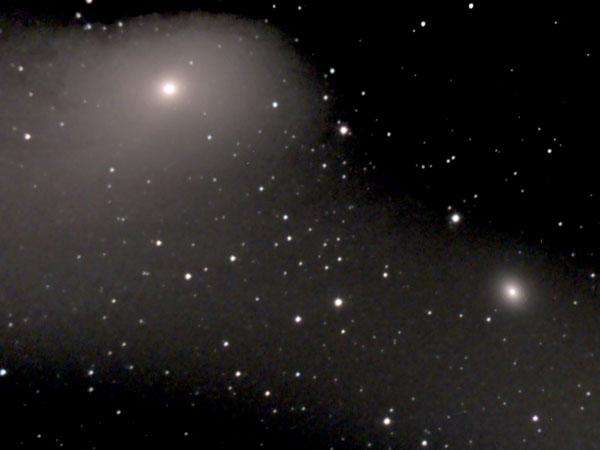 |
Satellite galaxy of M 31 | |
| M 33 | Triangulum Galaxy | Triangulum | G | 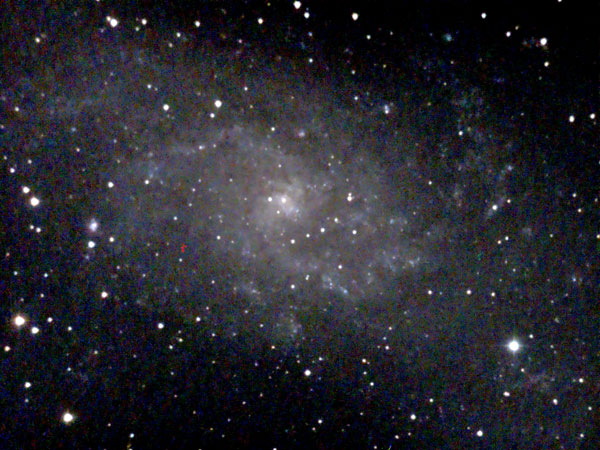 |
Very faint, details recognizable only after longer duration in EV mode |
| M 34 | Perseus | OC | 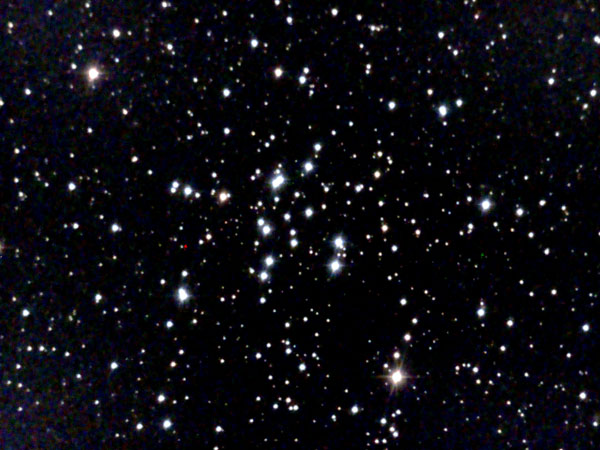 |
Large and nice open star cluster, reminds me of M 41 | |
| M 35 | Gemini | OC | 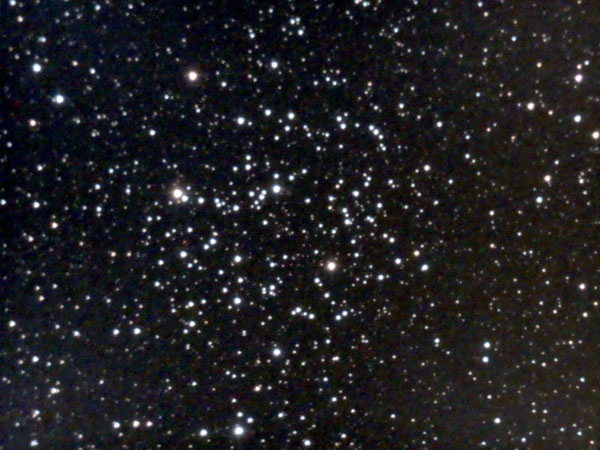 |
Large and nice open star cluster | |
| M 36 | Auriga | OC | 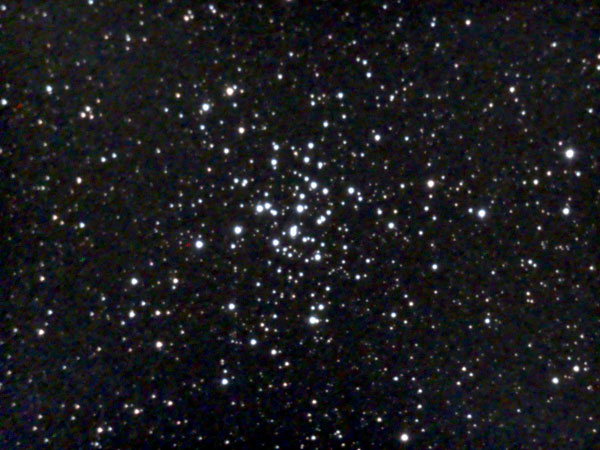 |
Nice open star cluster, smaller than M 35 | |
| M 37 | Auriga | OC | 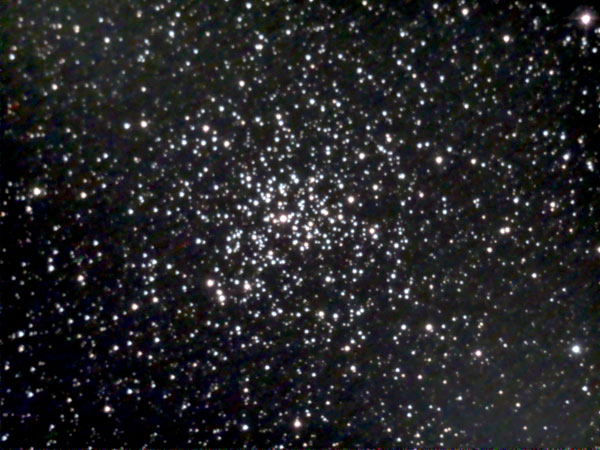 |
Nice, very dense open star cluster | |
| M 38 | Auriga | OC | 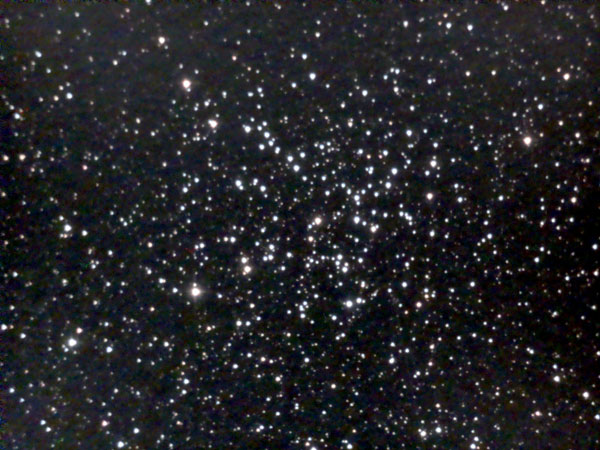 |
Nice open star cluster, larger than M 36, not as dense as M 37 | |
| M 39 | Cygnus | OC | 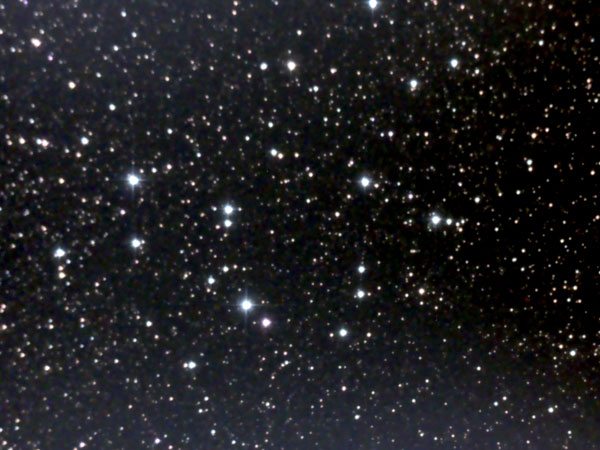 |
Few stars | |
| M 40 | Winnecke 4 | Ursa Major | DS | 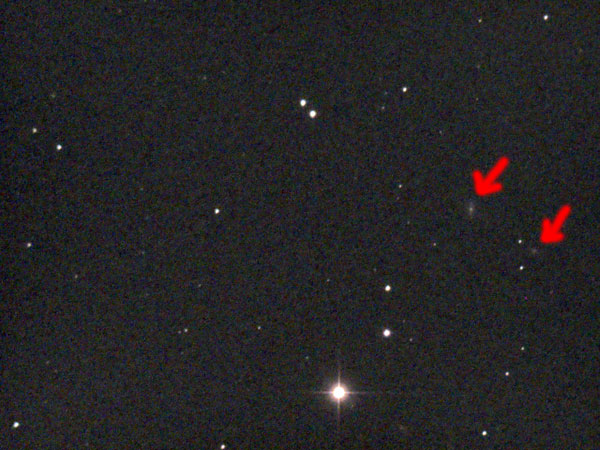 |
Optical double star; nearby are three small galaxies (NGC 4284, NGC 4290, PGC 39934) |
| M 41 | Canis Major | OC | 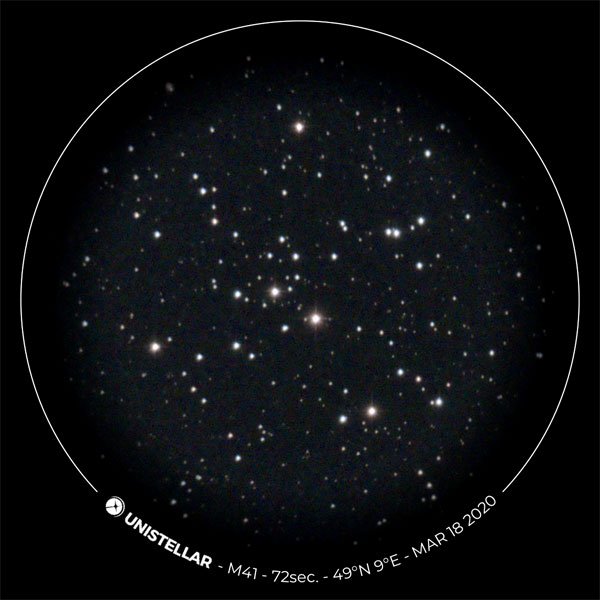 |
Large and nice open star cluster, reminds me of M 34; not as dense as M 35-38 | |
| M 42 | Orion Nebula | Orion | GE | 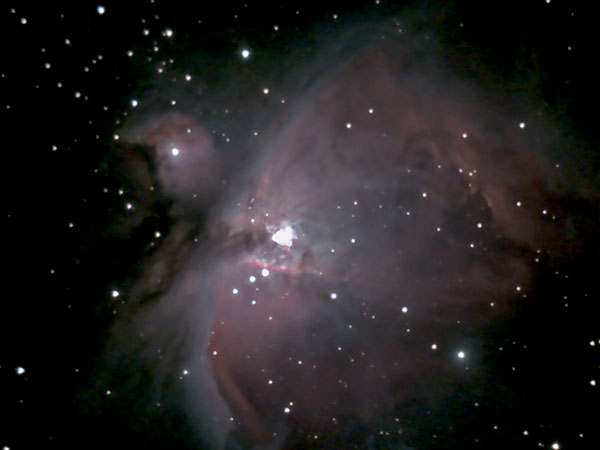 |
Too large, somewhat blurry, Trapezium mostly washed out |
| M 43 | De Mairan's Nebula | Orion | GE | 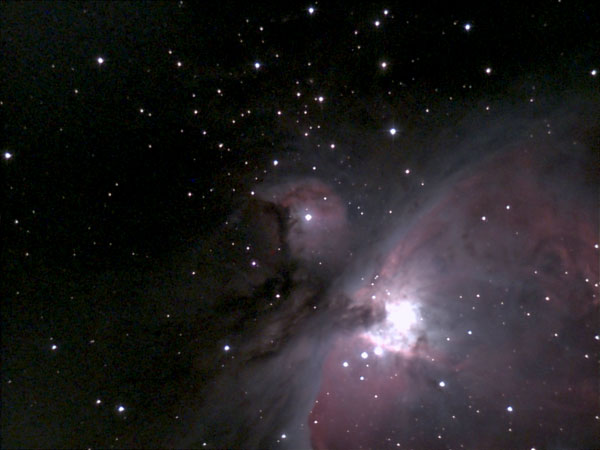 |
Part of M 42 |
| M 44 | Beehive, Praesepe | Cancer | OC | 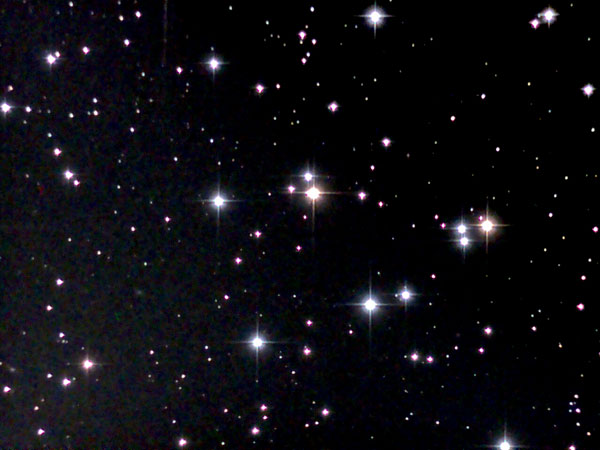 |
Too large for the eVscope, a few bright stars |
| M 45 | Pleiades, Seven Sisters | Taurus | OC | 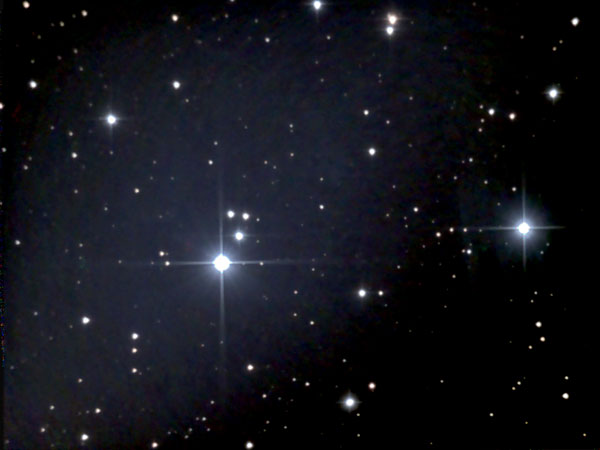 |
Too large for the eVscope's field of view |
| M 46 | with NGC 2438 (PN) | Puppis | OC | 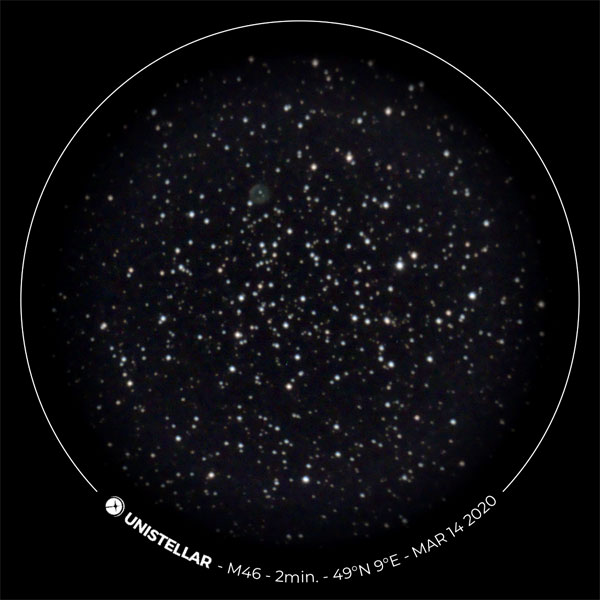 |
Large; NGC 2438 (PN) on the photo! |
| M 47 | Puppis | OC | 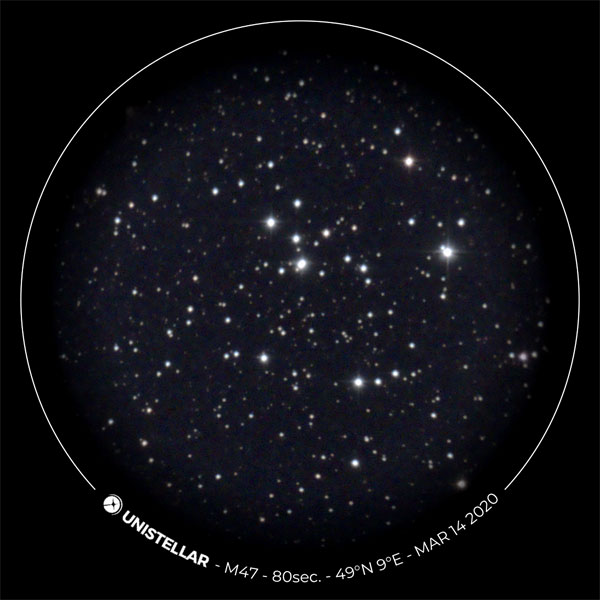 |
Large, contains some large bright stars | |
| M 48 | Hydra | OC | 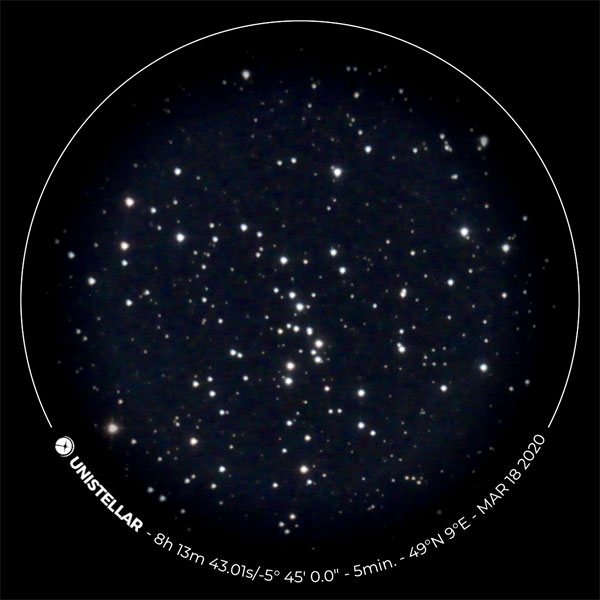 |
Large, many bright stars, at the center many nearby stars... | |
| M 49 | with NGC 4470 (part of Arp 134) | Virgo | G | 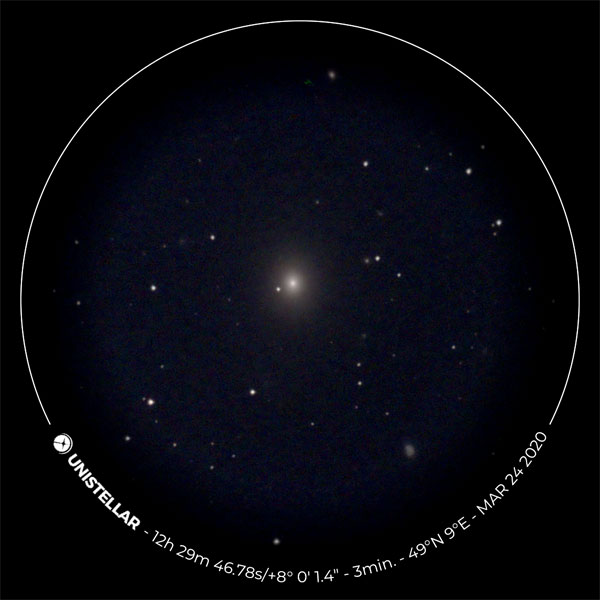 |
Elliptical galaxy with several small galaxies in the field of view |
| M 50 | Monoceros | OC | 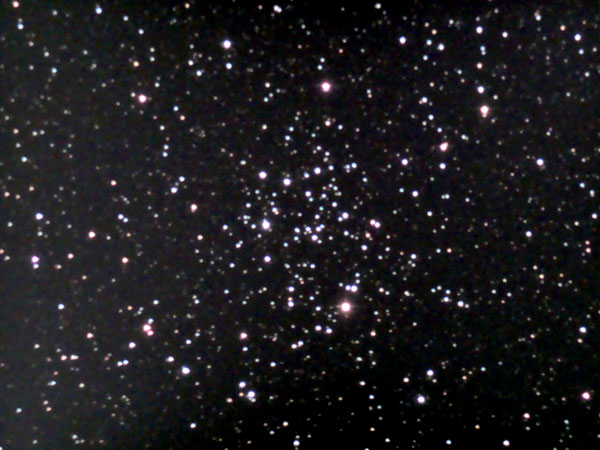 |
Nice large open star cluster with many fine and some bright stars | |
| M 51 | Whirlpool Galaxy, with NGC 5195 | Canes Venatici | G | 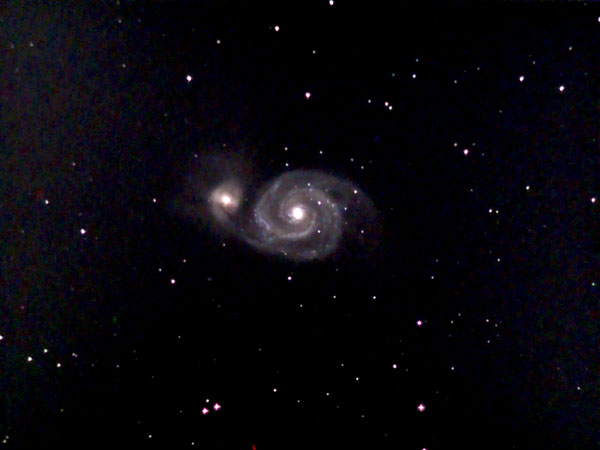 |
Nice spiral galaxy with connected satellite galaxy NGC 5195 |
| M 52 | Cassiopeia | OC | 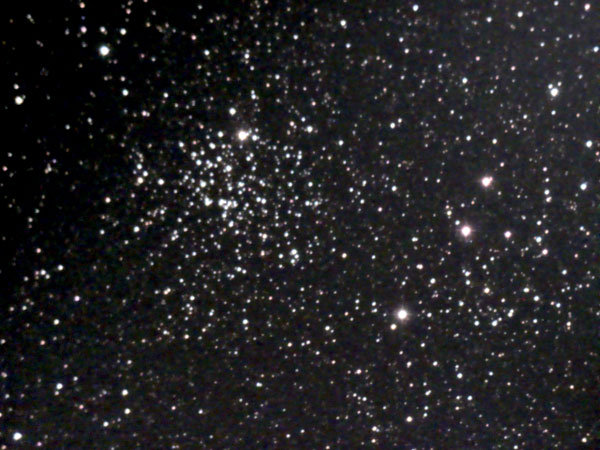 |
Medium-sized open star cluster | |
| M 53 | Coma Berenices |
GC | 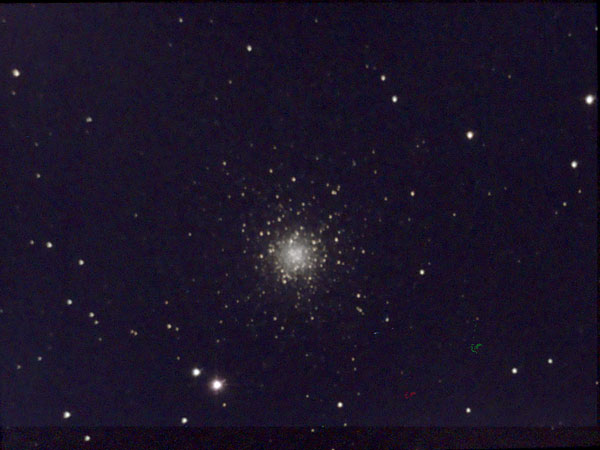 |
One of the smaller globular star clusters | |
| M 54 | Sagittarius | KS | 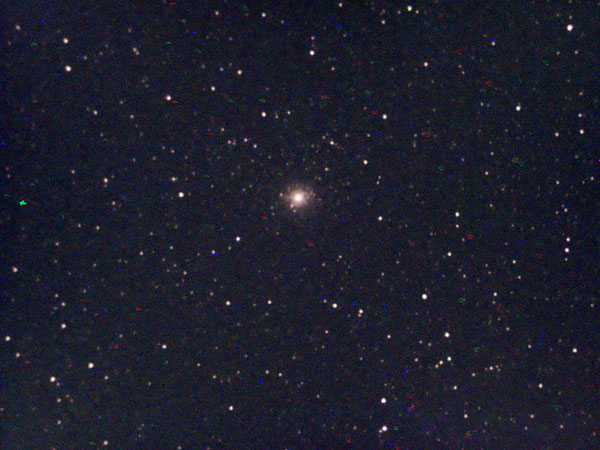 |
The left one of the three globular star clusters M 54, M 70, and M 69. According to Stoyan, it is not a globular star cluster of our galaxy, but belongs to a dwarf galaxy, which is just being "cannibalized" by our galaxy. | |
| M 55 | KS | 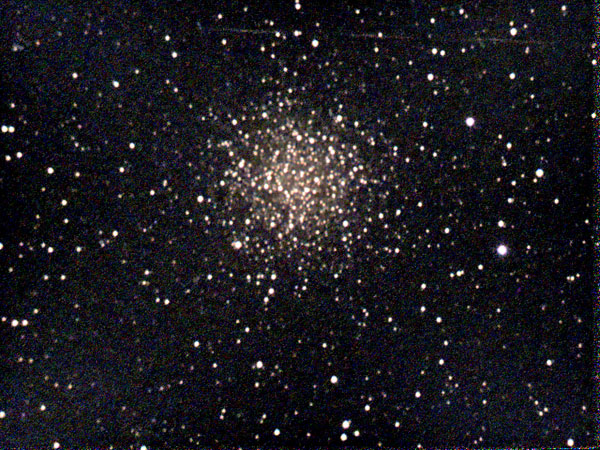 |
Larger globular star cluster, very far in the south | ||
| M 56 | Lyra | GC | 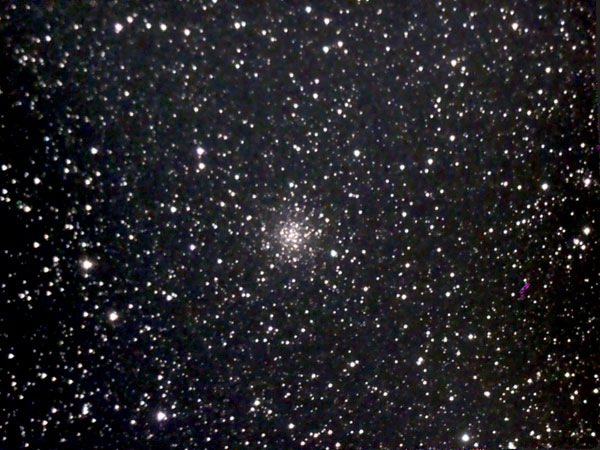 |
One of the smaller globular star clusters | |
| M 57 | Ring Nebula | Lyra | PN | 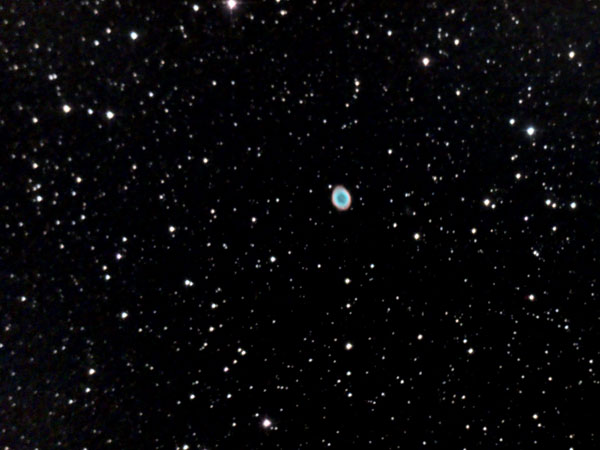 |
Ring clearly visible |
| M 58 | Virgo | G | 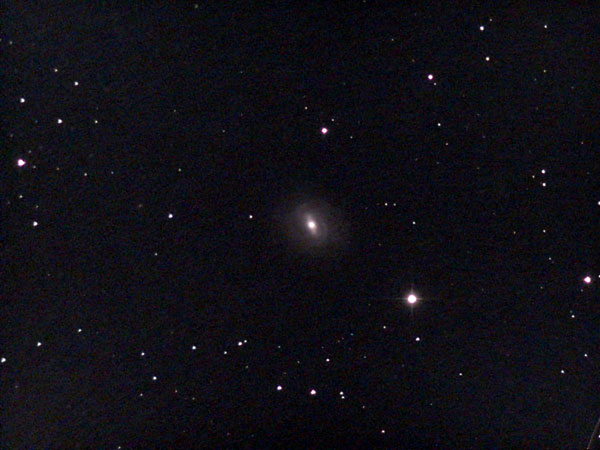 |
Barred spiral galaxy, but hard to see in the eVscope | |
| M 59 | with M 60 if at the edge | Virgo | G | 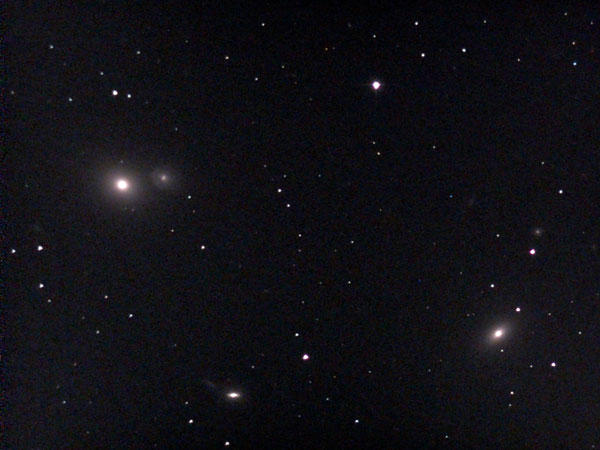 |
Elliptical galaxy, smaller than M 58; at a distance of 0.4° from M 60 (can be seen together with M 60 with a suitable section) |
| M 60 | with NGC 4647, NGC 4638/37; with M 59 if at the edge | Virgo | G |  |
Elliptical galaxy with satellite NGC 4647 (spiral galaxy); galaxies NGC 4638/37 and IC 809 also on some of the photos (and M 59 with a suitable section) |
| M 61 | Virgo | G | 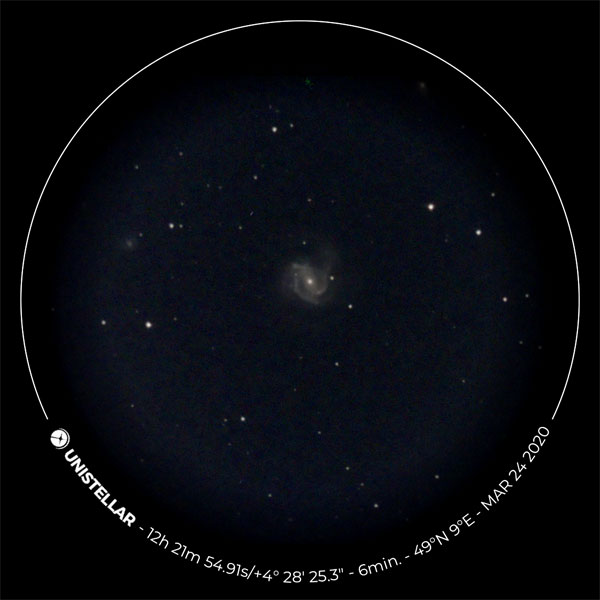 |
Spiral galaxy, small and fine spiral in the eVscope; on May 6, 2020, the new supernova SN 2020jfo within it was discovered. | |
| M 62 | Ophiuchus | GC | 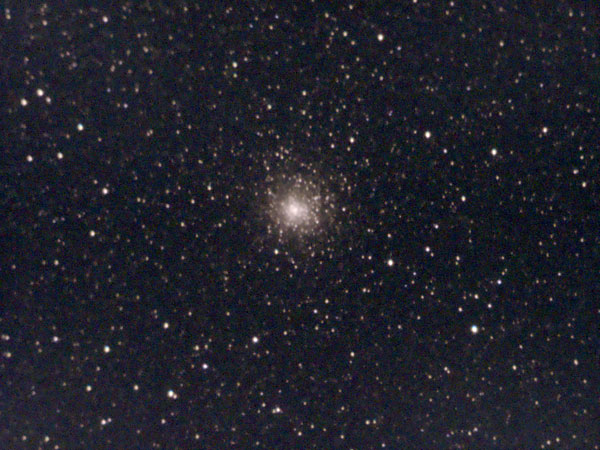 |
Is located near the horizon, therefore hard to observe | |
| M 63 | Sunflower Galaxy | Canes Venatici | G | 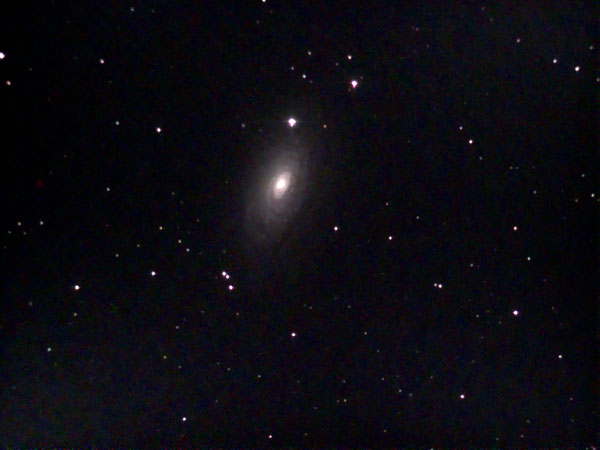 |
Nice, elongated spiral galaxy, somewhat larger |
| M 64 | Black Eye Galaxy | Coma Berenices | G | 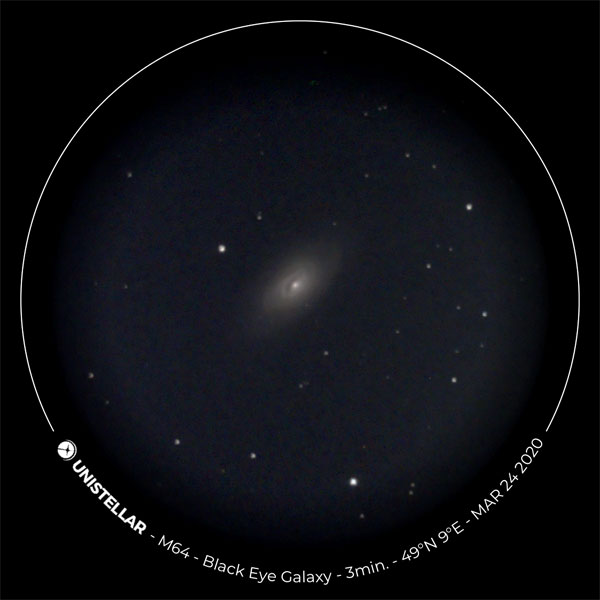 |
Impressive spiral galaxy with unique look, somewhat larger |
| M 65 | with M 66 | Leo | G | 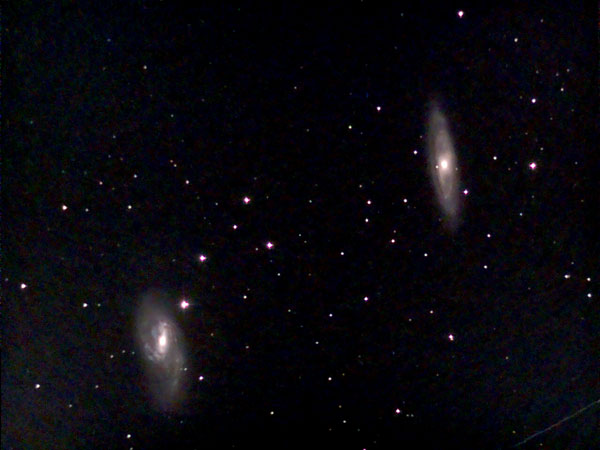 |
Thin, elongated spiral galaxy, spiral hard to see; part of the Leo triplet (with M 66 and NGC 3628); with M 66 in the rectangular field of view of the eVscope |
| M 66 | with M 65 | Leo | G |  |
Elongated spiral galaxy, spiral visible; part of the Leo triplet (with M 65 and NGC 3628); with M 65 in the rectangular field of view of the eVscope |
| M 67 | Cancer | OC | 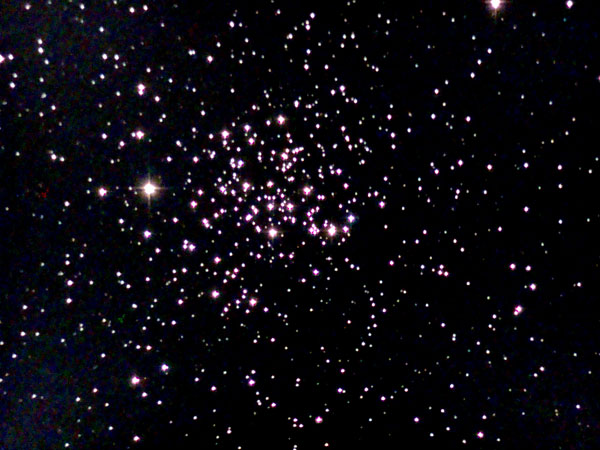 |
Large, nice cluster with a few bright stars and many not so bright ones | |
| M 69 | Sagittarius | GC | 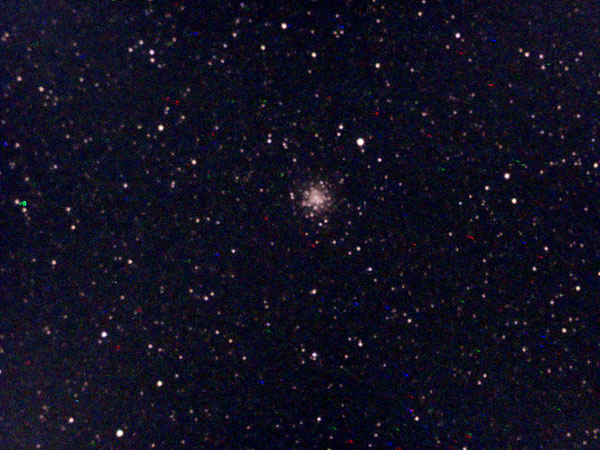 |
Is located farthest to the West of the three globular clusters M 54, M 70, and M 69, klein. | |
| M 70 | Sagittarius | GC | 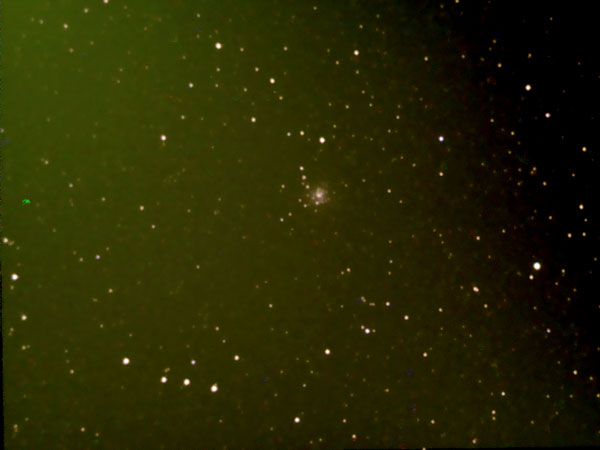 |
Is located in the middle one of the three globular clusters M 54, M 70, and M 69, small. Up to now, only photographed "disturbed". | |
| Sagitta | GC | 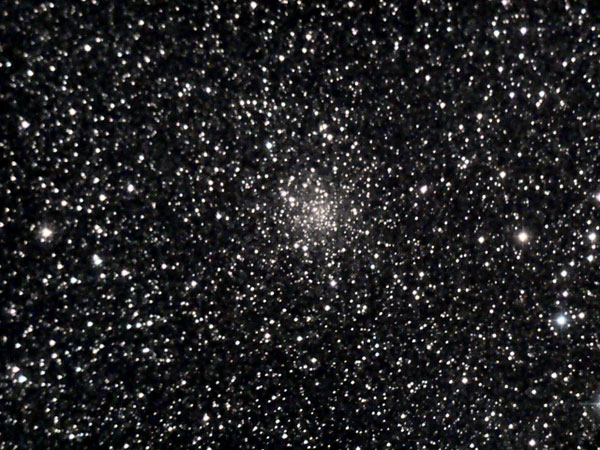 |
According to Stoyan, an unusually loose globular star cluster. | ||
| M 72 | Aquarius | GC | 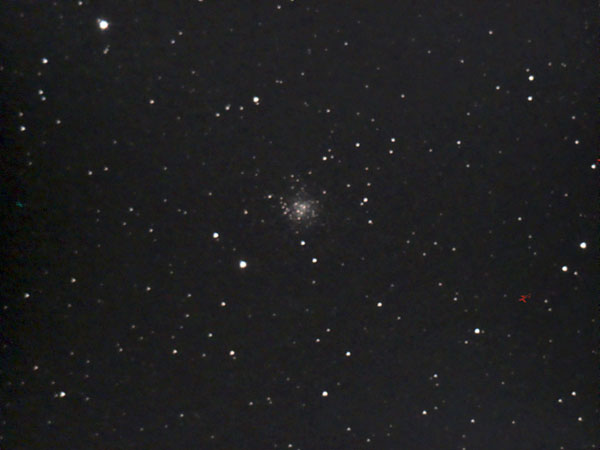 |
According to Stoyan, one of the more inconspicuous globular star clusters | |
| M 73 | Aquarius | OC | 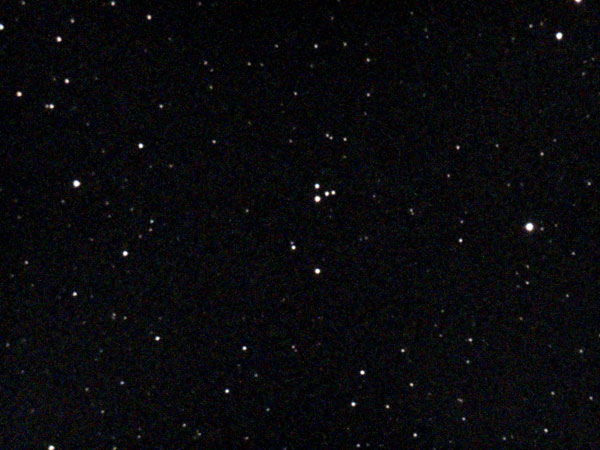 |
According to Stoyan, one of the more obscure Messier objects, but worth visiting | |
| M 74 | Pisces | G | 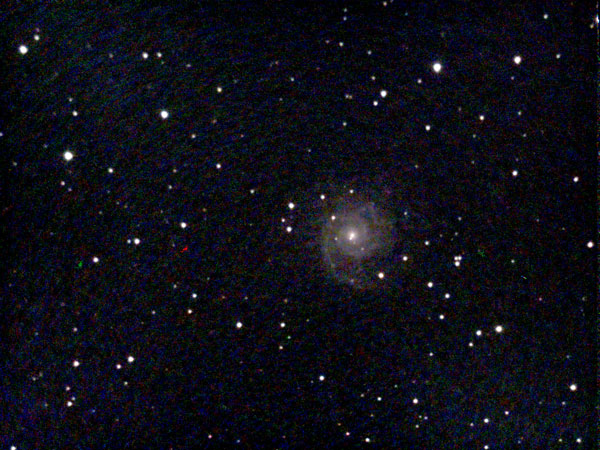 |
Nice spiral galaxy, but in the eVscope just a faint dot/glow... | |
| M 75 | Sagittarius | GC | 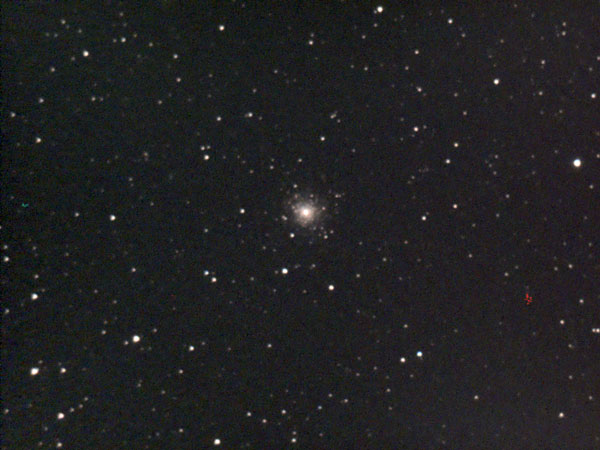 |
According to Stoyan, following M 54, the farthest away globular star cluster in Messier's catalogue, which explains its low brightness and size. | |
| M 76 | Small Dumbbell Nebula | Perseus | PN | 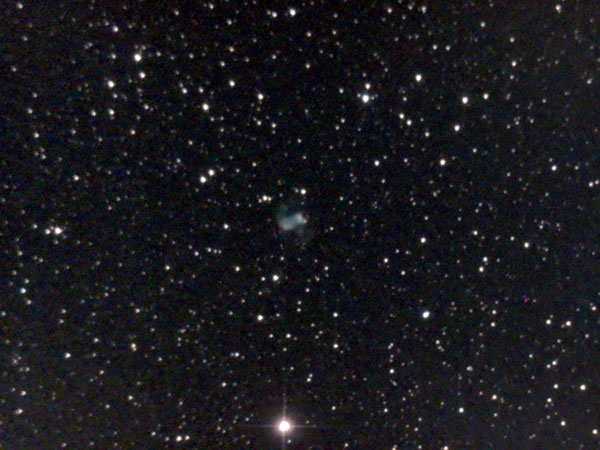 |
Small, colorful, rectangular |
| M 77 | Cetus | G | 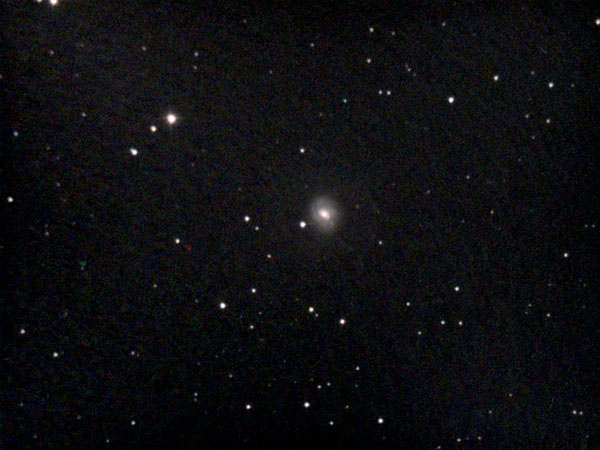 |
Spiral galaxy, a bit more to see than with M 74, but in the end just a soft dot in the eVscope | |
| M 78 | Orion | GE | 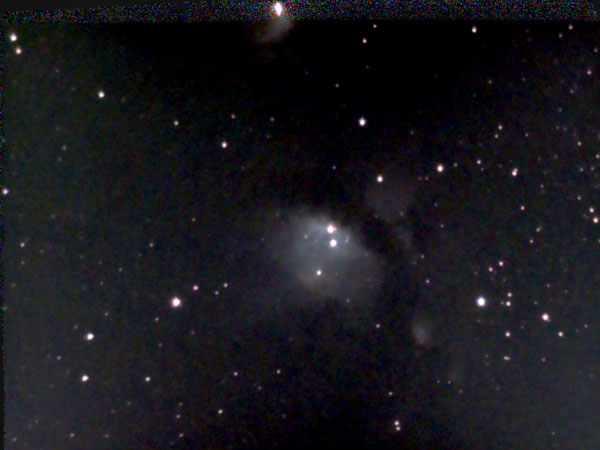 |
Faint, but identifiable using two stars; around new moon, I was able to see more details | |
| M 79 | Lepus | GC | 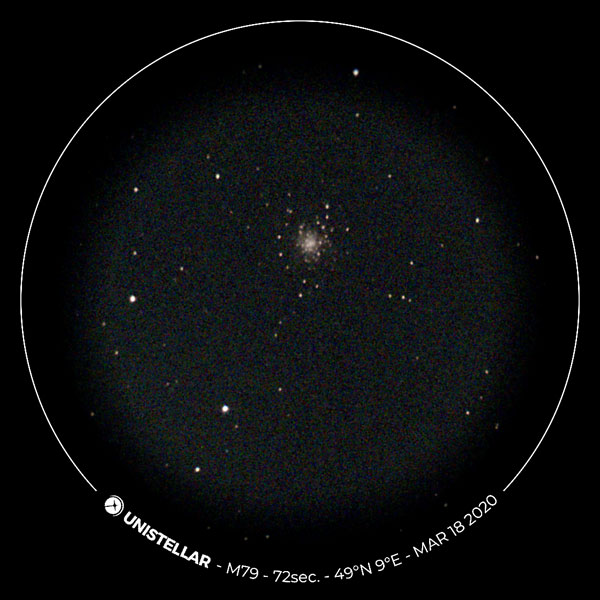 |
Smaller globular star cluster | |
| M 80 | Scorpius | GC | 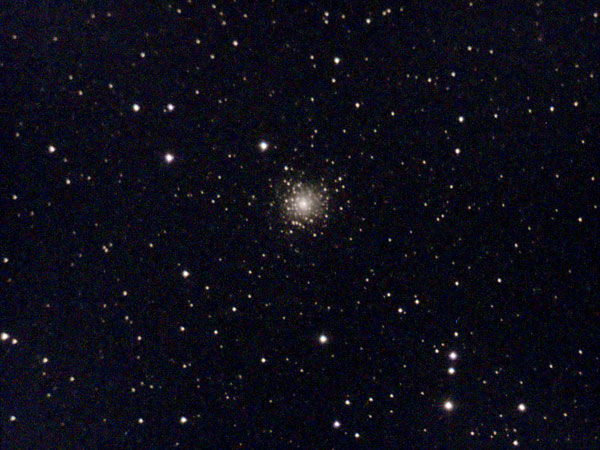 |
One of the fainter globular cluster, but nevertheless worthwhile; located almost as southernly as M 4. | |
| M 81 | Bode Galaxy | Ursa Major | G | 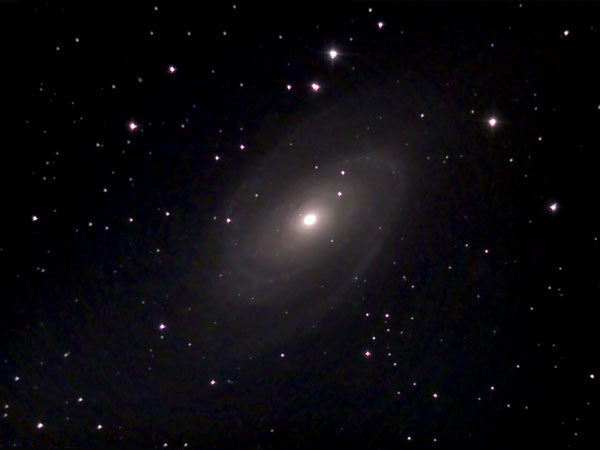 |
Nice spiral galaxy; the spiral is not very conspicuous in the eVscope |
| M 82 | Cigar Galaxy | Ursa Major | G | 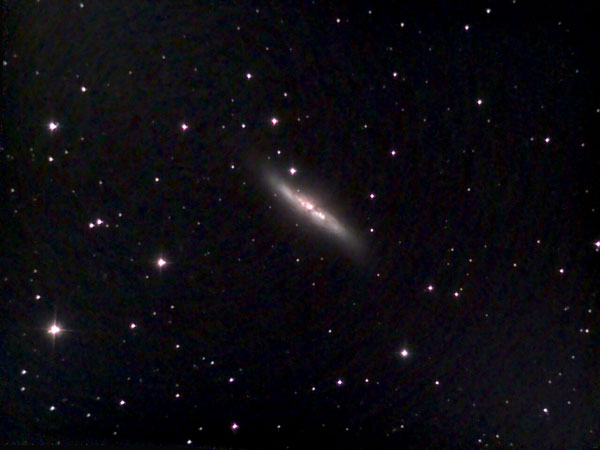 |
Elongated irregular galaxy (cigar), dirsturbed by an encounter with M 81 |
| M 84 | with M 86, NGC 4402, NGC 4387 | Virgo | G | 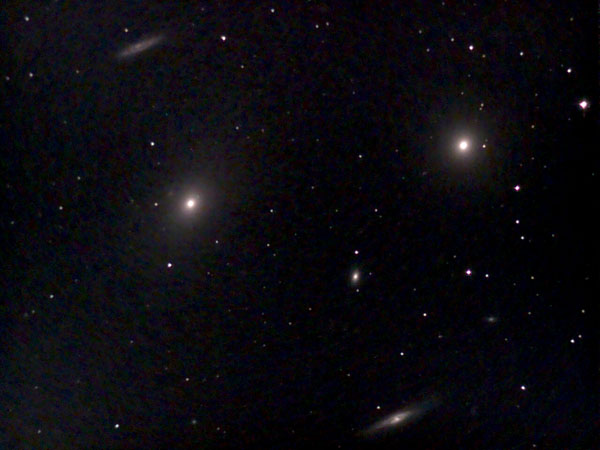 |
Elliptical galaxy that can be seen together with M 86 in the eVscope's field of view (+ NGC 4387 and a bit of NGC 4402); forms together with M 86 and NGC 4387 the "Great Galactic Face" (the latter is best accessed via NGC 4387). |
| M 85 | with NGC 4394 and supernova 2020nlb | Coma Berenices | G | 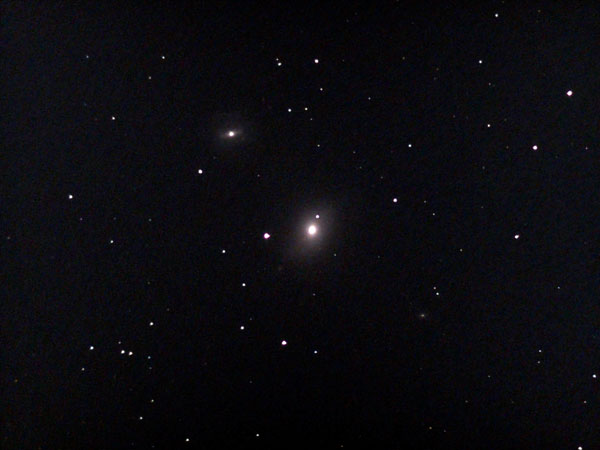 |
Elliptical galaxy that can be seen together with the galaxy NGC 4394 (barred spiral) in the same field of view of the eVscope; the new supernova 2020nlb (discovered on June 25, 2020) could be seen well, but was gone nearly a year later |
| M 86 | with M 84, NGC 4402, NGC 4387 | Virgo | G |  |
Observed alone and together with M 84 in the field of view (+ NGC 4387 and a bit of NGC 4402); forms together with M 84 and NGC 4387 the "Great Galactic Face." |
| M 87 | with NGC 4478 and sometimes NGC 4476; with jet stream | Virgo | G | 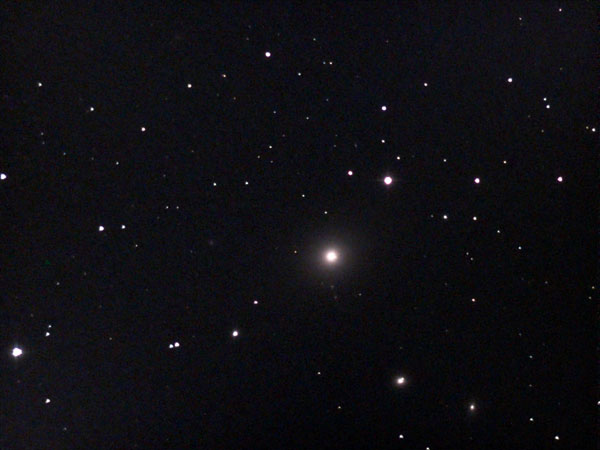 |
Elliptical galaxy, seen together with NGC 4478 in the eVscope's field of view - and in the rectangular format also NGC 4476; has a jet stream; center of the Virgo galaxy cluster |
| M 88 | Coma Berenices | G | 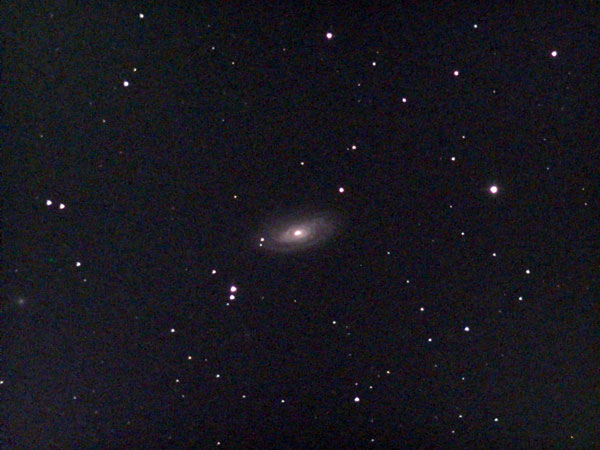 |
Spiral galaxy, spiral can be recognized | |
| M 89 | Virgo | G | 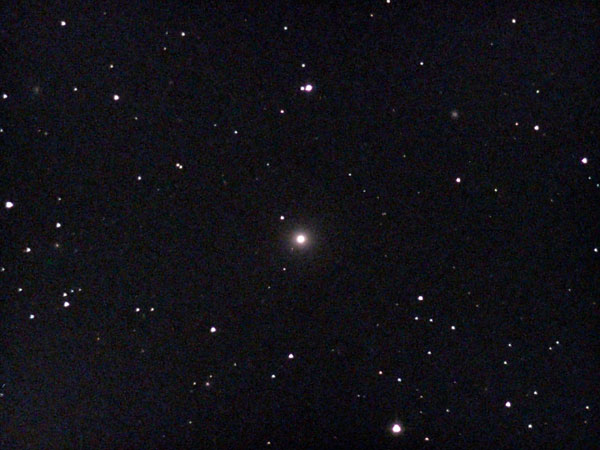 |
Elliptical galaxy, a small bright and fuzzy dot... | |
| M 90 | Virgo | G | 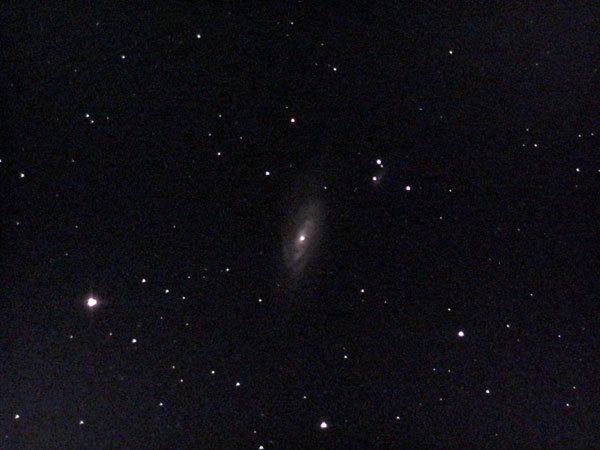 |
Spiral galaxy, spiral can be recognized | |
| M 91 | Coma Berenices | G | 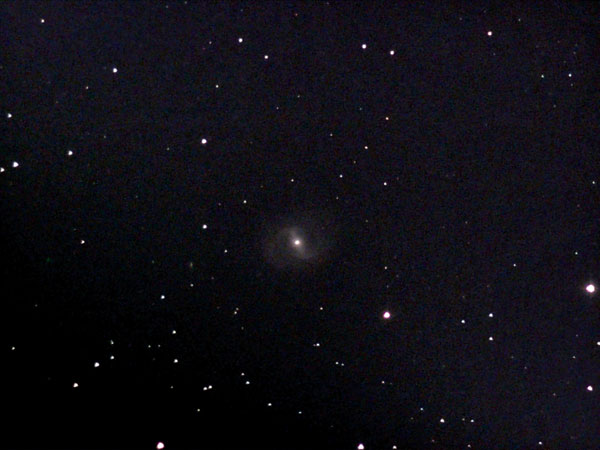 |
Barred spiral galaxy, bar can be recognized, spiral not so much... | |
| M 92 | Hercules | GC | 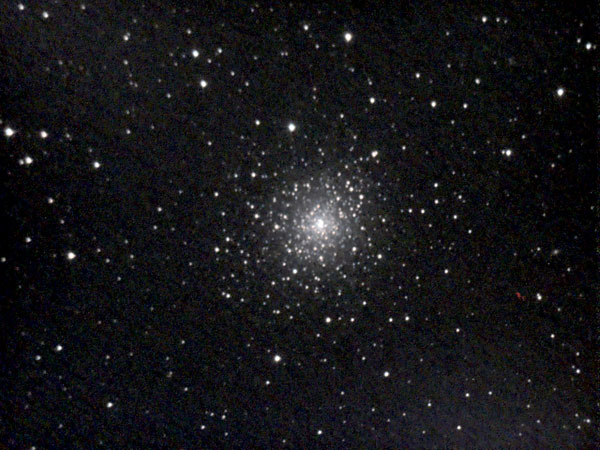 |
Nice globular star cluster, smaller than M 13, but brighter core | |
| M 93 | Puppis | OC | 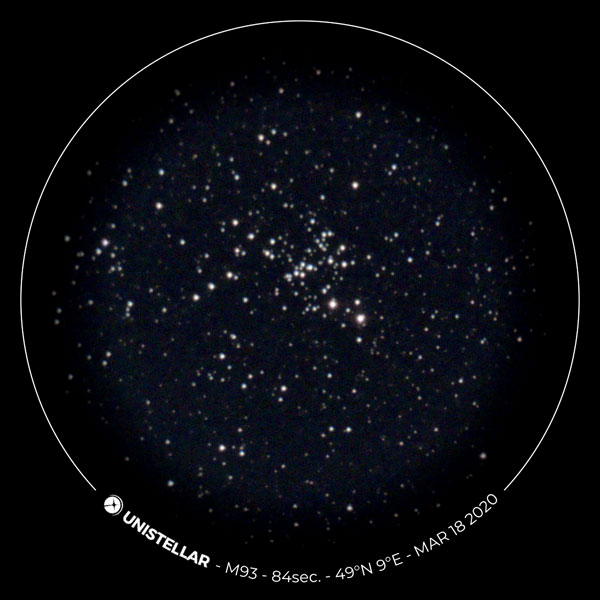 |
Nice open star cluster with compact center | |
| M 94 | Croc's Eye | Canes Venatici | G | 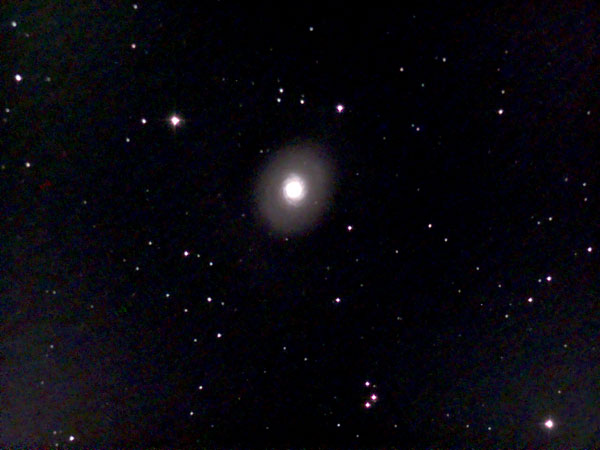 |
Small spiral galaxy, the spiral appears more like a nebula |
| M 95 | Leo | G | 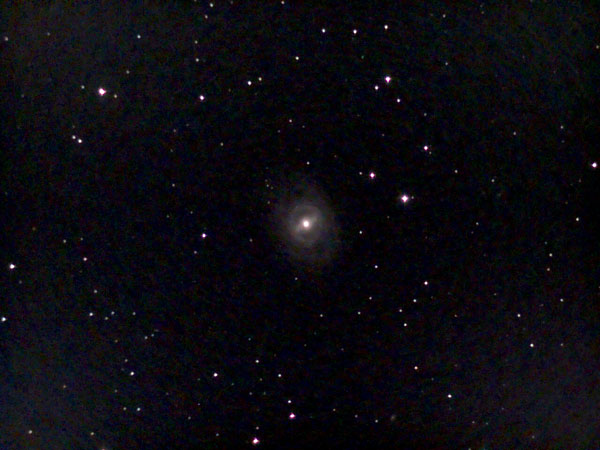 |
Small barred spiral galaxy, relatively faint, but the bar is visible. Forms a pair with M 96, but too far away for the eVscope (40'). | |
| M 96 | Leo | G | 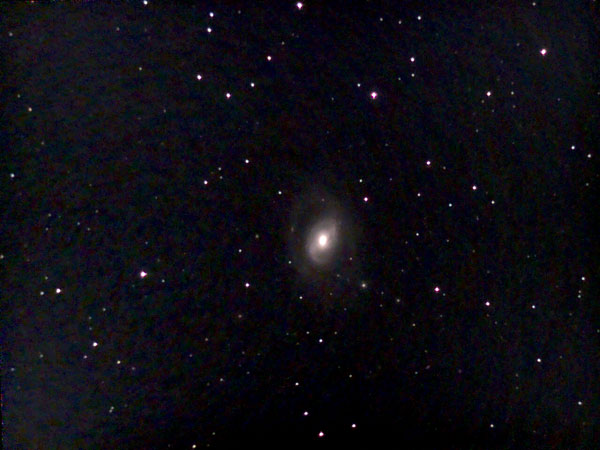 |
Spiral galaxy, forms a pair with M 95, but too far away for the eVscope (40'). | |
| M 97 | Owl Nebula | Ursa Major | PN | 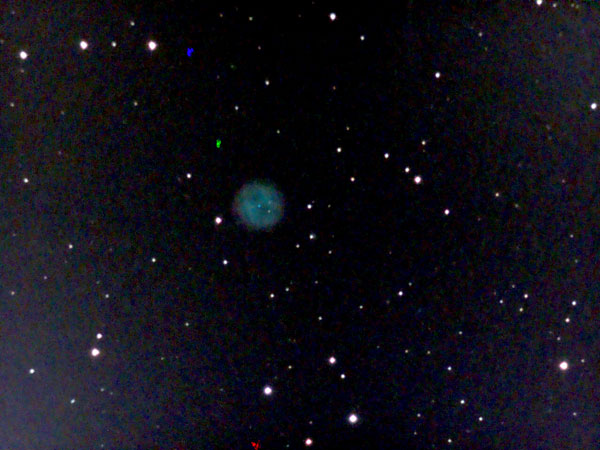 |
Small green dot with two dark spots |
| M 98 | Coma Berenices | G | 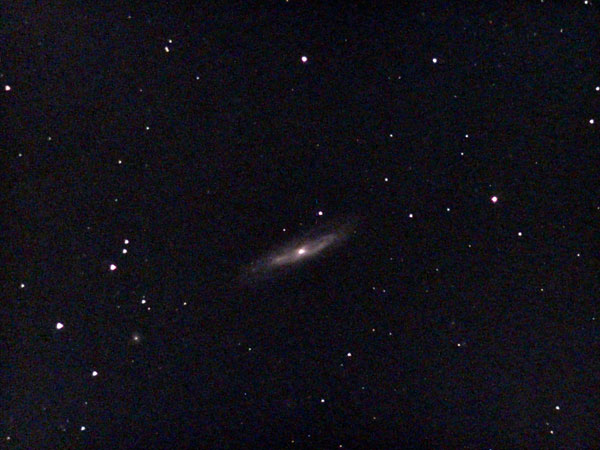 |
Spiral galaxy seen edge-on, small bright core | |
| M 99 | Coma Berenices | G | 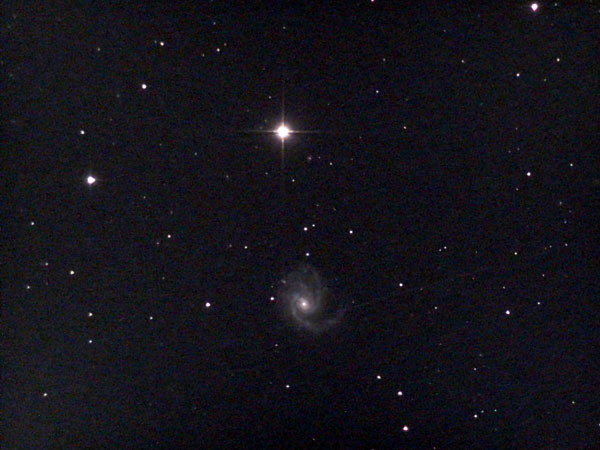 |
Spiral galaxy, almost seen face-on, similar to M 100 and M 101, but much smaller than M 101 | |
| M 100 | Coma Berenices | G | 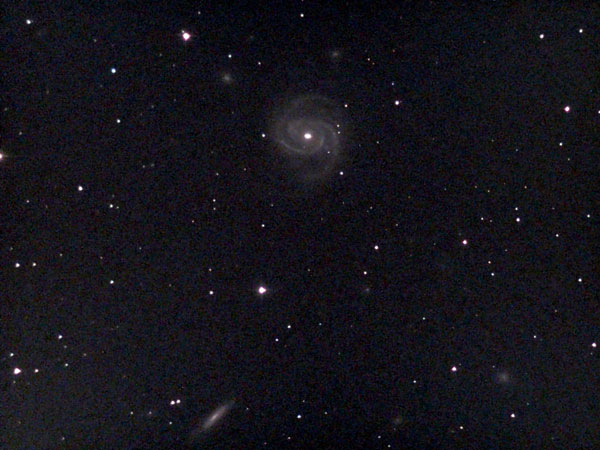 |
Spiral galaxy, almost seen face-on, similar to M 99 and M 101, but much smaller than M 101; discovered 4-5 more galaxies on a photo! | |
| M 101 | Pinwheel Galaxy | Ursa Major | G | 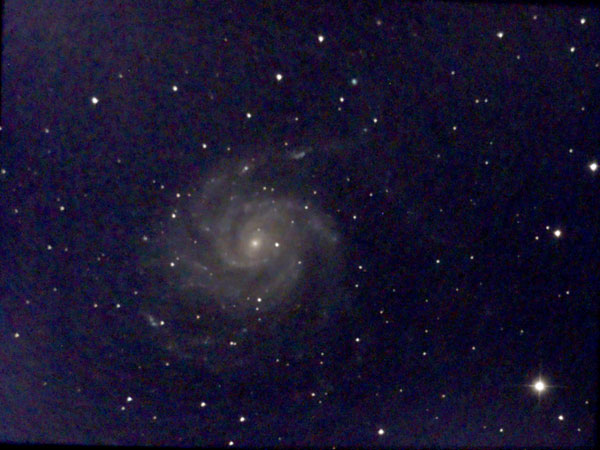 |
Spiral galaxy, seen face-on, similar to M 99 and M 100, but much larger than both; quite impressive in the eVscope |
| M 102 | Spindle Galaxy | Draco | G | 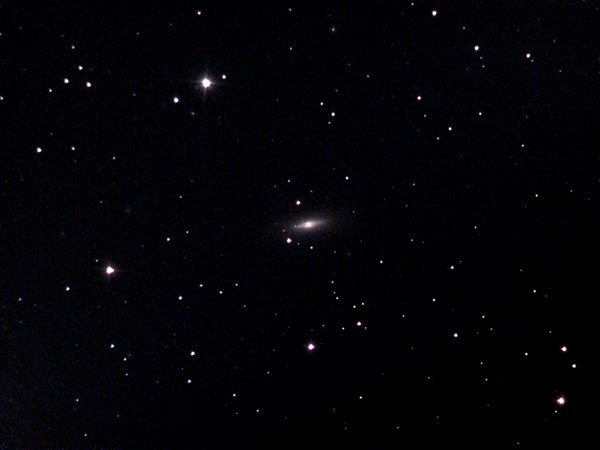 |
Seen edge-on; shares the name "Spindle Galaxy" with two other galaxies |
| M 103 | Casiopeia | OC | 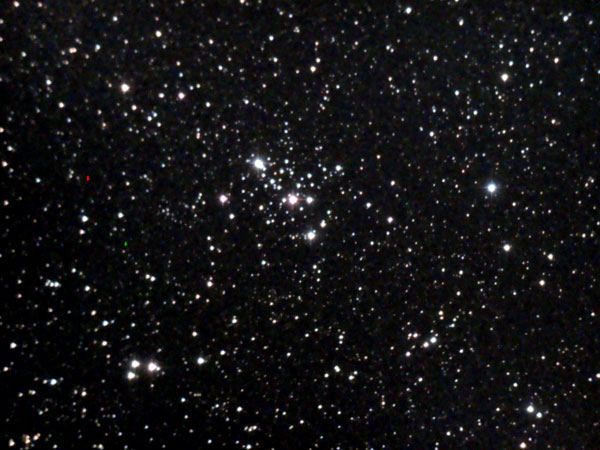 |
Open star cluster with many fine stars; the brighter stars form a triangle | |
| M 104 | Sombrero Galaxy | Virgo | G | 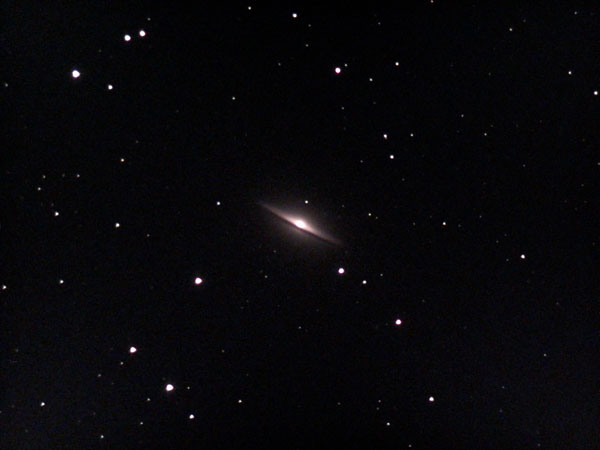 |
Spiral galaxy, seen nearly edge-on; the dust ring and the bright nucleus led to the name; very impressive in the eVscope. |
| M 105 | Leo | G |  |
Bright elliptical galaxy; can be seen together with the galaxies NGC 3384 (elliptical) and the smaller NGC 3389 (spiral) in the same field of view in the eVscope. | |
| M 106 | Canes Venatici | G | 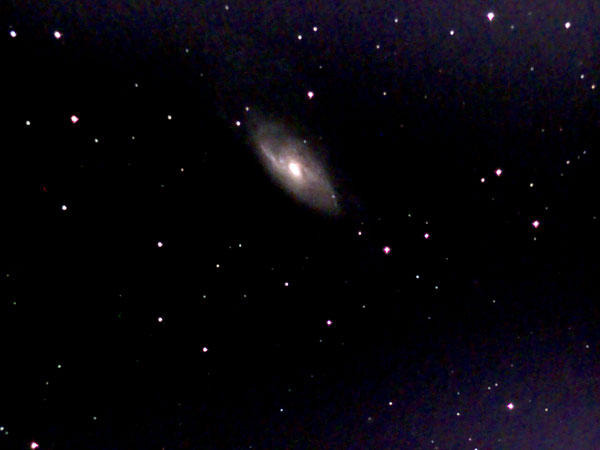 |
Larger and bright spiral galaxy with bright core; close to it there is the small spiral galaxy NGC 4248. | |
| M 107 | Ophiuchus | GC | 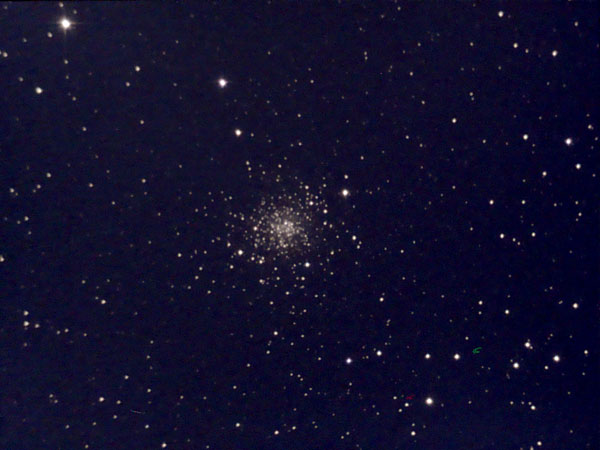 |
The faintest of the Messier globular star clusters in constellation Ophiuchus (according to Stoyan) | |
| M 108 | Ursa Major | G | 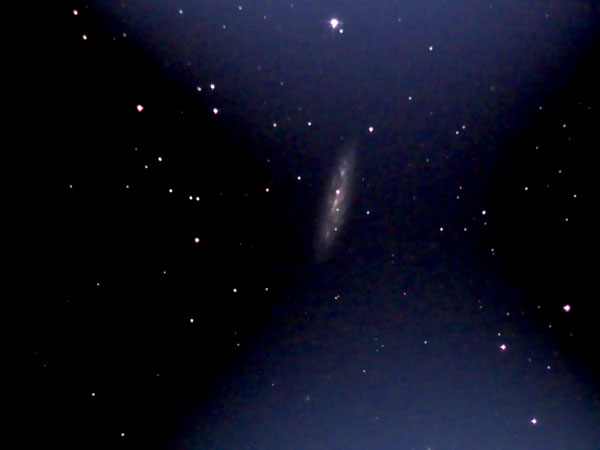 |
Barred spiral galaxy, nearly seen edge-on | |
| M 109 | Ursa Major | G | 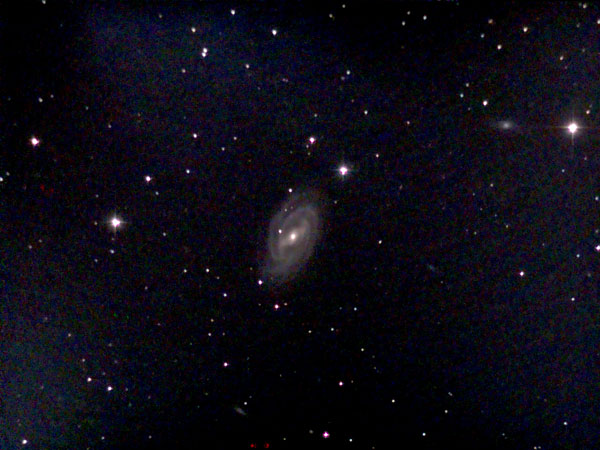 |
Barred spiral galaxy, the bar is easily recognized in the eVscope | |
| M 110 | near M 31 | Andromeda | G | 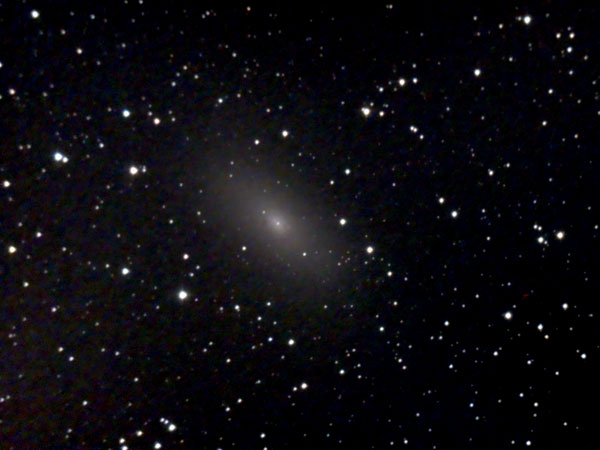 |
Satellite galaxy of M 31, fainter than M 32 (very faint...) |
Other Objects |
|||||
DSO Details |
Name, Companions | Constellation | Type | Photo | Remarks |
| B 33 | Horse Head Nebula | Perseus | DN | 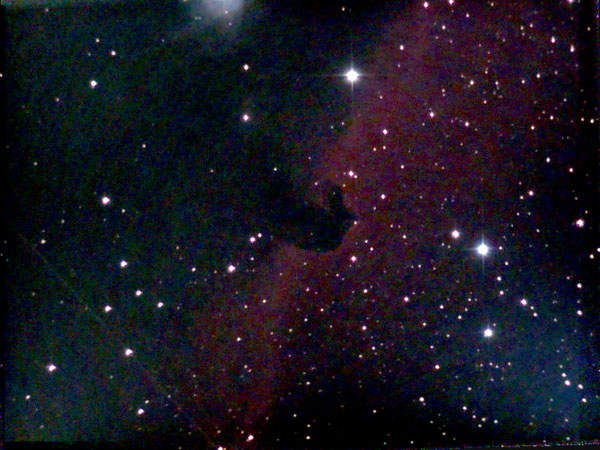 |
Always a challenge; more details after 10 minutes of exposure |
| C/2017 T2 | C/2017 T2 (Panstarrs) | --- | C | 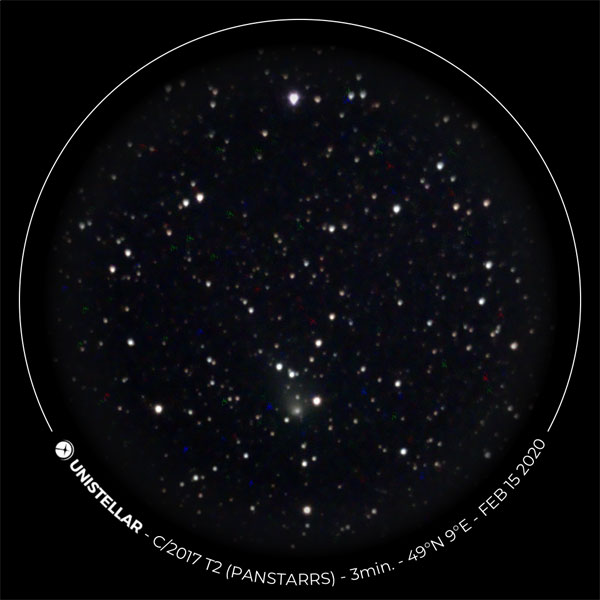 |
The comet can be recognized as such |
| C/2019 Y4 | C/2019 Y4 (Atlas) | --- | C | 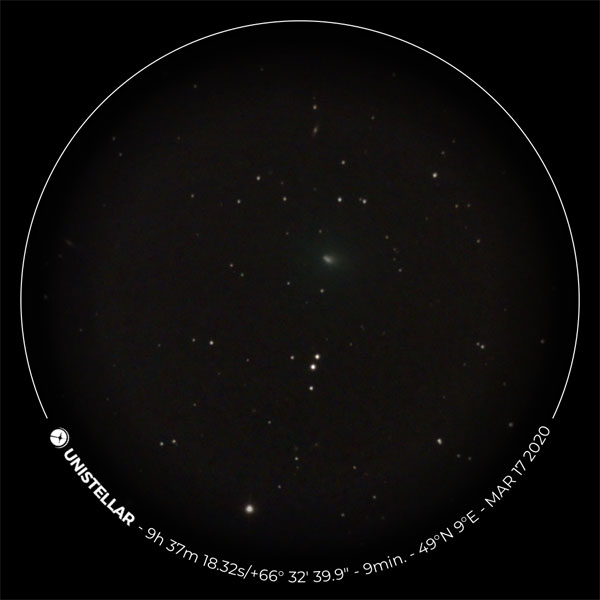 |
The comet can be recognized as such |
| C/2020 F3 | NEOWISE | --- | C | 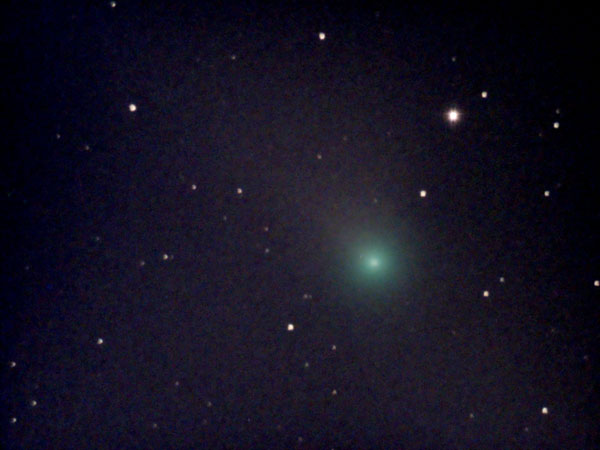 |
A nice comet, but too late in the year for better photos... |
| C 9 | Cave Nebula | Cepheus | GN | 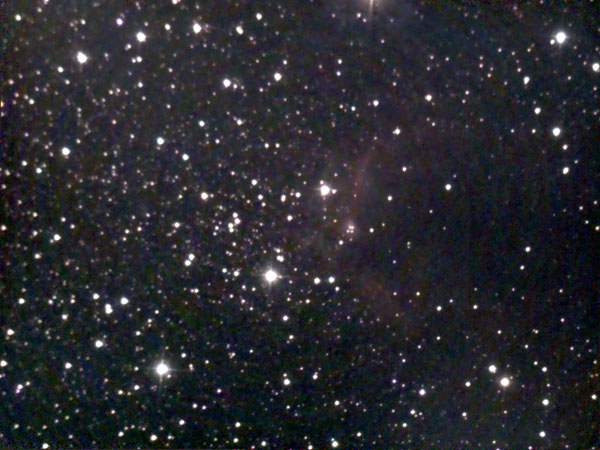 |
Large reddish nebula, faint in the eVscope |
| Cr 350 | Ophiuchus | OC | 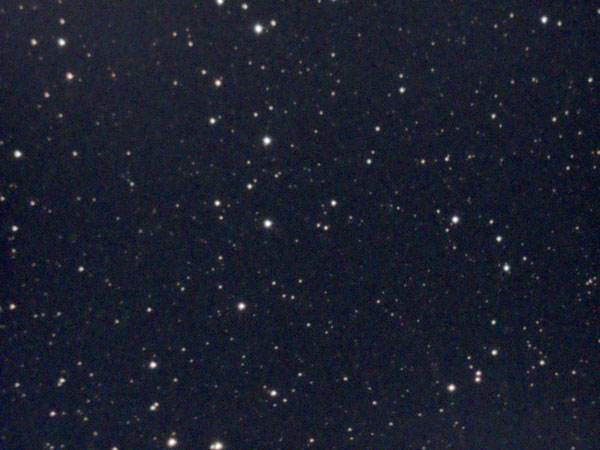 |
Very large and sparse star cluster; it is not concentrated and not well seprated from its background; too large for the eVscope. | |
| IC 10 | Cassiopeia | G | 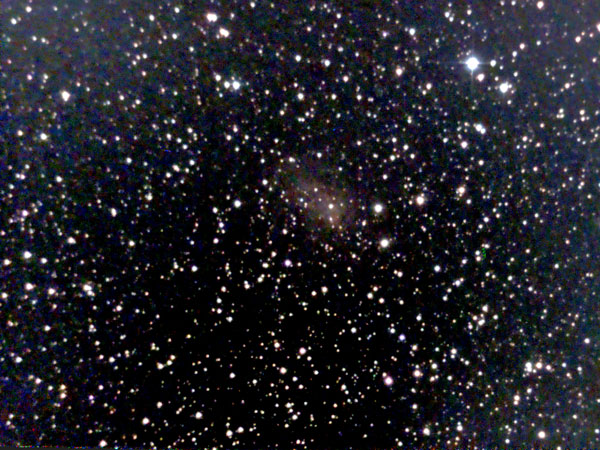 |
Irregular dwarf galaxy | |
| IC 405 | Flaming Star Nebula | Auriga | GN | 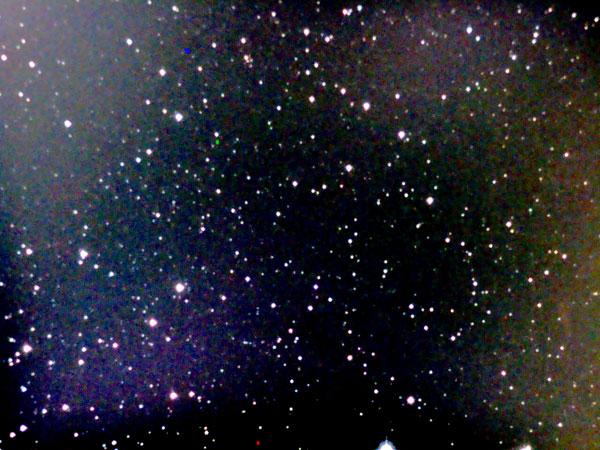 |
Practically nothing to see... |
| IC 1276 | Serpens | GC | 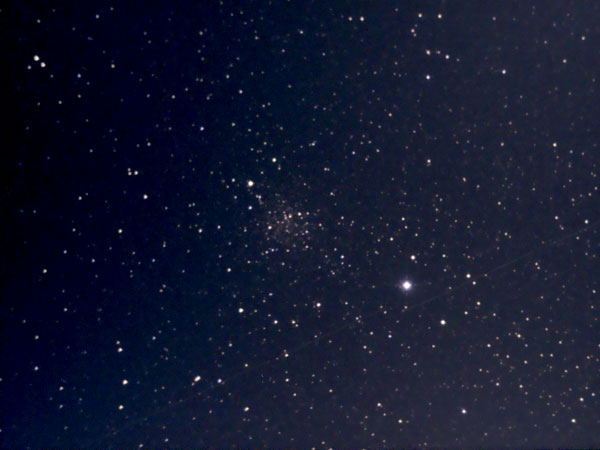 |
Appears with a reddish tint because of its large distance and the dust of the Milky Way. | |
| IC 1396 | Elephant Trunk | Cepheus | GNE | 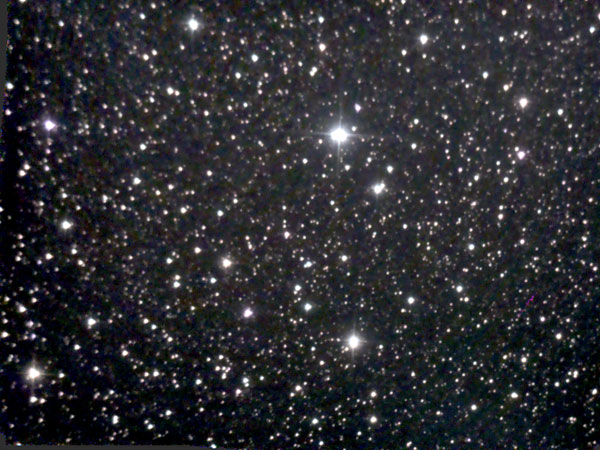 |
Very large nebula, practically not visible as a nebula... |
| IC 1613 | Cetus | G | 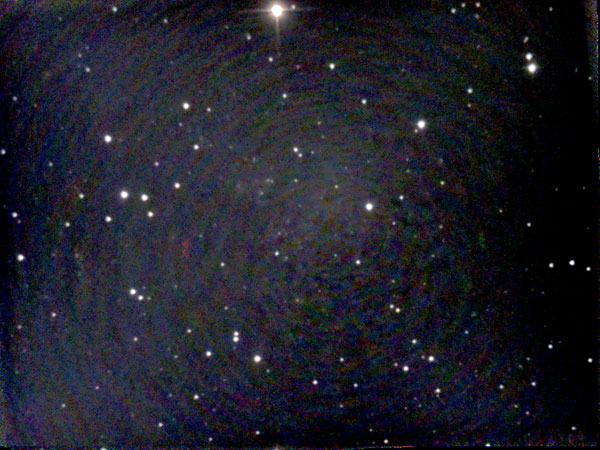 |
Irregular dwarf galaxy, practically not seen... | |
| IC 1795 | Fish Head Nebula | Cassiopeia | GN |  |
The galactic nebulae IC 1795 (also named NGC 896), IC 1805, and IC 1848 form a larger nebulosity region in the constellation Cassiopeia, not far away from the Perseus Double Cluster NGC 869/884. The Fish Head Nebula next to IC 1805 is the brightest region and was therefore discovered first. |
| IC 1805 | Heart Nebula | Cassiopeia | GN/OC | 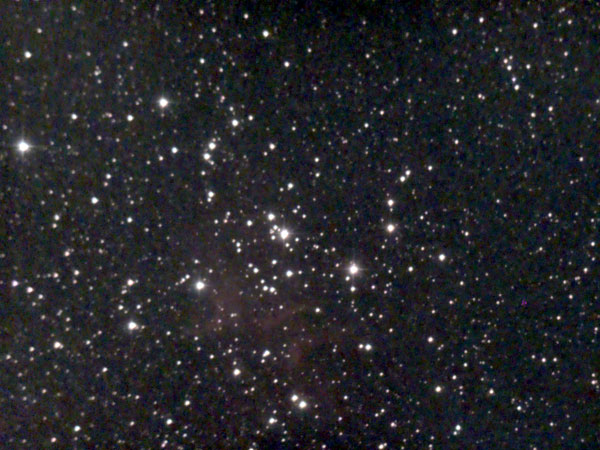 |
The galactic nebulae IC 1805, IC 1848, and IC 1795 (also named NGC 896) form a larger nebulosity region in the constellation Cassiopeia, not far away from the Perseus Double Cluster NGC 869/884. |
| IC 1848 | Soul Nebula | Cassiopeia | GN/OC | 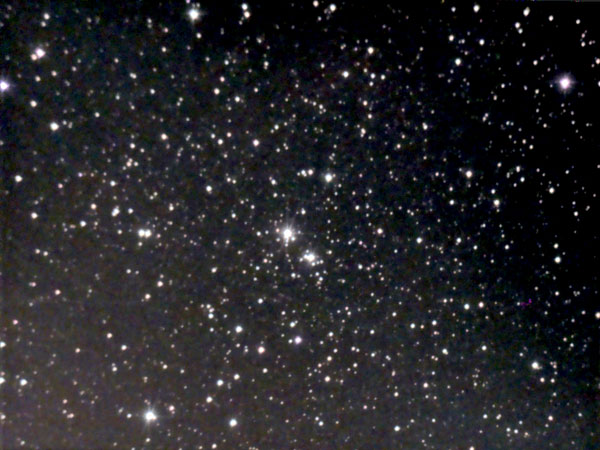 |
The galactic nebulae IC 1848, IC 1805, and IC 1795 (also named NGC 896) form a larger nebulosity region in the constellation Cassiopeia, not far away from the Perseus Double Cluster NGC 869/884. |
| IC 2177 | Seagull Nebula | Monoceros | GN | 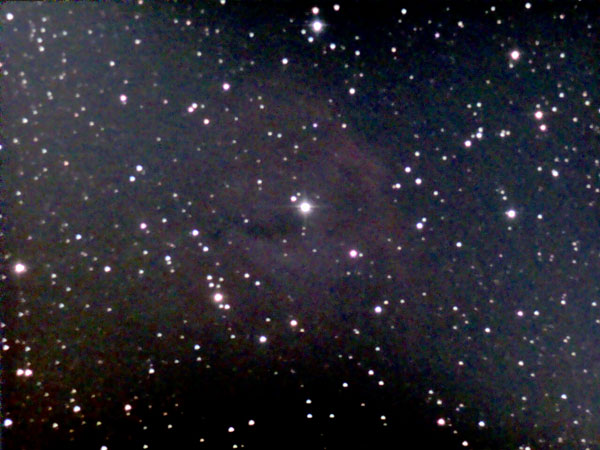 |
Not much to see... |
| IC 2574 | Ursa Major | G | 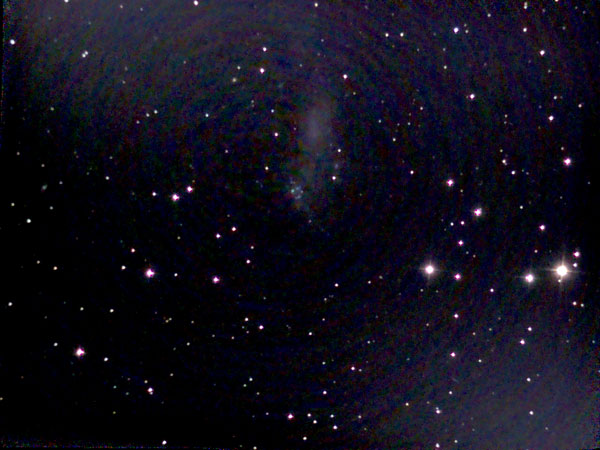 |
Very faint spiral galaxy, hard for the eVscope | |
| IC 4593 | White Eyed Pea Nebula | Hercules | PN | 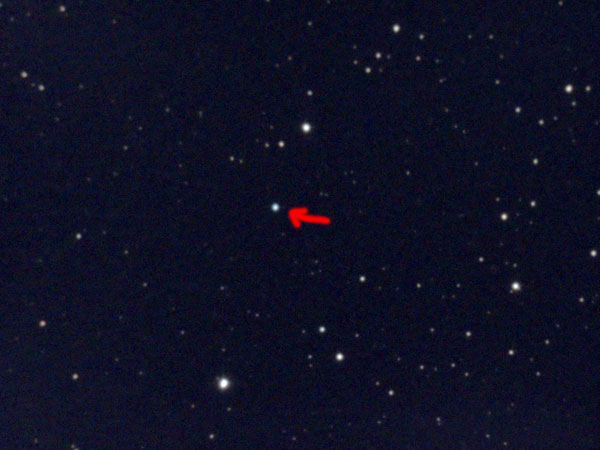 |
Is turquoise and has a bright core, which cannot be recognized in the eVscope. |
| IC 4634 | Rose Nebula | Ophiuchus | PN | 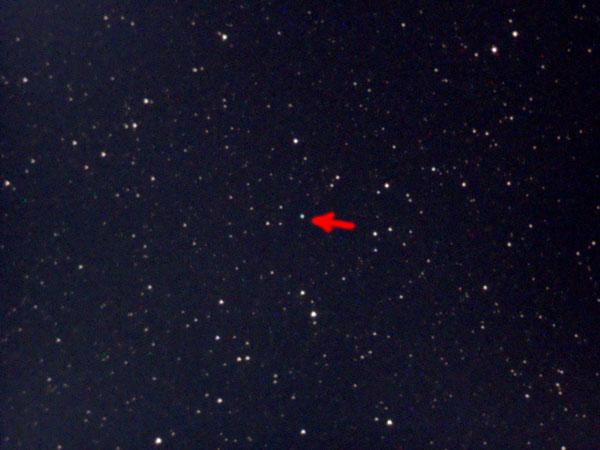 |
Has a point-symmetric, s-shaped structure, but is so tiny that none of this can be detected in the eVscope; the nebula itself is difficult to find, but in the end, the colour helps. |
| IC 4665 | Ophiuchus | OC | 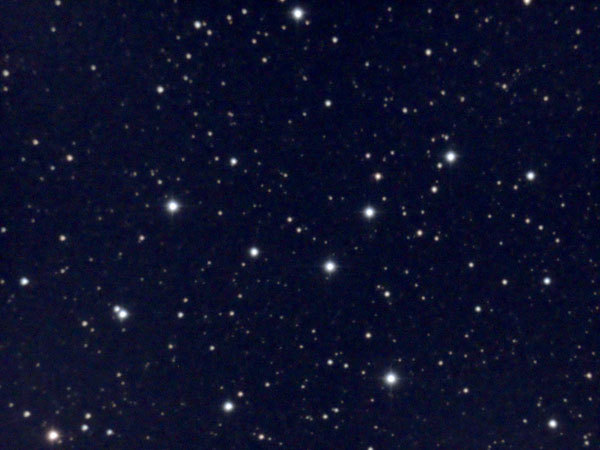 |
Can already be seen with the naked eye as a faint glow; too large to be seen well in the eVscope. | |
| IC 4756 | Serpens | OC | 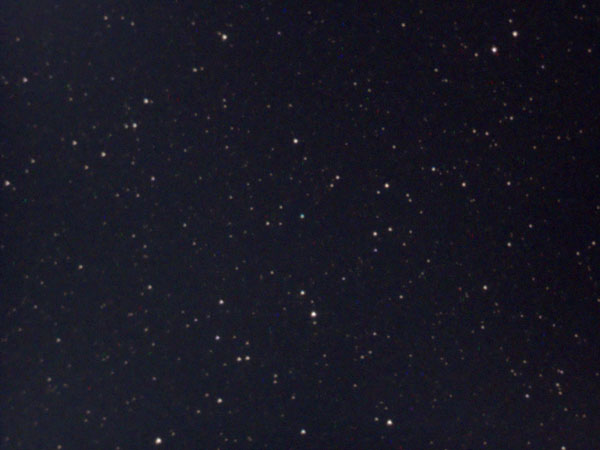 |
Consists of few, inconspicuously scattered stars and is rather an object for opera glasses or binoculars; for the eVscope, too large. | |
| IC 5070 | Pelican Nebula | Cygnus | GNE | 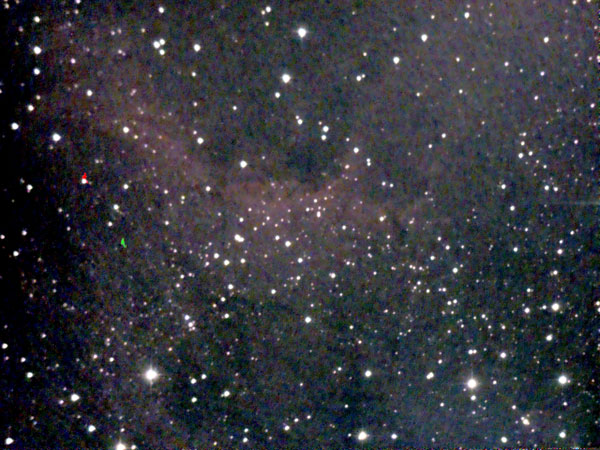 |
Large reddish nebula, can be guessed without post-processing... |
| IC 5146 | Cocoon Nebula | Cygnus | GNE | 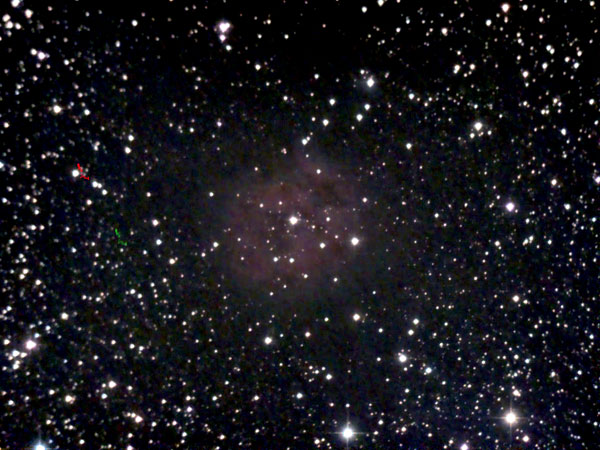 |
Small reddish nebula with embedded open star cluster Cr 470 |
| NGC 40 | Bow Tie Nebula | Cepheus | PN | 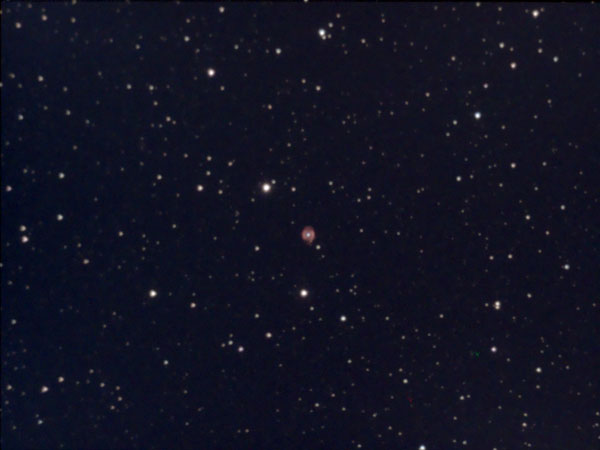 |
Violet dot with white central star |
| NGC 185 | Cassiopeia | G | 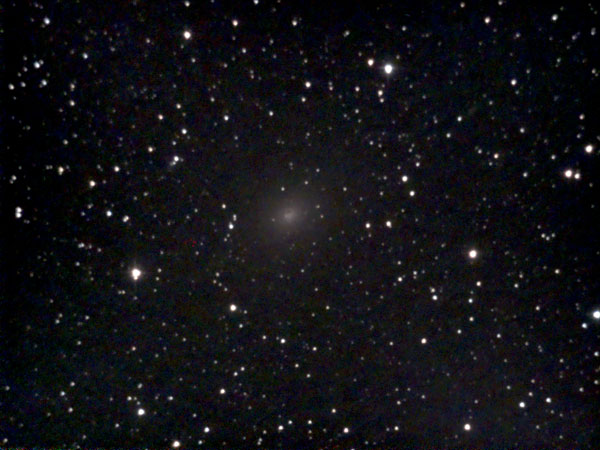 |
Elliptical galaxy; forms a gravitationally connected galaxy pair with NGC 147. | |
| NGC 281 | Pacman Nebula | Cassiopeia | GE | 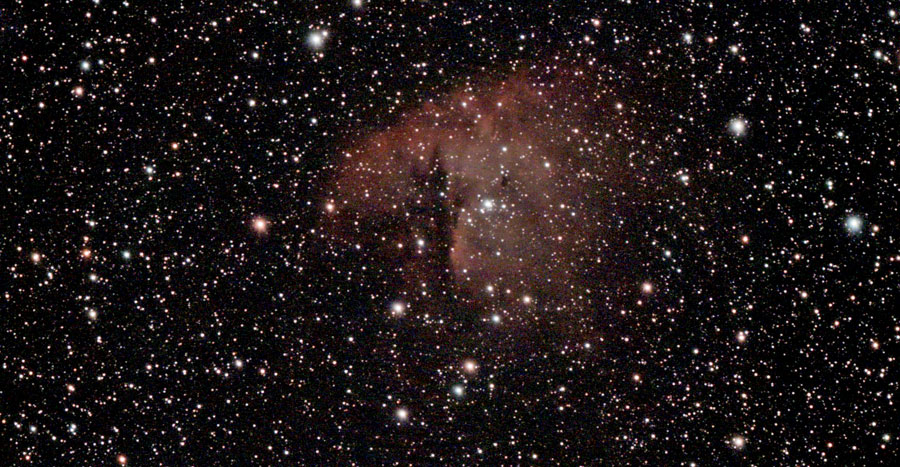 |
Reddish nebula, fits the feVscope's field of view |
| NGC 410 | Pisces | G | 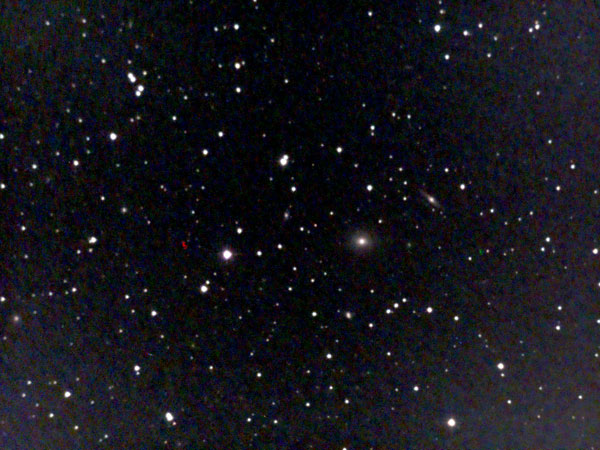 |
Elliptical galaxy, has extended areas where stars are formed. | |
| NGC 457 | Owl/E.T. Cluster | Cassiopeia | OC | 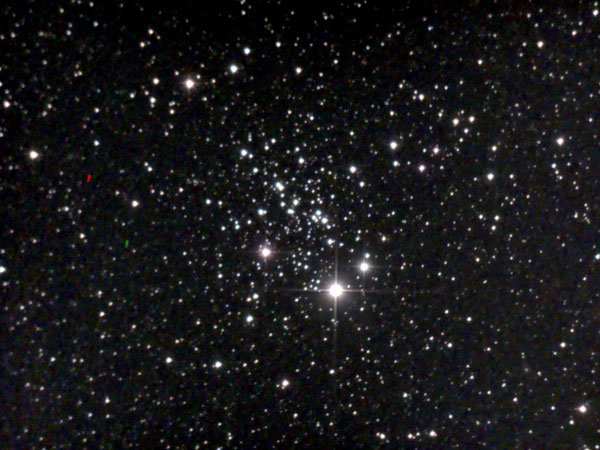 |
Nice, particularly the eyes |
| NGC 514 | With supernova 2020uxz | Pisces | G | 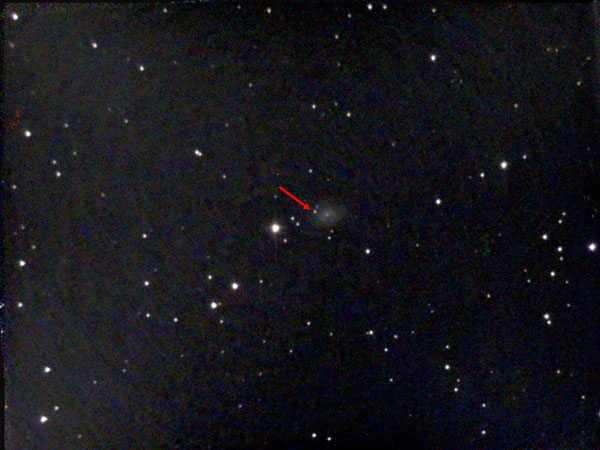 |
Barred spiral galaxy, supernova a small dot |
| NGC 559 | Cassiopeia | OC | 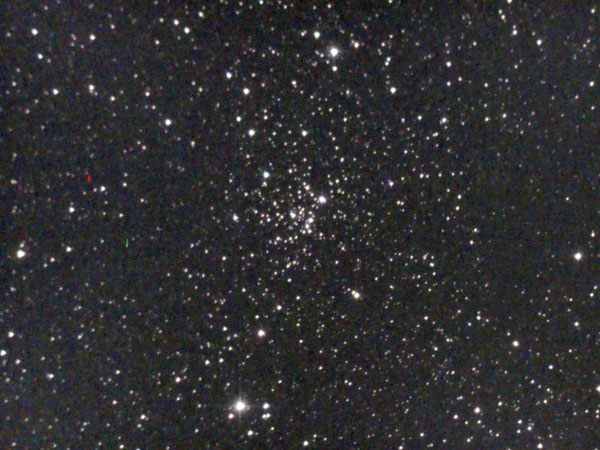 |
Smaller open cluster in Cassiopeia | |
| NGC 604 | Inside M 33 | Triangulum | HII | 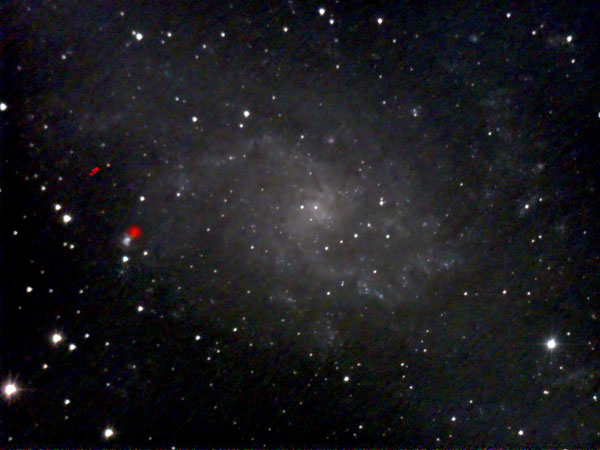 |
The brightest HII region in M 33, a small blob... |
| NGC 660 | Pisces | G | 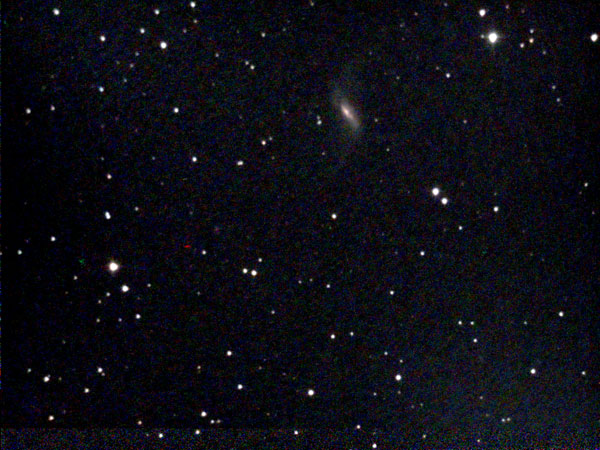 |
Spiral galaxy; one of the few polar ring galaxies, which are created from the fusioning of two galaxies | |
| NGC 663 | Cassiopeia | OC | 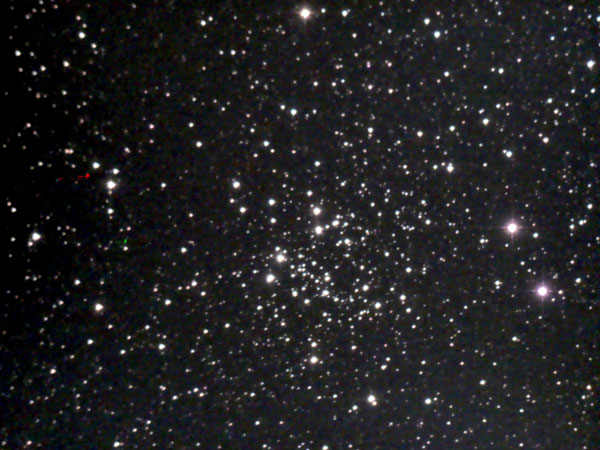 |
Large; seen well also in mid-February | |
| NGC 672 | with IC 1727 (together Holm 46) | Triangulum | G | 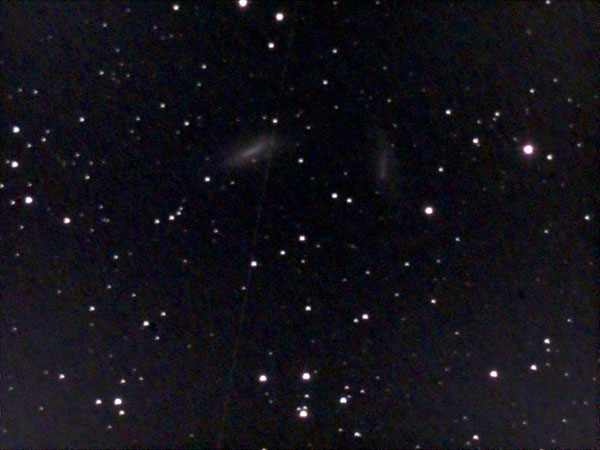 |
Galaxy pair Holm 46 |
| NGC 752 | Andromeda | OC | 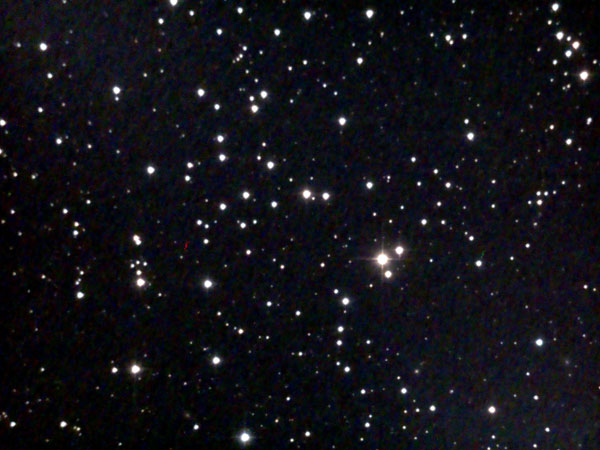 |
Large, loose open star cluster | |
| NGC 869 | h Persei, part of the Perseus Double Cluster | Perseus | OC | 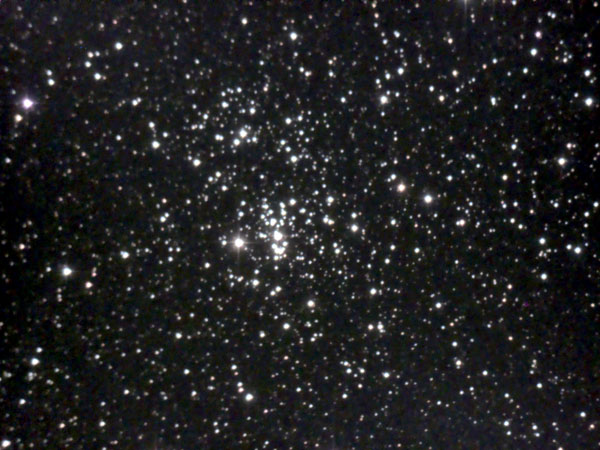 |
Both clusters together are too large for the eVscope's field of view; the more compact cluster of the two |
| NGC 884 | chi Persei, part of the Perseus Double Cluster | Perseus | OC | 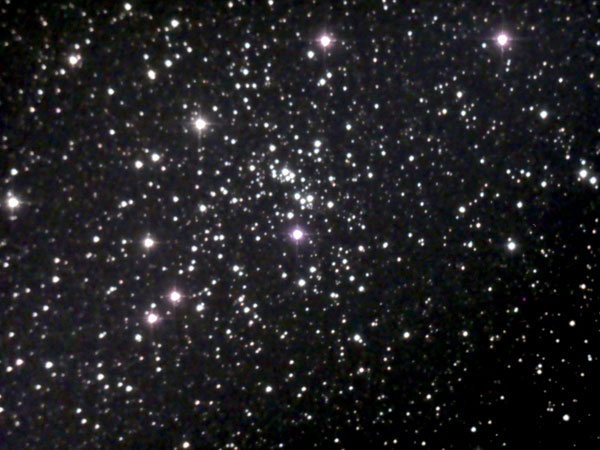 |
Both clusters together are too large for the eVscope's field of view; for me, this is the nicer cluster |
| NGC 891 | Andromeda | G | 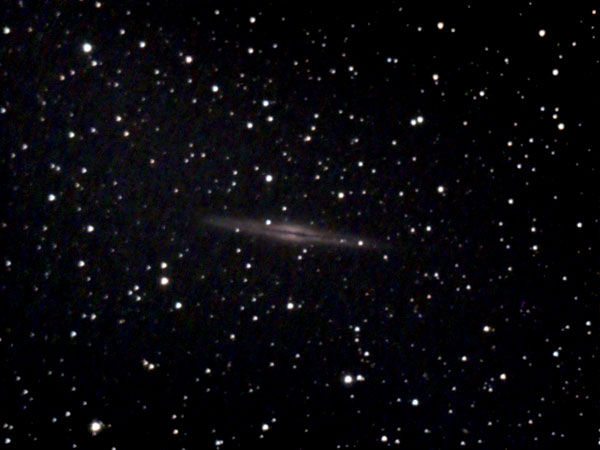 |
Seen from the side; nice but faint; better in September 2020 | |
| NGC 925 | Triangulum | G | 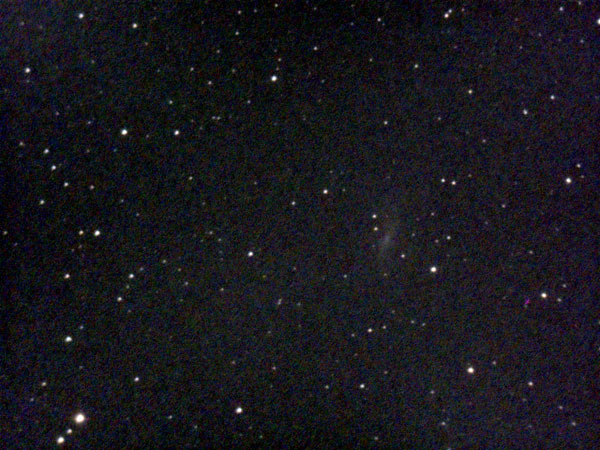 |
Faint in the eVscope | |
| NGC 1023 | Perseus | G | 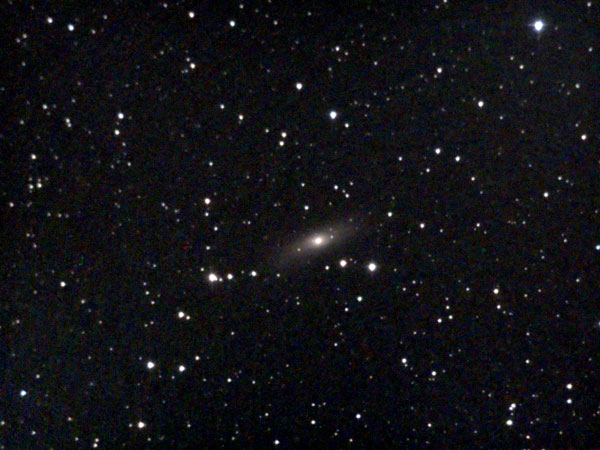 |
Elliptical galaxy; the brightest member of a group of galaxies, which includes NGC 891 (Andromeda) | |
| NGC 1514 | Crystal Ball | Taurus | PN | 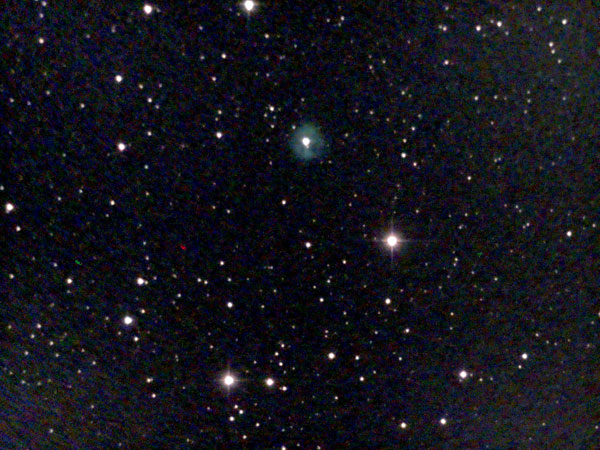 |
Planetary nebula, appears greenish with a white central star. |
| NGC 1788 | Cosmic Bat Nebula | Orion | GR | 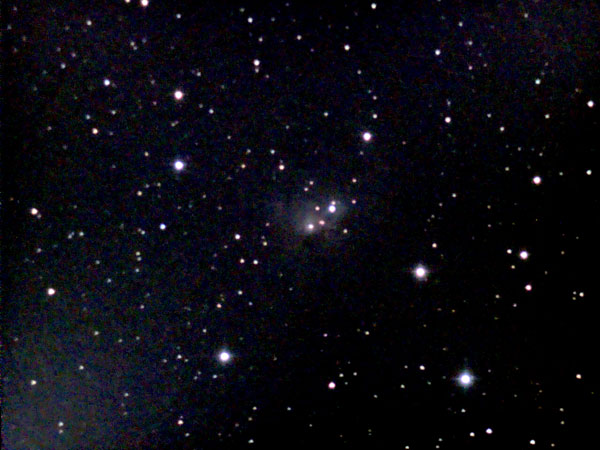 |
Rather faint, according to Stoyan |
| NGC 1977 | Running Man Nebula | Orion | GR | 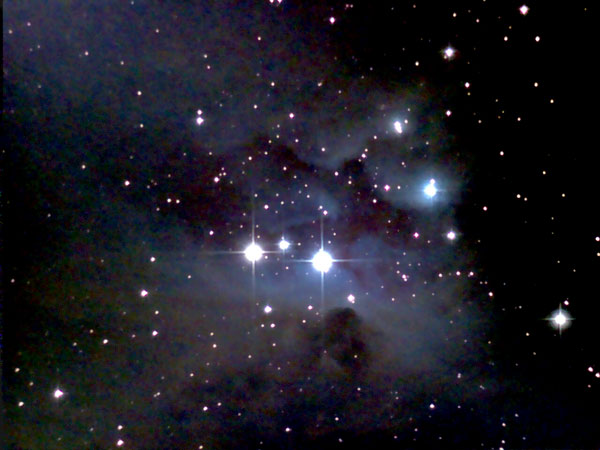 |
The Running Man Nebula includes the reflection nebulae NGC 1977, 1973, and 1975 as well as the open star cluster 1981; a dark nebula has the shape of a running man; needs long times in Enhanced Vision mode |
| NGC 1980 | Lost Jewel of Orion | Orion | OC | 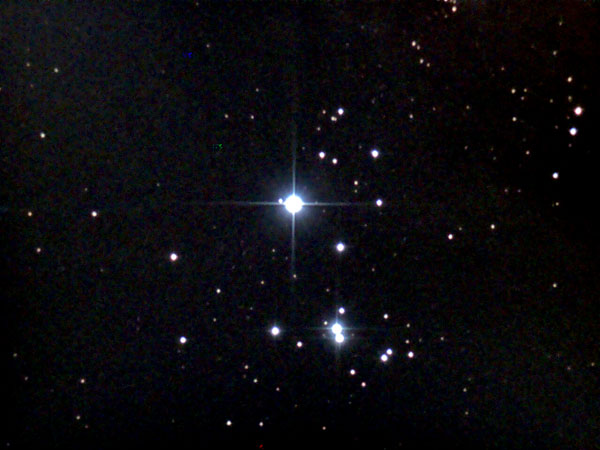 |
Quite nice... |
| NGC 2024 | Flame Nebula | Orion | GE | 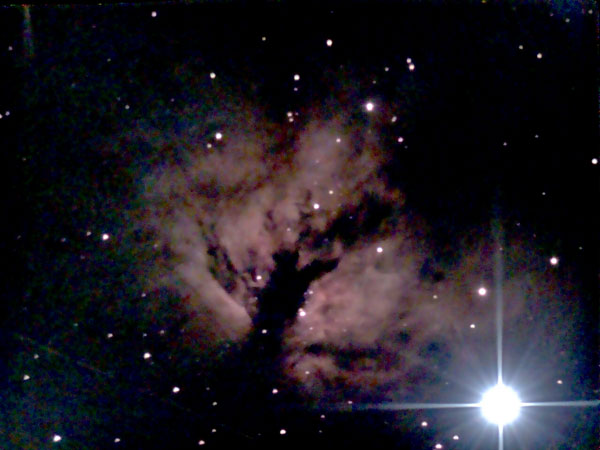 |
Rather faint reddish nebula next to Alnitak; not easy for the eVscope |
| NGC 2244 | Open star cluster in Rosette Nebula | Monoceros | OC | 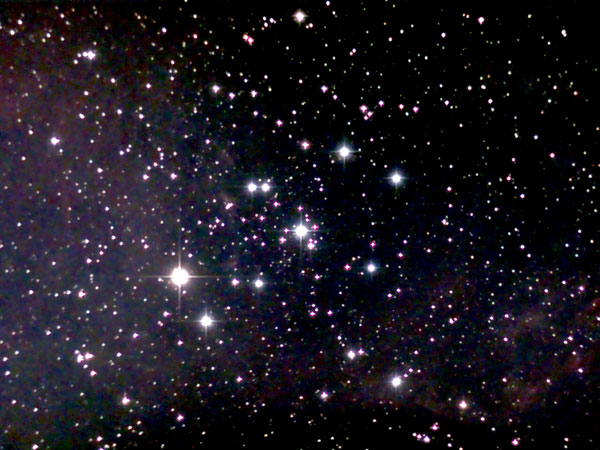 |
Nice to see (did not find the embedding nebula, the Rosette Nebula) |
| NGC 2261 | Hubble's Variable Nebula | Monoceros | GR | 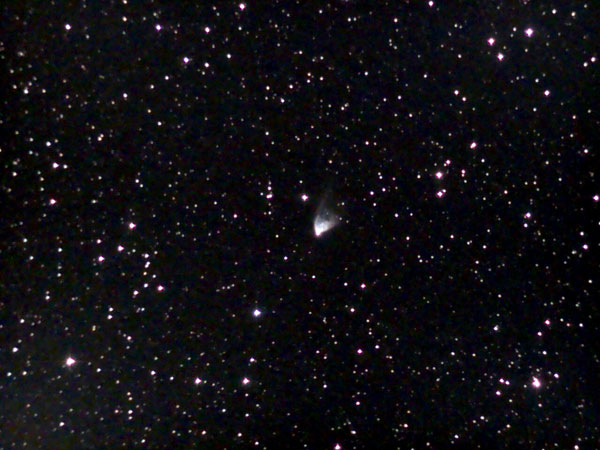 |
Nebula that looks like a comet |
| NGC 2264 | Christmas Tree Cluster/Conus Nebula | Monoceros | OC | 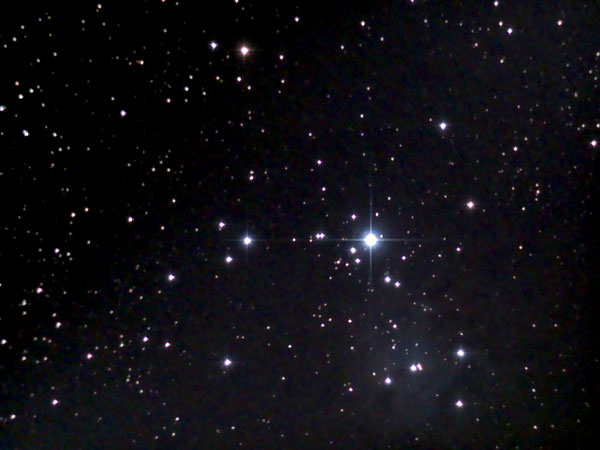 |
Saw only the star cluster. |
| NGC 2392 | Eskimo Nebula | Gemini | PN | 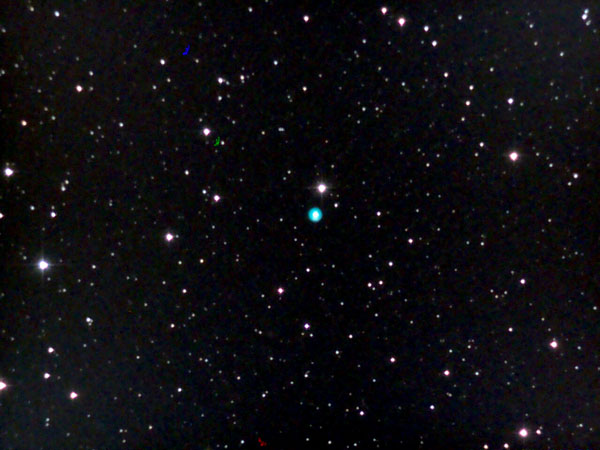 |
Round light blue spot with white dot in it |
| NGC 2403 | Camelopardis | G | 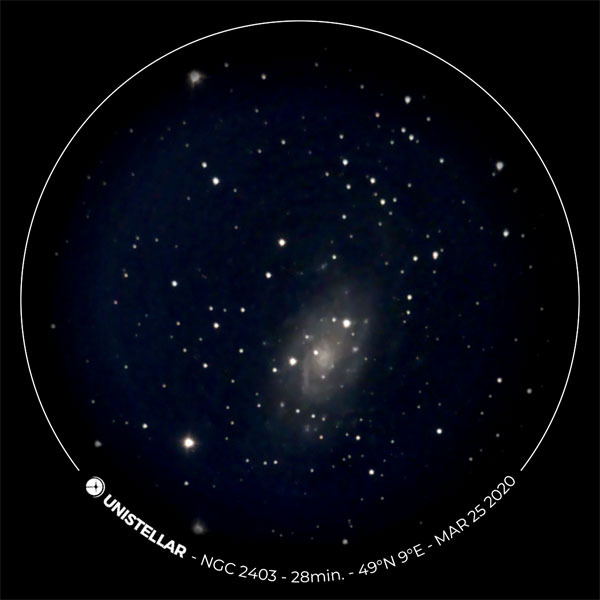 |
Spiral galaxy that is regarded as one of the best galaxies for small telescopes; unclear why Messier overlooked it; fairly impressive in the eVscope. | |
| NGC 2419 | Intergalactic Wanderer | Lynx | GC | 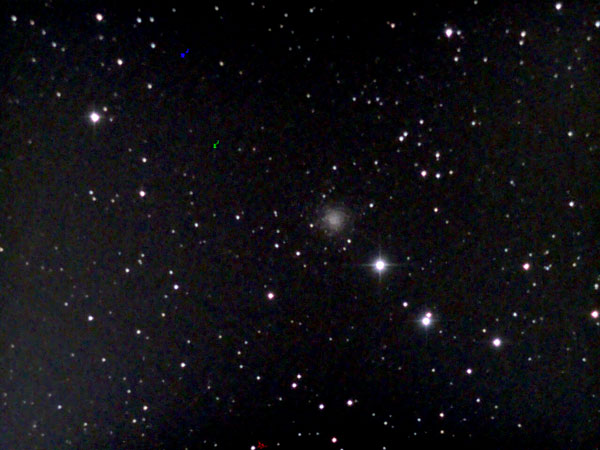 |
Small... |
| NGC 2438 | Inside M 46 | Puppis | PN | 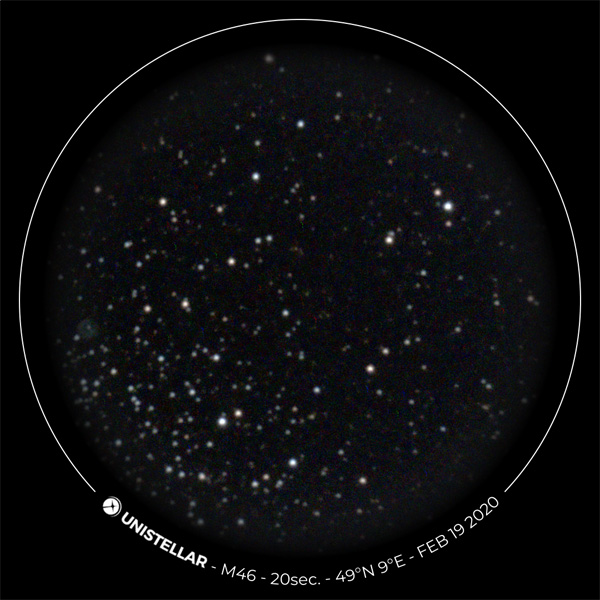 |
Planetary nebula inside of M 46 (there I found it...) |
| NGC 2683 | Lynx | G | 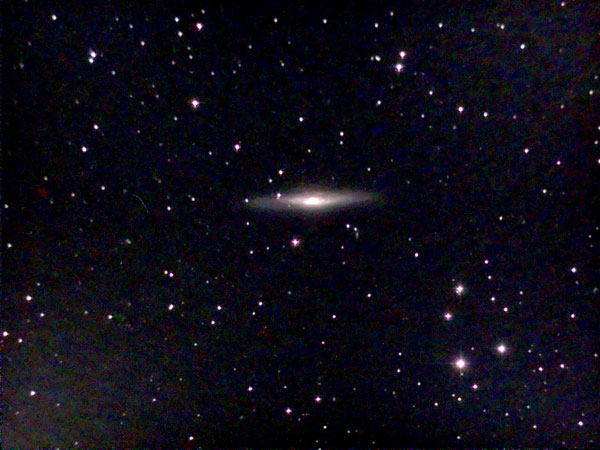 |
Spiral galaxy, seen edge-on. | |
| NGC 2775 | Cancer | G | 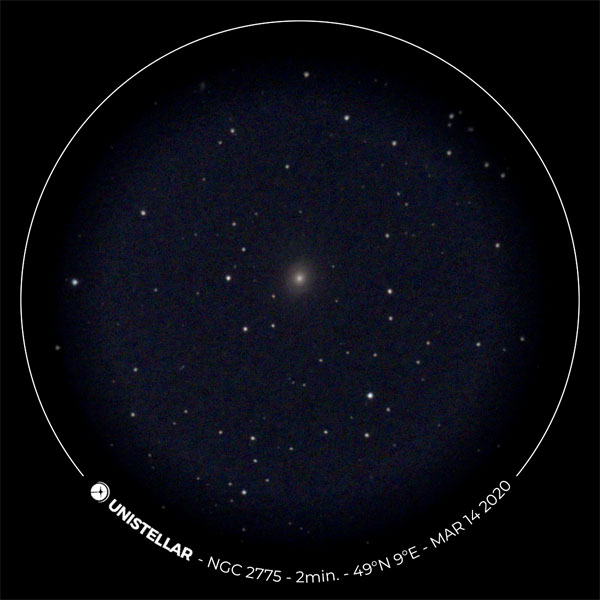 |
Small spiral galaxy with bright core; spiral not recognizable in the eVscope | |
| NGC 2805 | Part of galaxy quartet Holm 124 | Ursa Major | G | 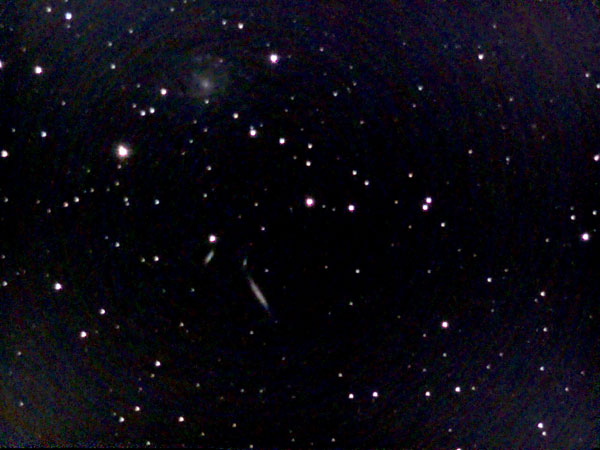 |
Said to be a double star ... but a spiral galaxy in SkySafari; forms together with NGC 2814, NGC 2820, and IC 2458 the interactive galaxy quartet Holm 124. |
| NGC 2903 | Leo | G | 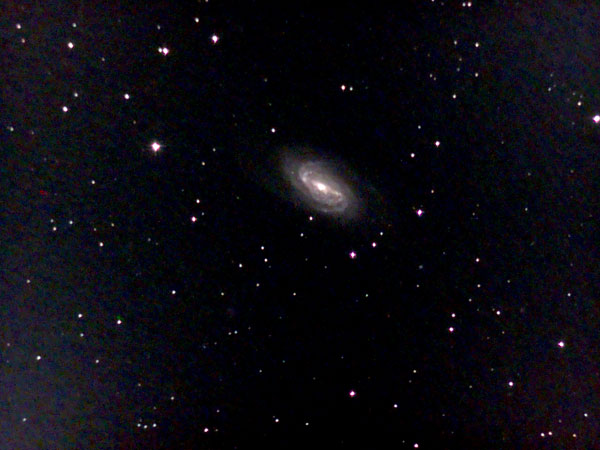 |
One of the brighter spiral galaxies; unclear why Messier missed it... | |
| NGC 3115 | Sextans | G | 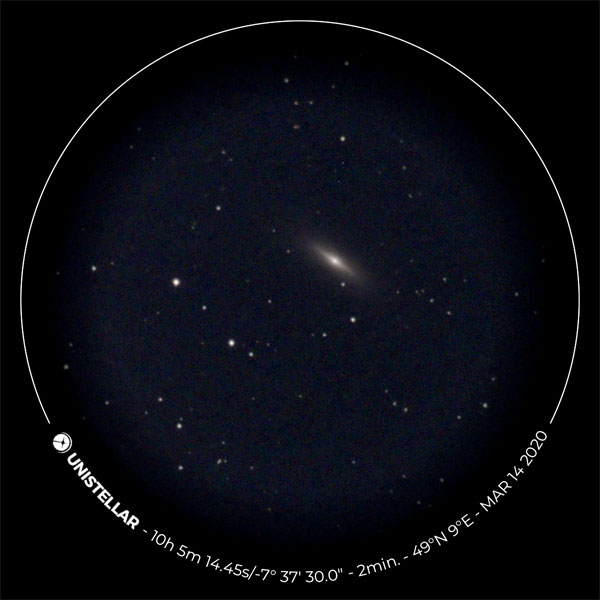 |
Elliptical galaxy, one of the "spindle galaxies"... | |
| NGC 3184 | with NGC 3179, NGC 3180, NGC 3181 | Ursa Major | G | 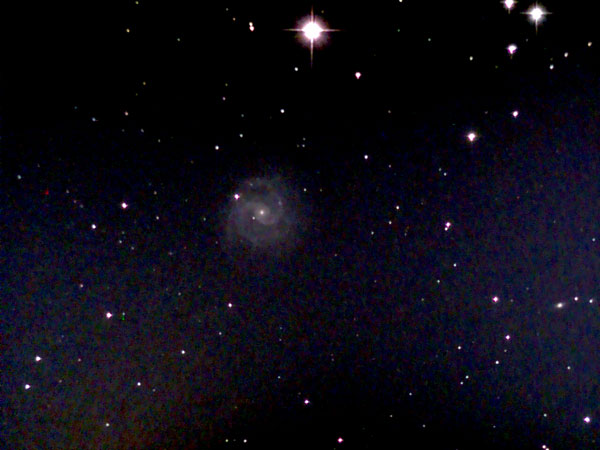 |
NGC 3184 is a barred spiral, NGC 3180 and NGC 3181 are H II regions in NGC 3184 (too small for theVscope); NGC 3179 is a lenticular galaxy. |
| NGC 3190 | Hickson 44, Leo Quartet, Arp 316 | Leo | G | 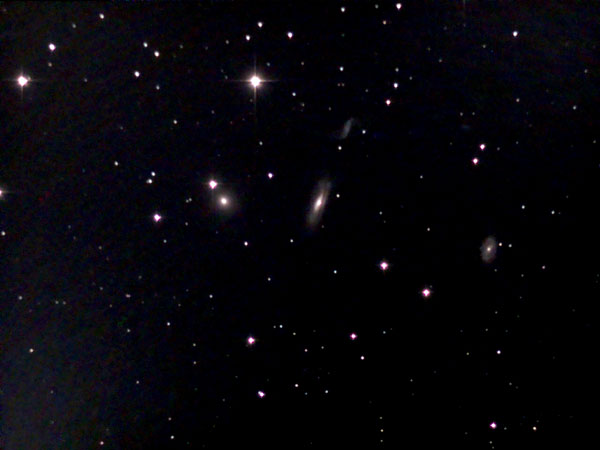 |
The galaxy NGC 3190 belongs, together with NGC 3185, NGC 3187, and NGC 3193 to the compact galaxy group Hickson 44, also called Leo Quartet. |
| NGC 3227/26 | Arp 94 or Holm 187 | Leo | G | 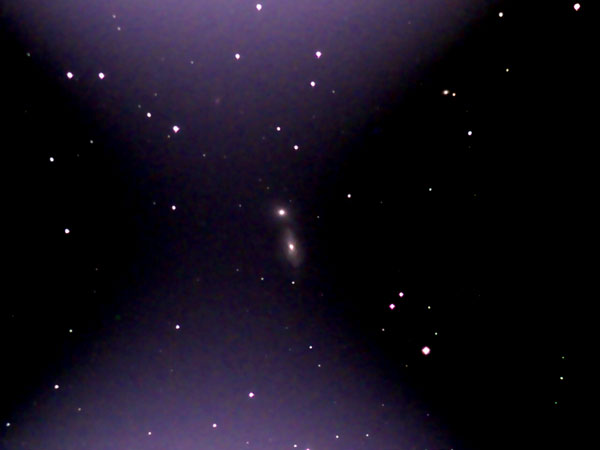 |
The barred spiral NGC 3227 forms a double galaxy with NGC 3226 (Arp 94 or Holm 187) |
| NGC 3344 | Leo | G | 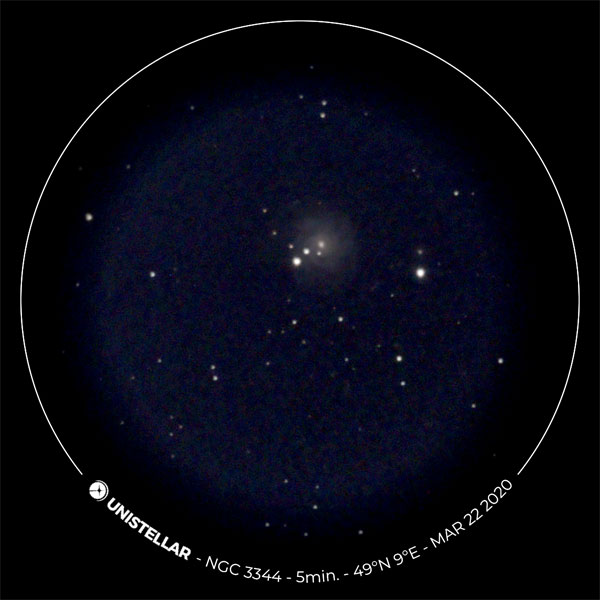 |
Small spiral galaxy, spiral recognizable in the eVscope, bright stars in the area of the galaxy | |
| NGC 3384/89 | See M 105 | Leo | G |  |
The galaxies NGC 3384 (elliptical) and the smaller NGC 3389 (spiral) can be seen together with the galaxy M 105 in the same field of view in the eVscope. NGC 3384 is to the left of M 105, NGC 3389 is below NGC 3384. |
| NGC 3607/08/05 | Galaxy triple Holm 240 | Leo | G | 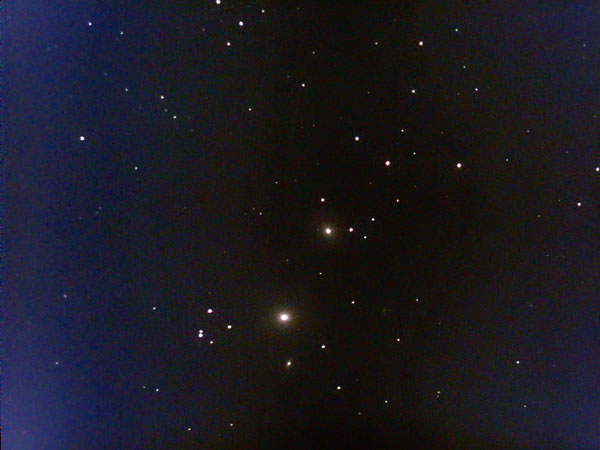 |
Three elliptical galaxies (Holm 240), which can all be seen in the eVscope in the same field of view (size: 3607 > 3608 > 3605) |
| NGC 3628 | Part of Leo Triplet (Arp 317, Holm 246) | Leo | G | 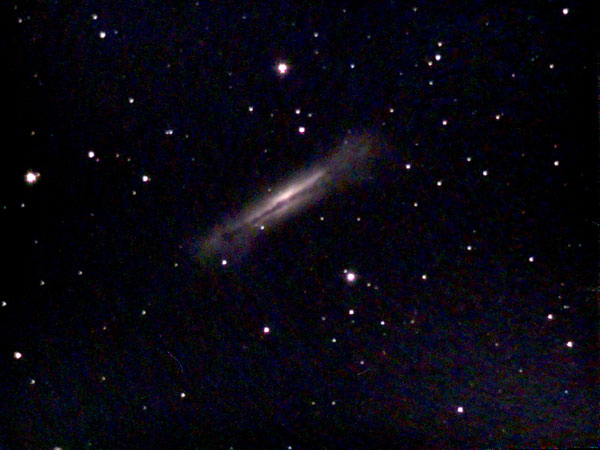 |
Spiral galaxy seen edge-on; it forms a conspicuous group with M 65 and M 66, the Leo Triplet (Arp 317, Holm 246) . |
| NGC 3842 | Abell 1637, Leo Cluster | Leo | G | 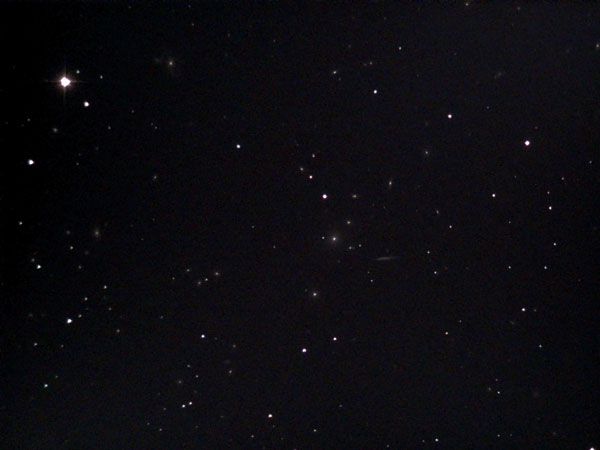 |
Part of and target for Abell 1637 (Leo Cluster), a large galaxy cluster |
| NGC 3877 | Ursa Major | G | 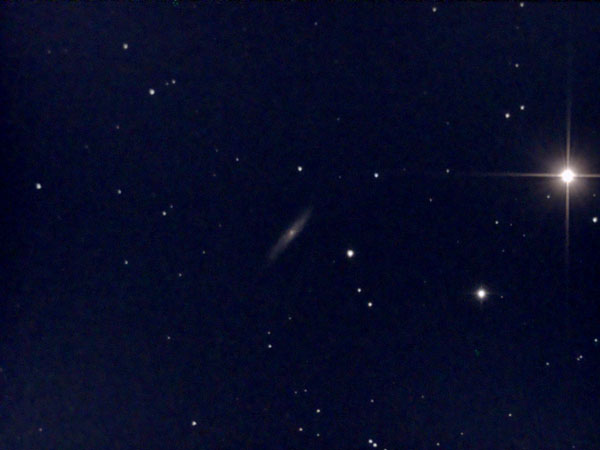 |
Spiral galaxy, nearly seen edge-on | |
| NGC 4085/88 | Ursa Major | G | 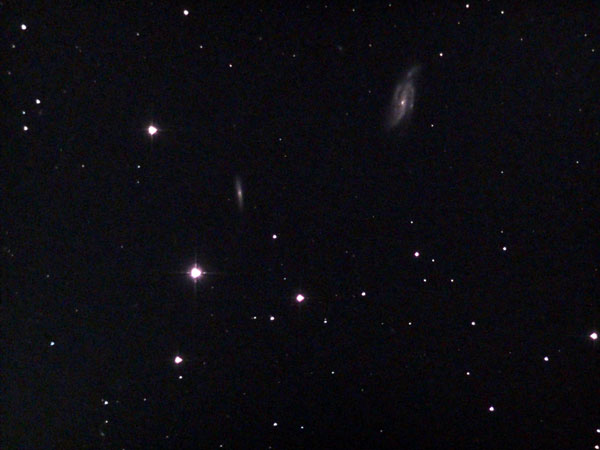 |
The elliptical galaxy NGC 4085 and the spiral galaxy NGC 4088 in the constellation Ursa Major seem to interact with one another. At least, the deformations of galaxy NGC 4088 seem to indicate this. Both galaxies can be easily observed in the same field of view with the eVscope. | |
| NGC 4216/06/22 | Virgo | G | 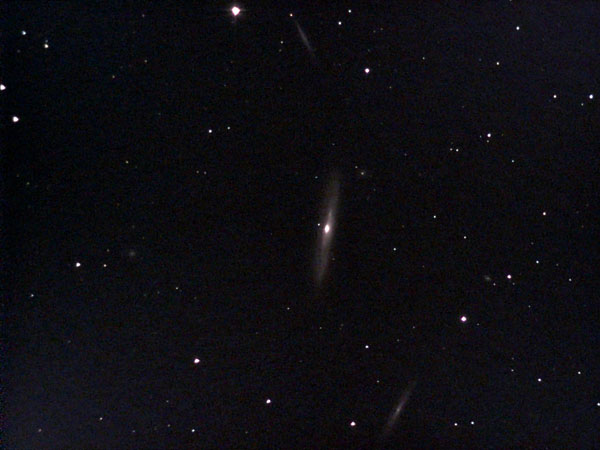 |
NGC 4216 is the largest of three galaxies (NGC 4216, NGC 4206, and NGC 4222), which can be observed together in the eVscope. | |
| NGC 4236 | Draco | G | 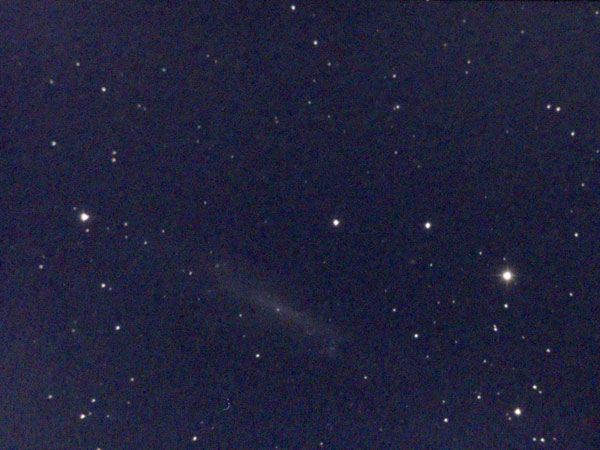 |
Spiral galaxy; very faint | |
| NGC 4244 | Silver Needle Galaxy | Canes Venatici | G | 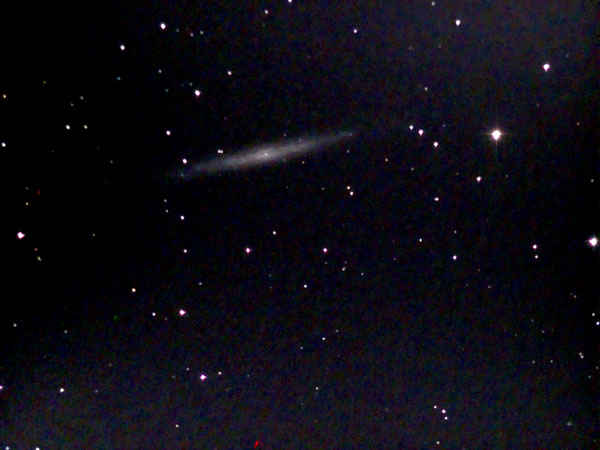 |
Spiral galaxy, very thin and long, seen edge-on |
| NGC 4248 | See M 106 | Canes Venatici | G | 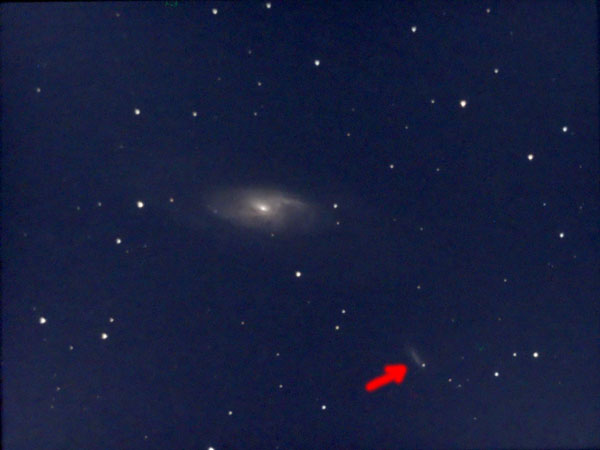 |
Small spiral galaxy in the vicinity of M 106 |
| NGC 4284/4290 | See M 40 | Ursa Major | G | 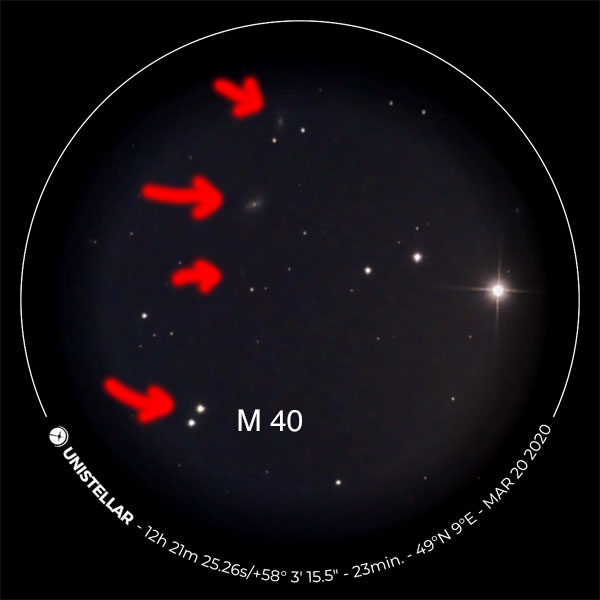 |
Two small galaxies in the vicinity of the optical double star M 40 |
| NGC 4298/4302 | Holm 377 or KPG 332 | Coma Berenices | G | 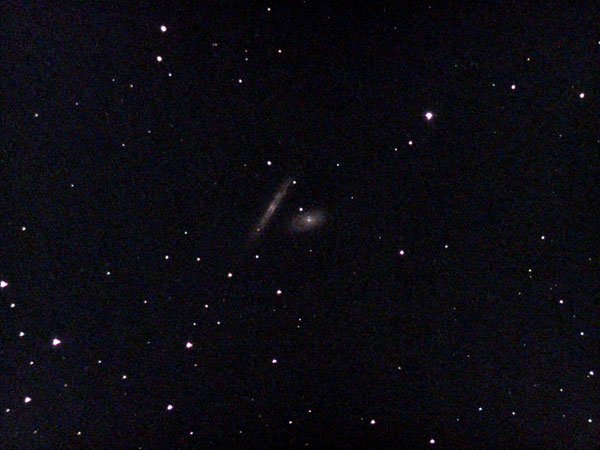 |
The spiral galaxies NGC 4298 and NGC 4302 in the constellation Coma Berenices form an interacting pair (Holm 377 or KPG 332). |
| NGC 4387/88/4402 | Great Galactic Face; see also M 84/86 | Virgo | G | 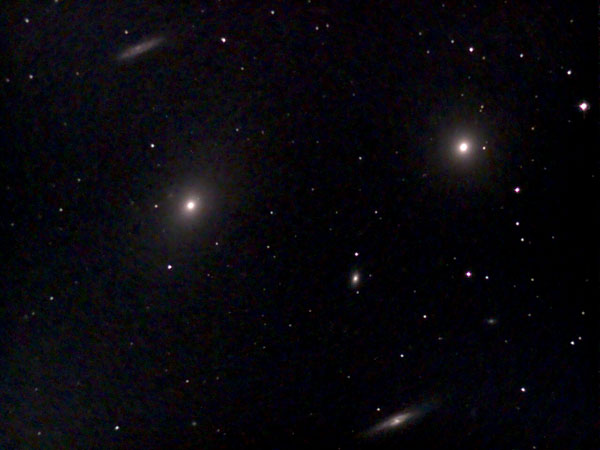 |
Three small galaxies close to M 84 and M 86; more or less in the same field of view in the eVscope. NGC 4387 is a small elliptical galaxy and the nose of the "Great Galatical Face"; NGC 4388 is a spiral galaxy, and forms the mouth; NGC 4402 is a spiral galaxy on top of the GGF. |
| NGC 4394 | See M 85 | Coma Berenices | G | 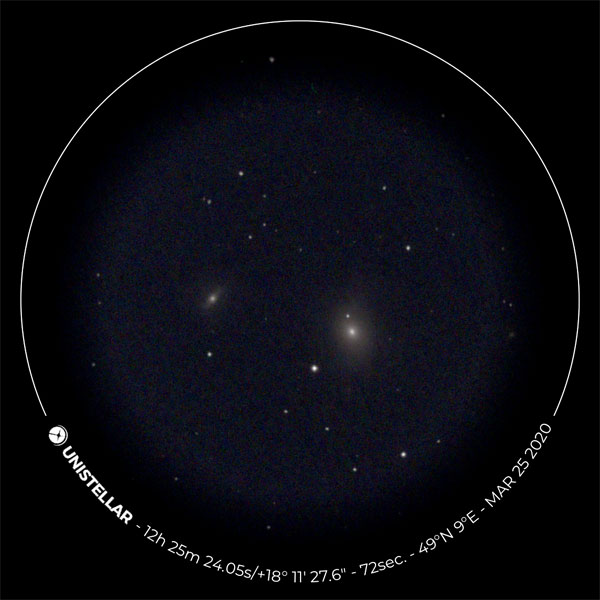 |
Small spiral galaxy close to M 85 (in the same field of view of the eVscope) |
| NGC 4435/38 | The Eyes; with and without NGC 4461/58 | Virgo | G | 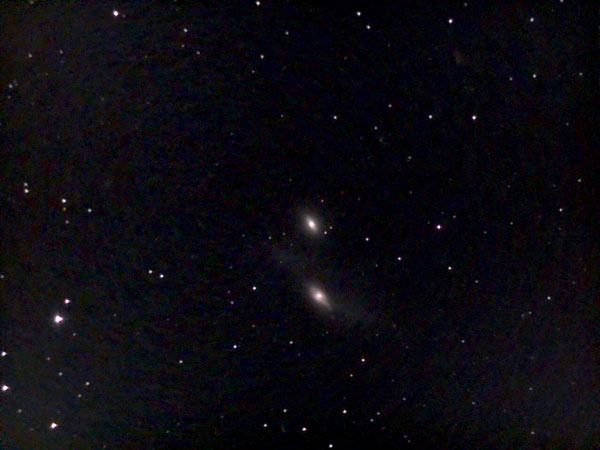 |
NGC 4435 is a lenticular galaxy and interacts with the lenticular galaxy NGC 4438, that is about 100,000 light years more distant. When "the Eyes" are moved towards the bottom right, you can also see the galaxies NGC 4461 (lenticular) and NGC 4458 (elliptical) in the same field of view with the eVscope, as is the case here. |
| NGC 4449 | Canes Venatici | G | 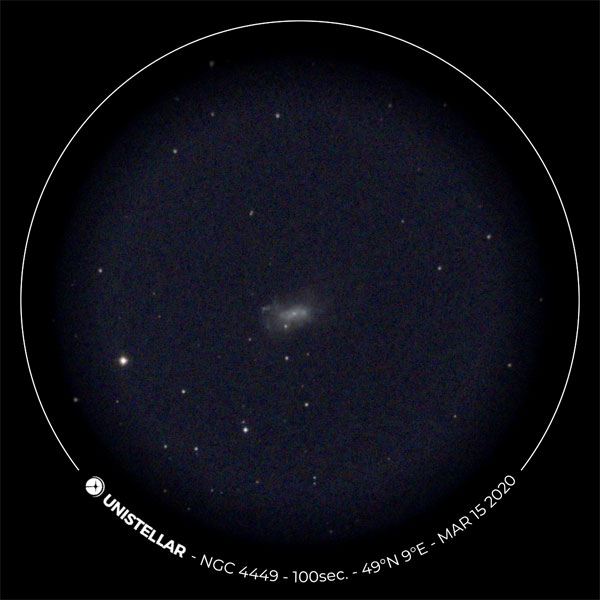 |
Irregular galaxy | |
| NGC 4458/61 | Markarian's Chain | Virgo | G | 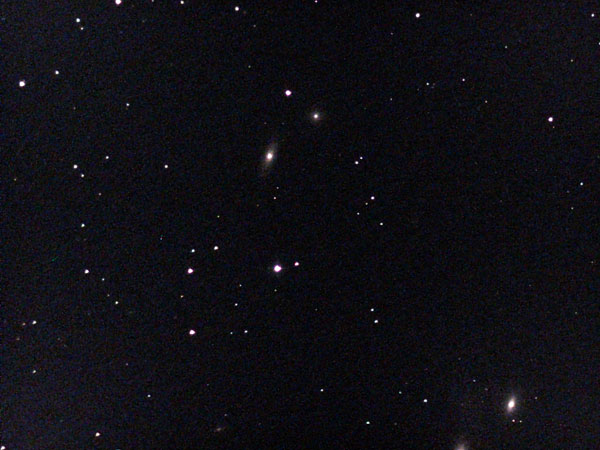 |
The galaxies NGC 4461 (lenticular) und NGC 4458 (elliptical) in constellation Virgo are members of Markarian's chain and interact with one another. If the galaxies are moved towards the top left of the field of view, you can also see the lenticular galaxies NGC 4438 and NGC 4435 (The Eyes) in the same field of view with the eVscope. |
| NGC 4470 | See M 49 | Virgo | G | 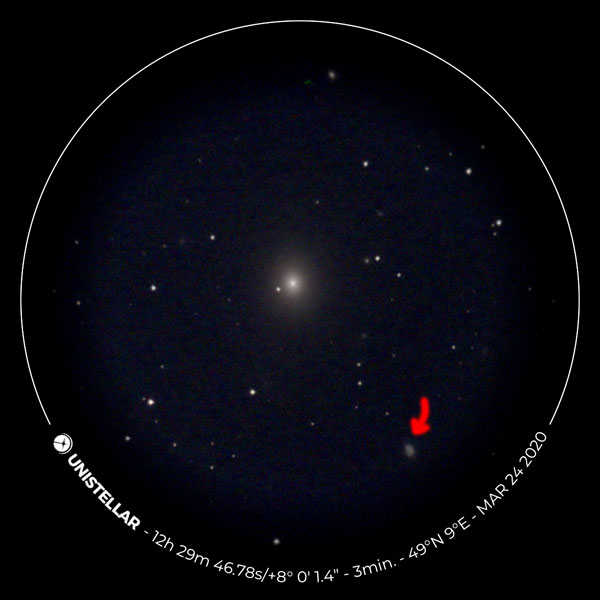 |
Spiral galaxy close to M 49 |
| NGC 4490/85 | Cocoon Galaxies | Canes Venatici | G | 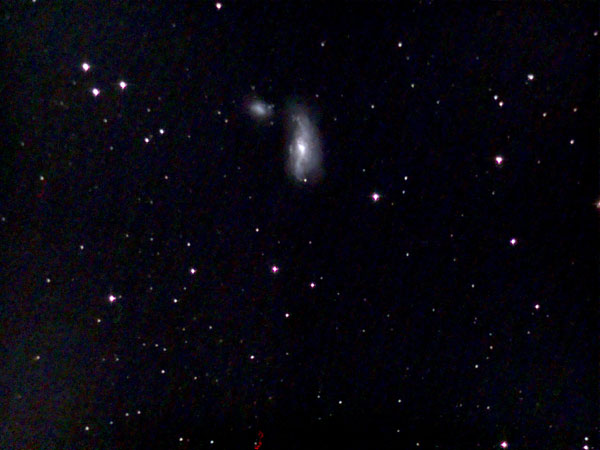 |
Distorted spiral galaxies, which interact with one another |
| NGC 4559 | Coma Berenices | G | 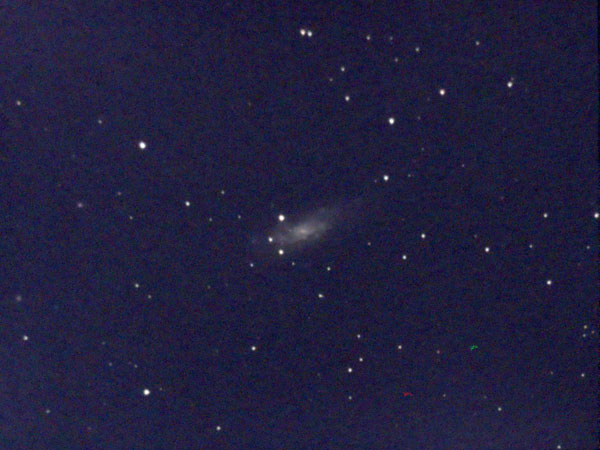 |
Spiral galaxy | |
| NGC 4565 | Needle Galaxy | Coma Berenices | G | 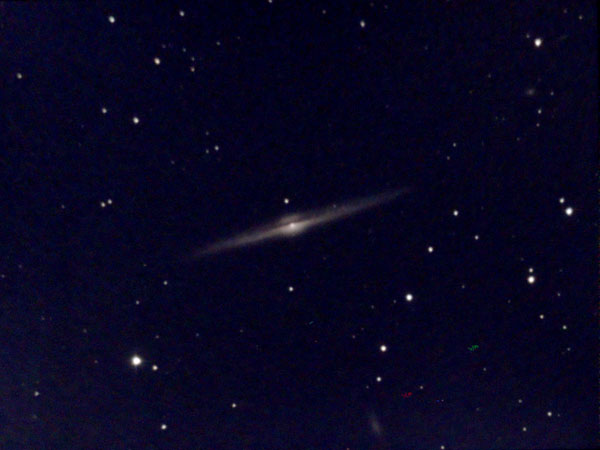 |
One of the most prominent and famous edge-on spiral galaxies in the sky |
| NGC 4567/68 | Siamese Twins, Butterfly Galaxies | Virgo | G | 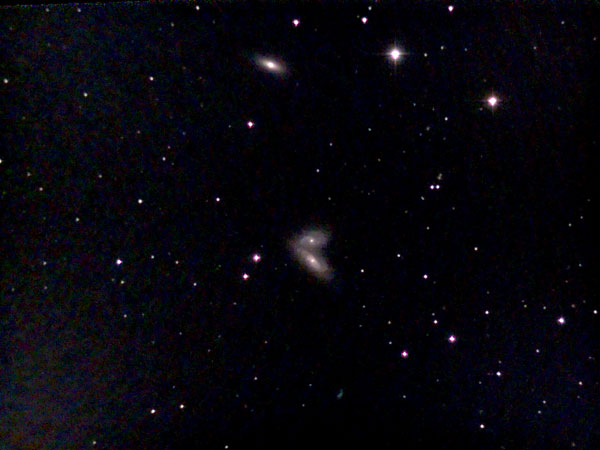 |
NGC 4567/8 are two spiral galaxies in the Virgo cluster; they are also called "The Siamese Twins" or "The Butterfly Galaxies". |
| NGC 4631/27 | Whale/Herring Galaxy, with NGC 4627 | Virgo | G | 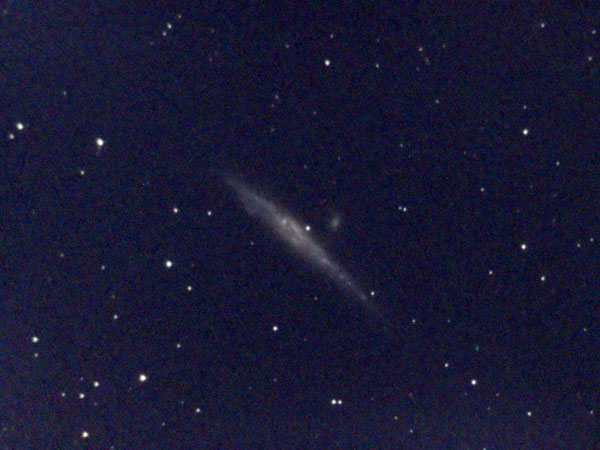 |
Spiral galaxy seen edge-on; above it, there is a companion, the elliptical dwarf galaxy NGC 4627. |
| NGC 4636 | With Supernova 2020ue nearby | Virgo | G | 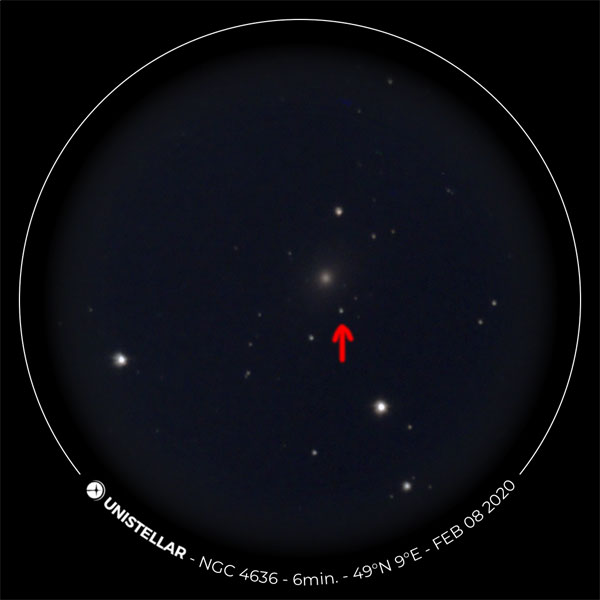 |
Supernova appears as a little dot... |
| NGC 4638/37 | See M 60 | Virgo | G | 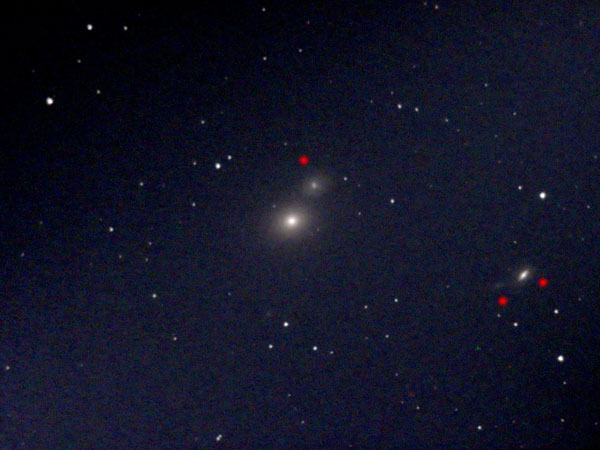 |
Elliptical galaxy NGC 4638 and small partner NGC 4637 close to M 60 (in the same field of view in the eVscope) |
| NGC 4647 | See M 60 and M 59 | Virgo | G | 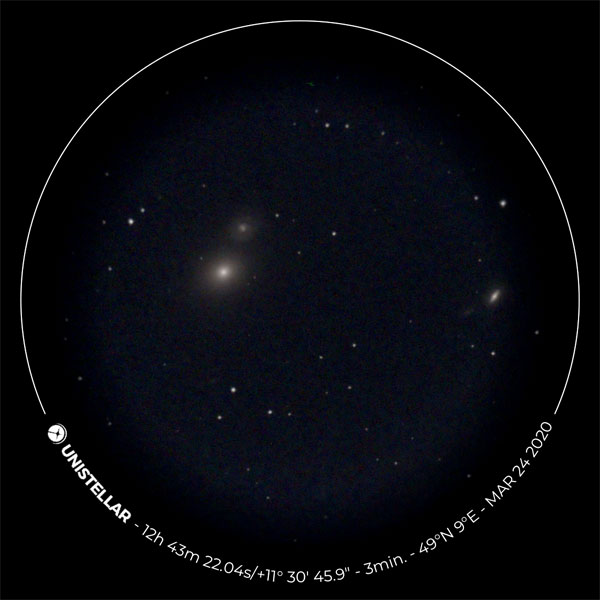 |
Spiral galaxy, that interacts with M 60 (in the same field of view in the eVscope); cal also be seen together with M 59 |
| NGC 4665 | Virgo | G | 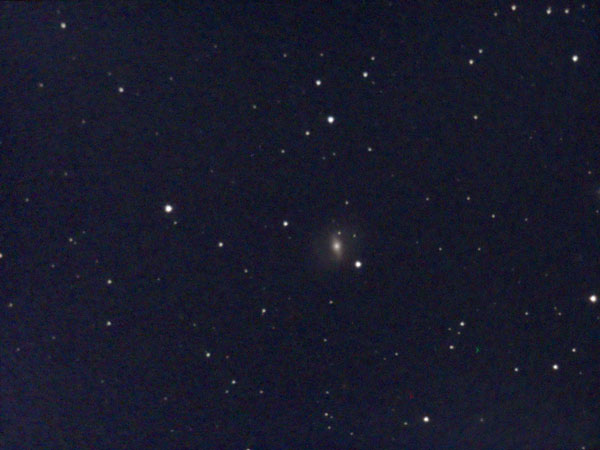 |
Spiral galaxy | |
| NGC 4697 | Virgo | G | 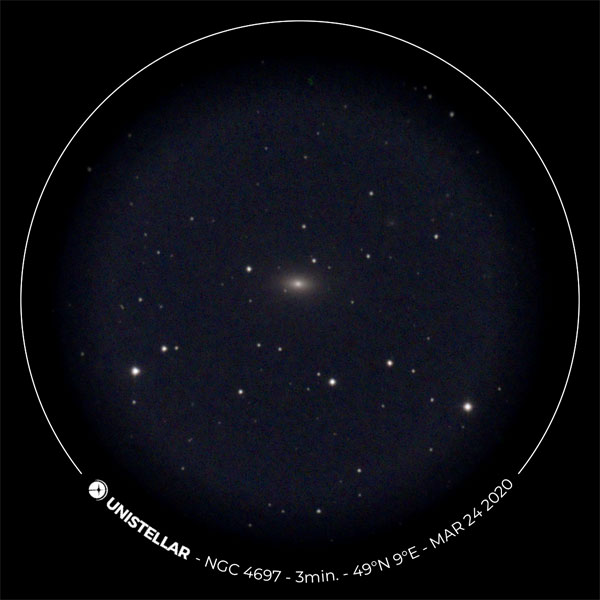 |
Small elliptical galaxy | |
| NGC 4725 | With NGC 4712 | Coma Berenices | G | 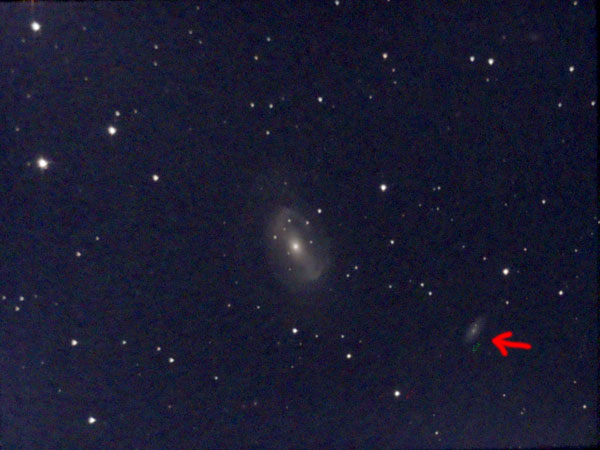 |
Small spiral galaxy with even smaller neighbor galaxy NGC 4712 (spiral galaxy) |
| NGC 5005 | Canes Venatici | G | 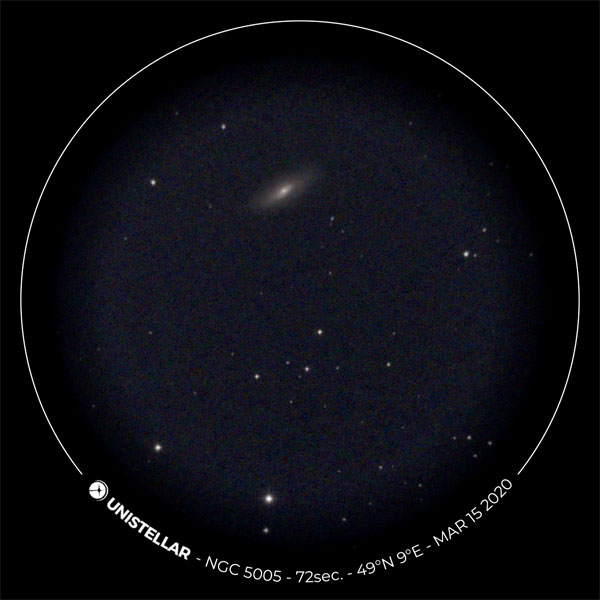 |
Oblique spiral galaxy with bright core | |
| NGC 5053 | Coma Berenices | GC | 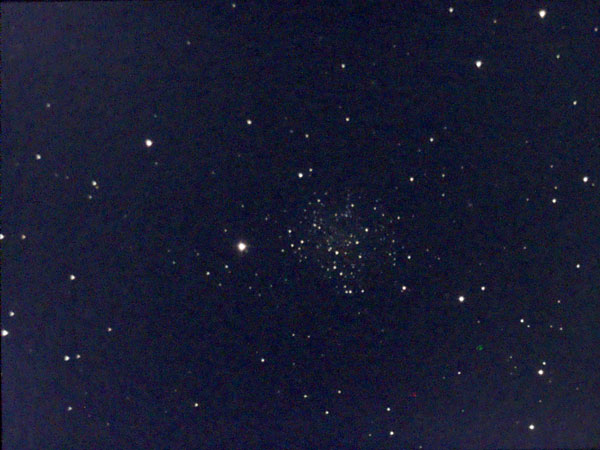 |
Very loose globular star cluster near M 53 (1°) | |
| NGC 5173 | With NGC 5169 and NGC 5198 | Canes Venatici | G | 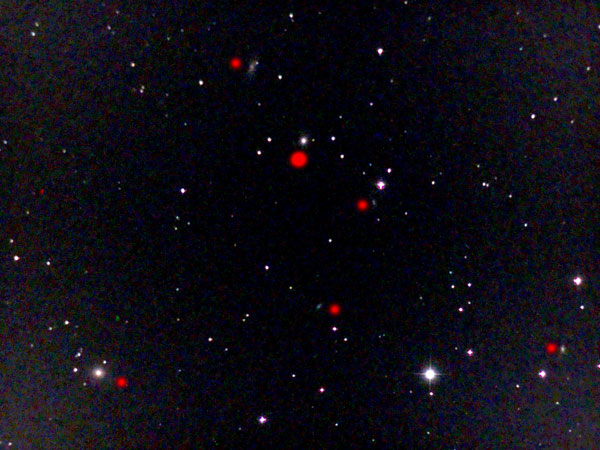 |
Elliptical galaxy close to M 51; two more galaxies in the eVscope's field of view (NGC 5169 and NGC 5198); the three galaxies belong to the NGC 5198 group. |
| NGC 5426/27 | Arp 271 | Virgo | G | 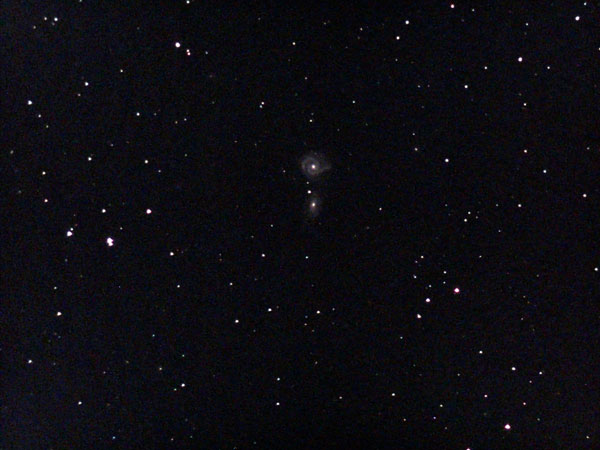 |
The spiral galaxies NGC 5426 and NGC 5427 in the constellation Virgo are interacting with one another and form a pair that is called Arp 271. |
| NGC 5466 | Bootes | GC | 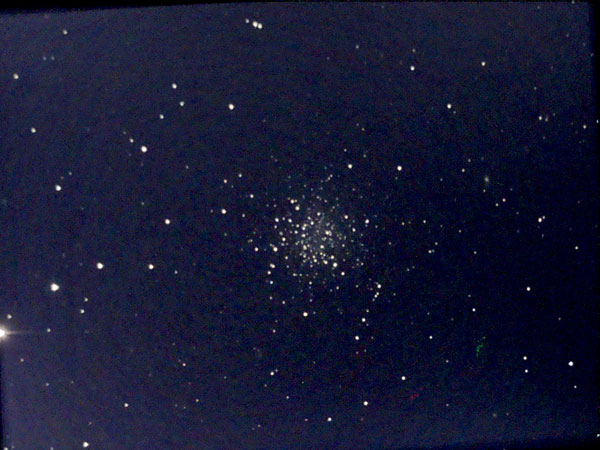 |
Rather loose globular star cluster | |
| NGC 5634 | Virgo | GC | 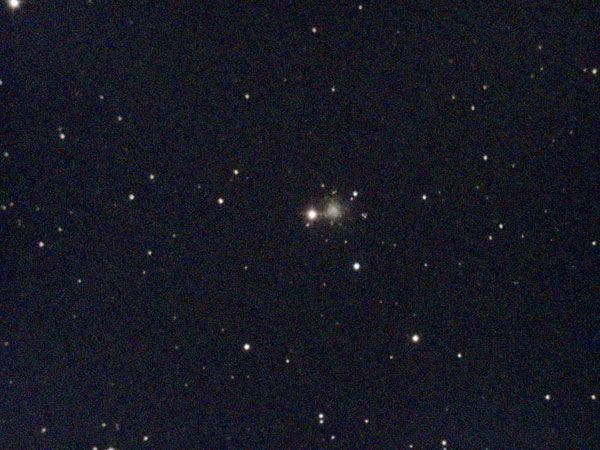 |
The only globular star cluster in the constellation Virgo; small in the eVscope | |
| NGC 5897 | Libra | GC | 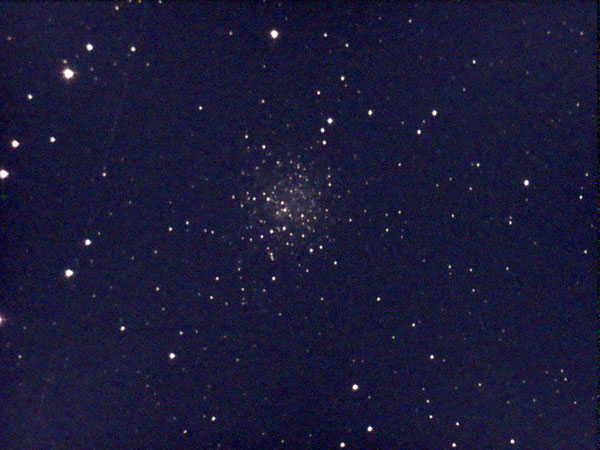 |
Extremely loose structure, only a very low star density even at the center | |
| NGC 5907 | Splinter Galaxy | Draco | G | 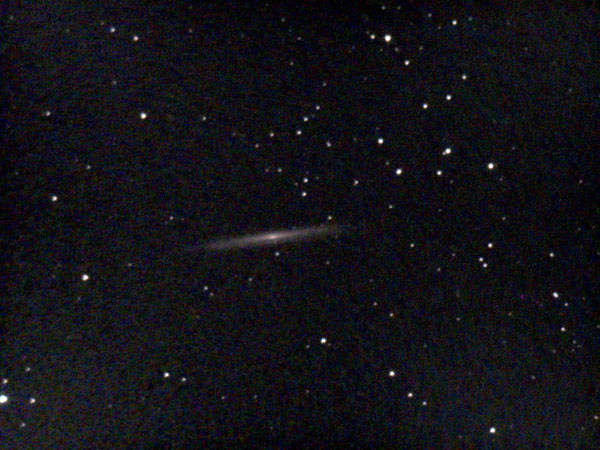 |
Can be seen edge-on; in contrast to other "edge-on" galaxies, the ends are not pointed. |
| NGC 5981/82/85 | Draco Triplet | Draco | G | 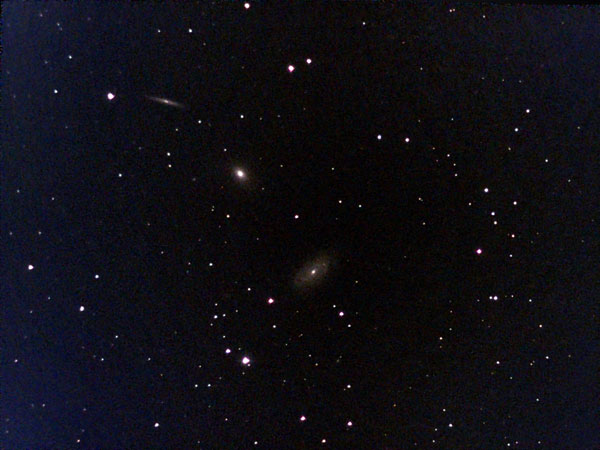 |
The galaxies NGC 5981 (spiral), NGC 5982 (elliptical), and NGC 5985 (spiral) in the constellation Draco form the Draco triplet. |
| NGC 6041 | Abell 2151, Hercules Cluster | Hercules | G, GaC | 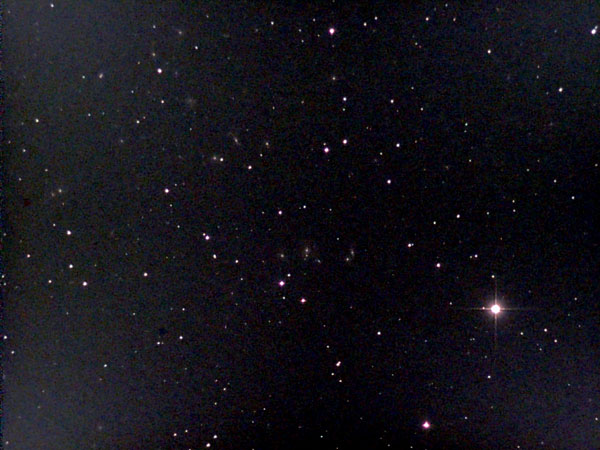 |
Cluster of galaxies 500 million light-years away with 300 galaxies; visible galaxies are tiny in the eVscope. |
| NGC 6207 | Hercules | G | 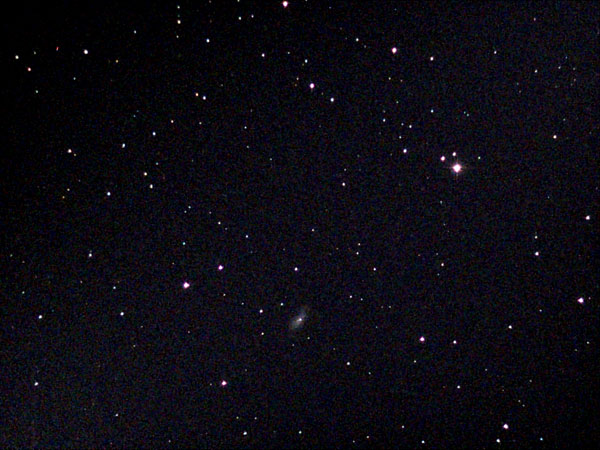 |
Small but nice galaxy close to M 13 in Hercules | |
| NGC 6210 | Turtle Nebula | Hercules | PN | 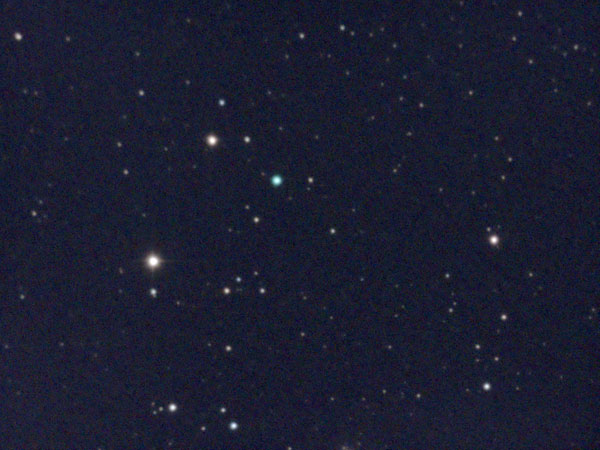 |
Rather bright and turquoise; has a white central star, which is regarded as easy to observe (not in eVscope). |
| NGC 6229 | Hercules | GC | 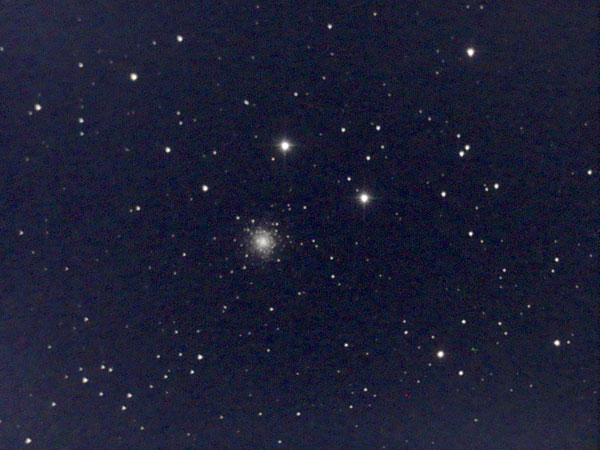 |
Small | |
| NGC 6235 | Ophiuchus | GC | 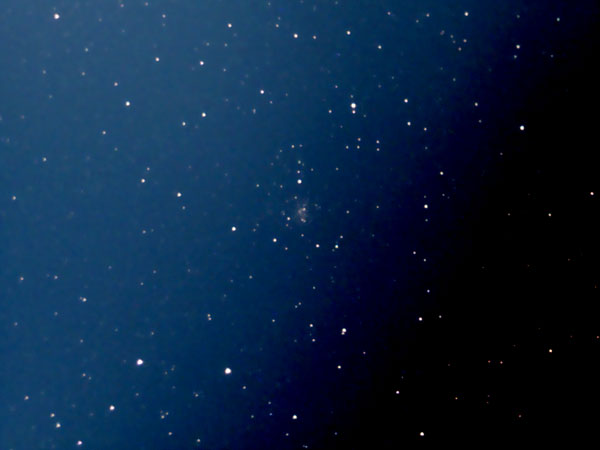 |
Rather small and little compressed | |
| NGC 6284 | Ophiuchus | GC | 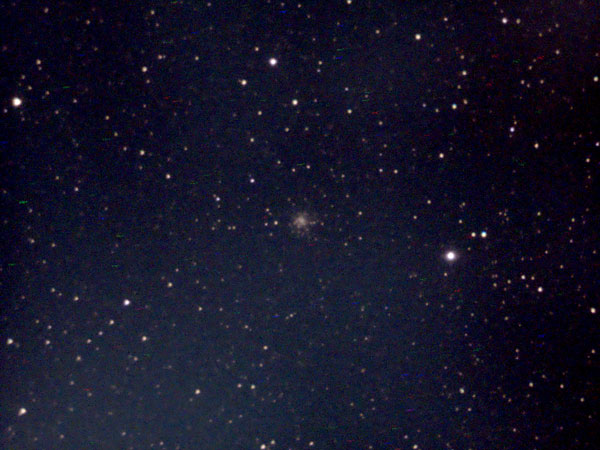 |
Rather small | |
| NGC 6287 | Ophiuchus | GC | 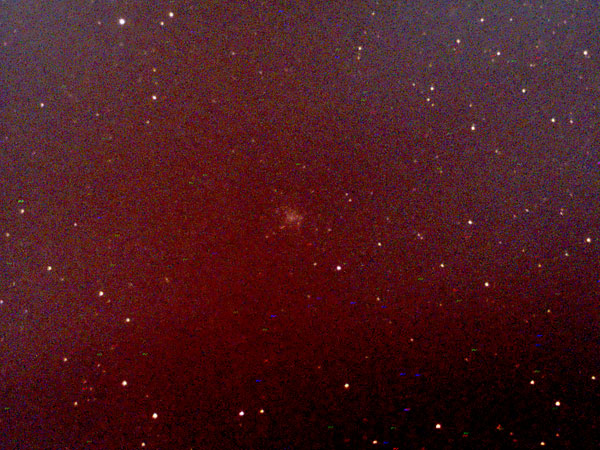 |
Small | |
| NGC 6293 | Ophiuchus | GC | 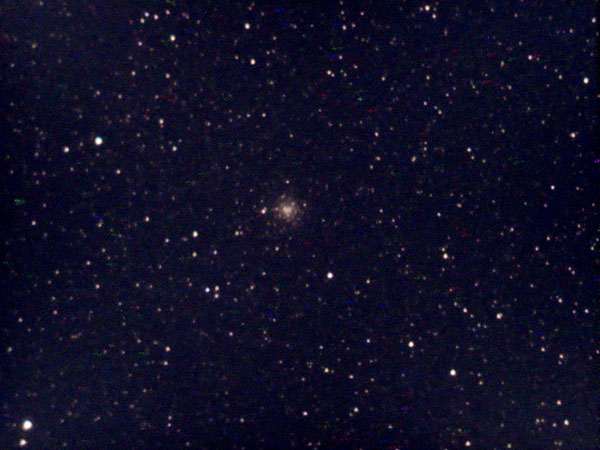 |
Small, but larger than its neighbors | |
| NGC 6342 | Ophiuchus | GC | 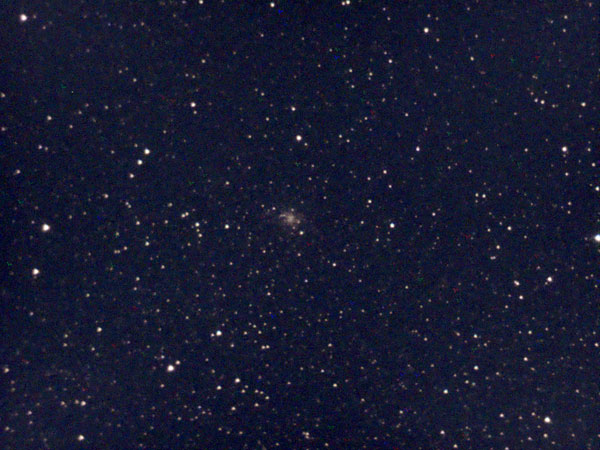 |
Rather small | |
| NGC 6356 | Ophiuchus | GC | 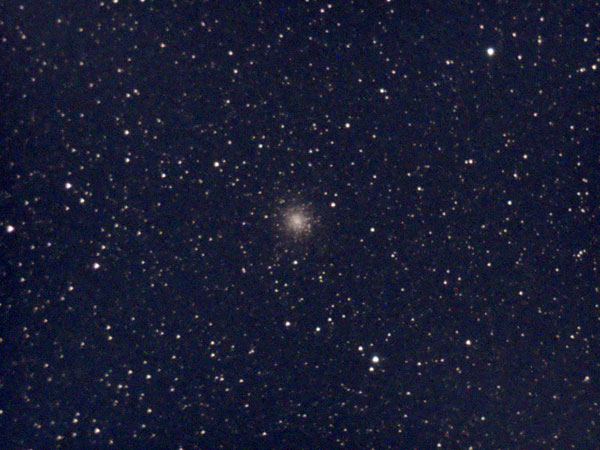 |
Small, but larger than its neighbors | |
| NGC 6366 | Ophiuchus | GC | 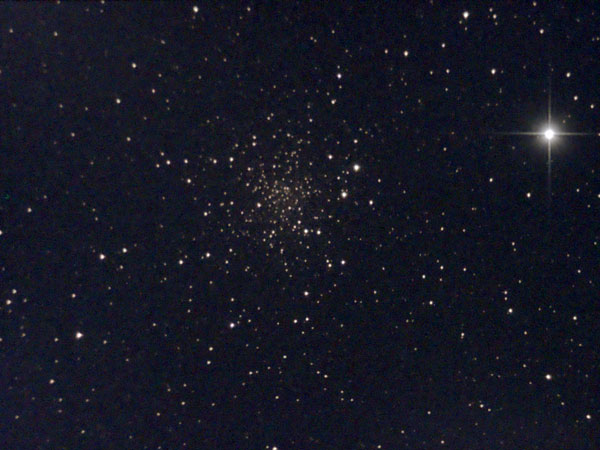 |
Rather faint, but fairly large and loose | |
| NGC 6440 | Sagittarius | GC | 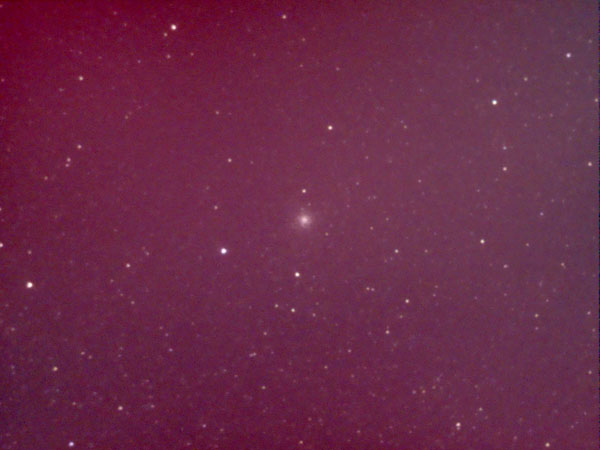 |
Small | |
| NGC 6445 | Sagittarius | PN | 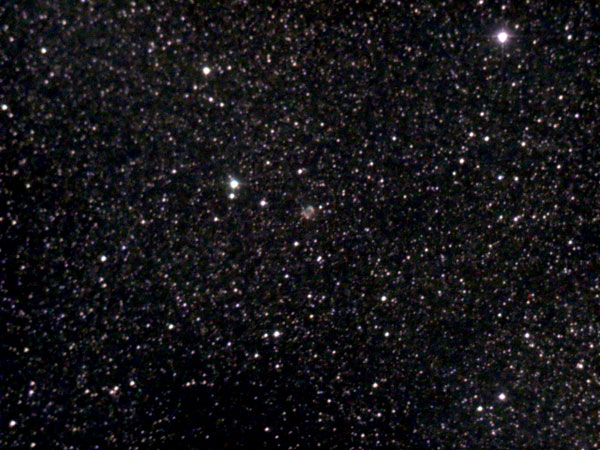 |
Very small in the eVscope | |
| NGC 6517 | Ophiuchus | GC | 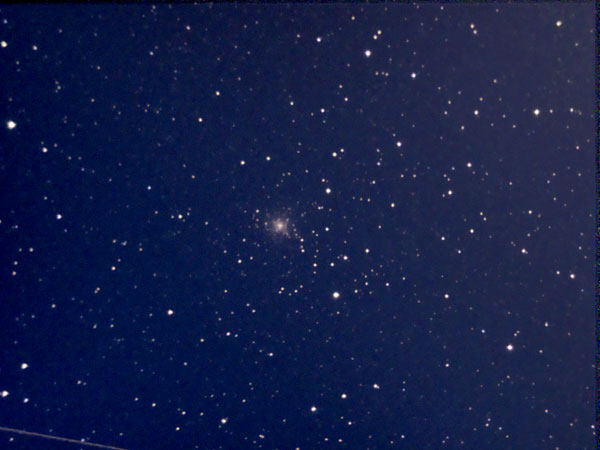 |
Small, has some star chains in its neighborhood | |
| NGC 6535 | Serpens | GC | 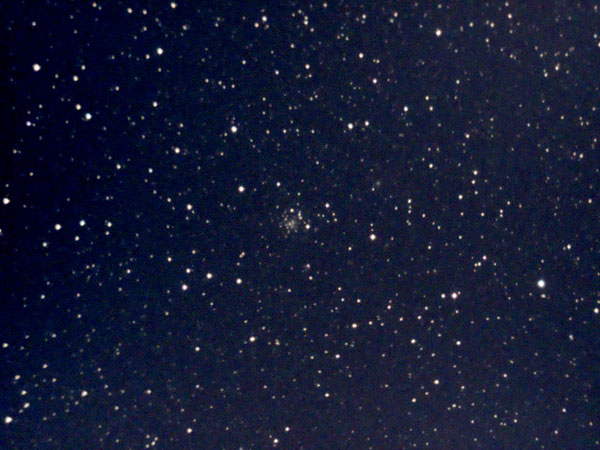 |
Small | |
| NGC 6537 | Red Spider Nebula | Sagittarius | PN | 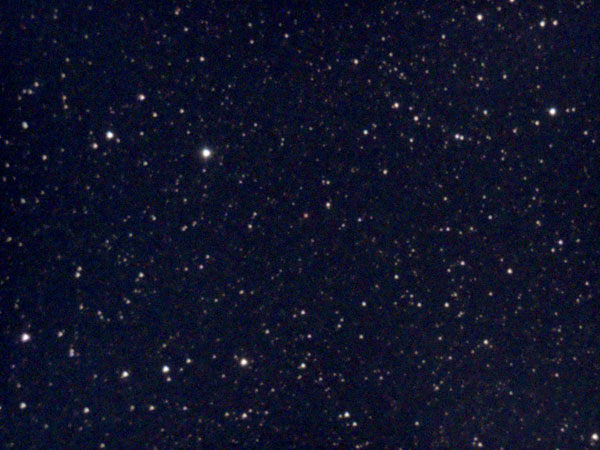 |
Very small, has a white dwarf at its center |
| NGC 6539 | Serpens | GC | 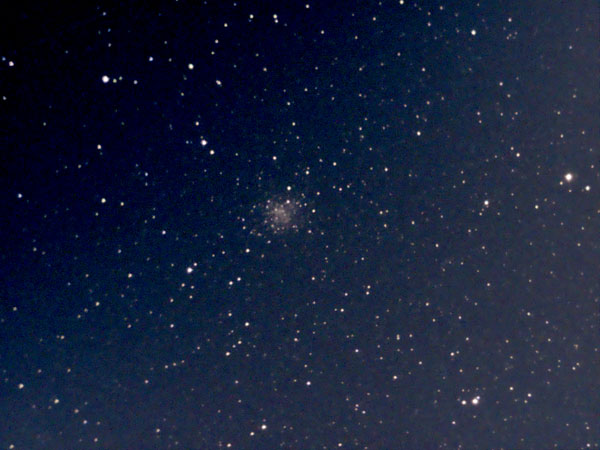 |
Somewhat larger, has some star chains in its neighborhood | |
| NGC 6543 | Cat's Eye Nebula | Draco | PN | 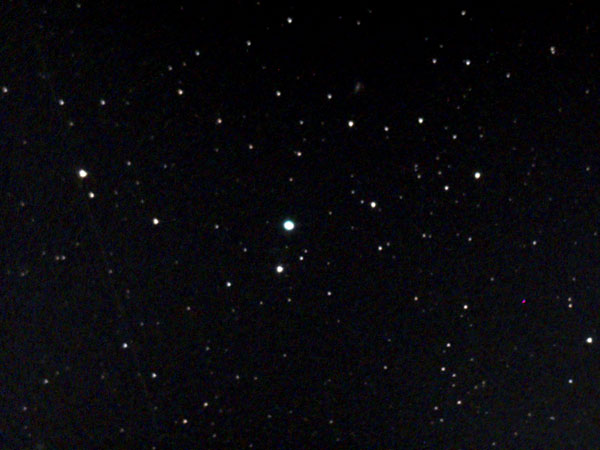 |
Very small in the eVscope |
| NGC 6567 | Serpens | PN | 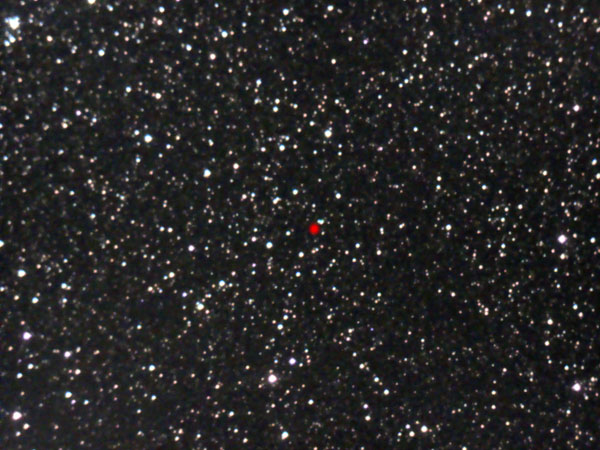 |
Very small | |
| NGC 6572 | Blue Raquetball Nebula | Ophiuchus | PN | 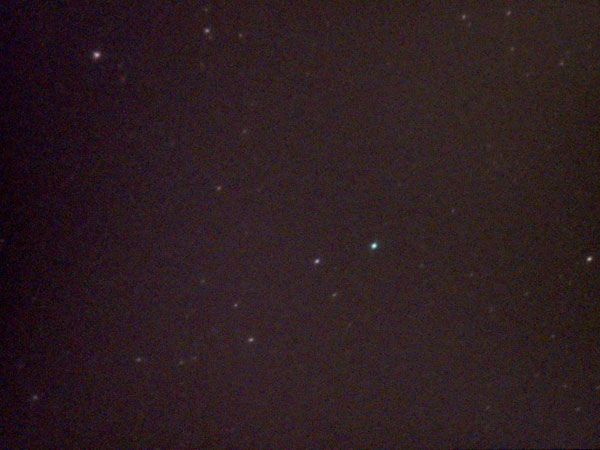 |
Small and cyan |
| NGC 6633 | Ophiuchus | OC | 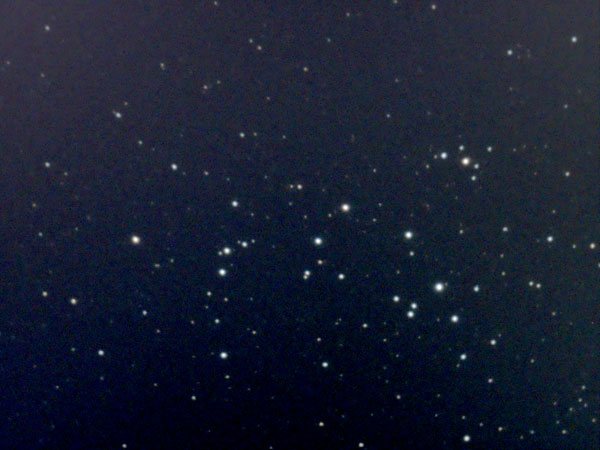 |
According to Stoyan on par with M 11 and M 16 | |
| NGC 6712 | Scutum | GC | 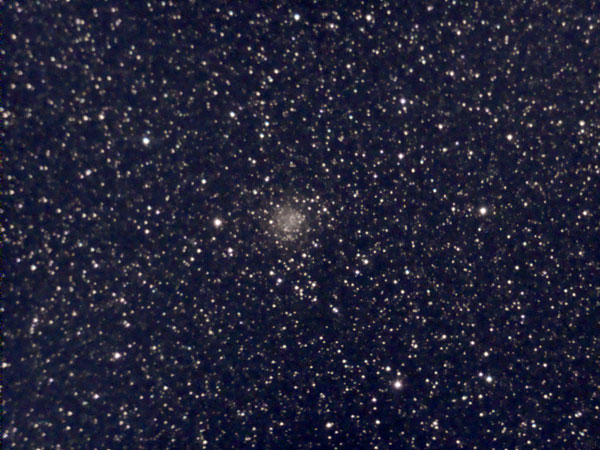 |
Somewhat larger and nice in the eVscope | |
| NGC 6741 | Phantom Streak Nebula | Aquila | PN | 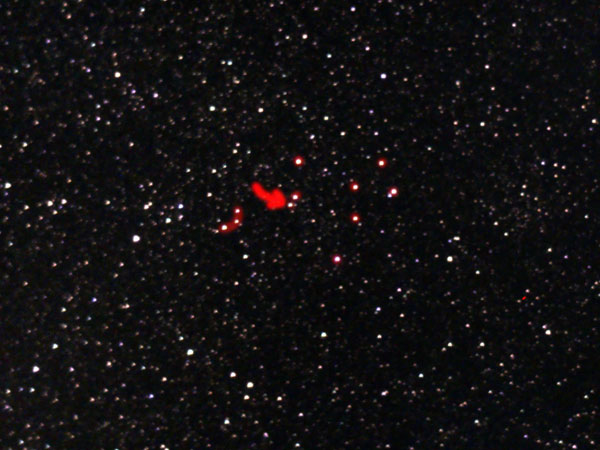 |
So extremely small in the eVscope that I was not able to find it on the eVscope photo. Neither did the plate solving Website Astrometry.net! But I was able to identify it with the help of Stellarium. |
| NGC 6751 | Aquila | PN | 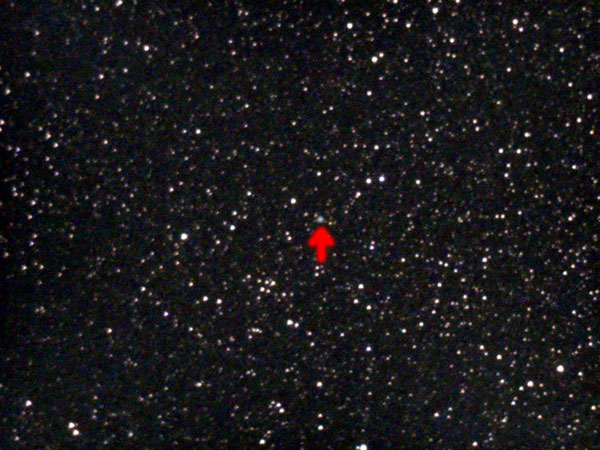 |
Small in the eVscope, but can still be identified. | |
| NGC 6781 | Snowball Nebula | Aquila | PN | 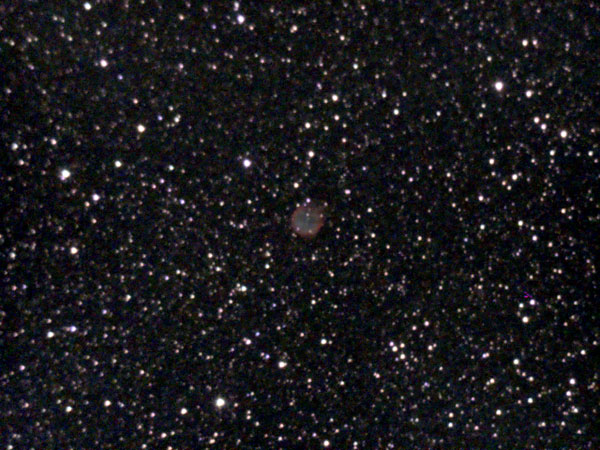 |
According to Stoyan, the brightest of four fainter planetary nebulae in this constellation; reminds me of the Ring and the Dumbell nebulae |
| NGC 6818 | Little Gem Nebula | Sagittarius | PN | 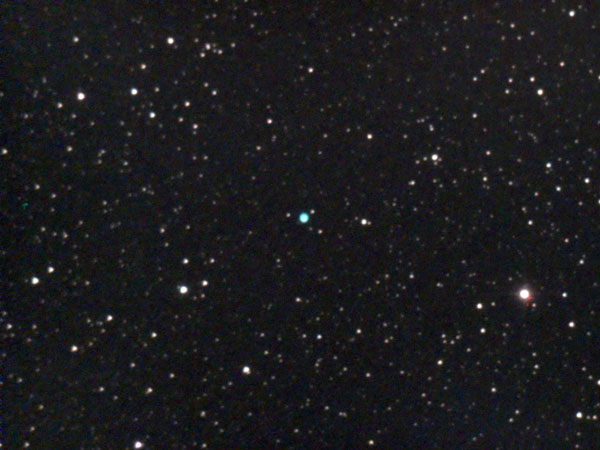 |
According to Stoyan very small and bright, a small blue dot in the eVscope |
| NGC 6820/23 | Vulpecula | GNE/OC | 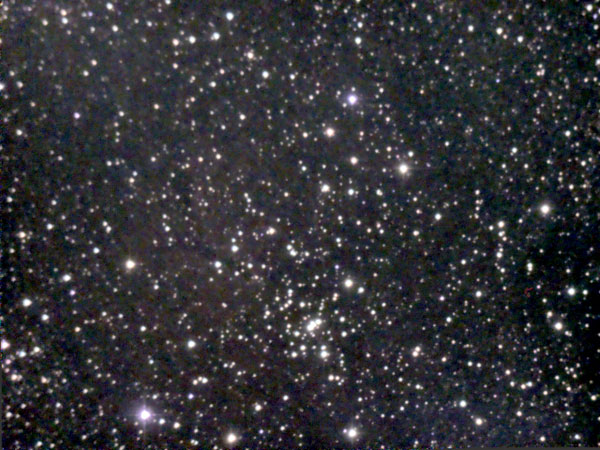 |
NGC 6820 is a small reflection nebula near the open star cluster NGC 6823. Both are embedded in the large faint emission nebula Sh 2-86. The whole area of nebulosity is often referred to as NGC 6820. | |
| NGC 6822 | Barnards Galaxie | Sagittarius | G | 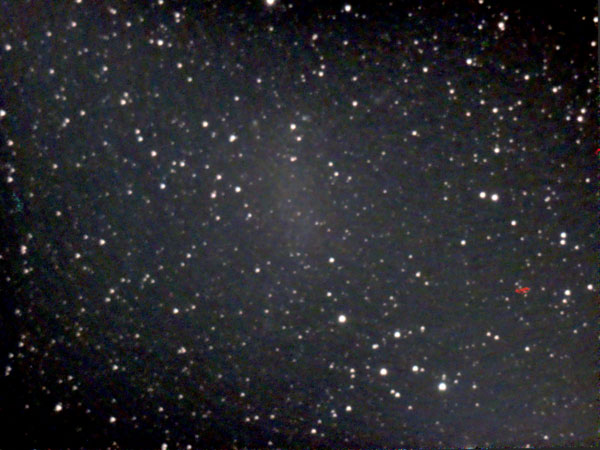 |
According to Stoyan faint and hard to see. This was in fact even with the eVscope the case. But once, I was able to find a faint glow after post-processing... |
| NGC 6826 | Blinking Planetary Nebula | Cygnus | PN | 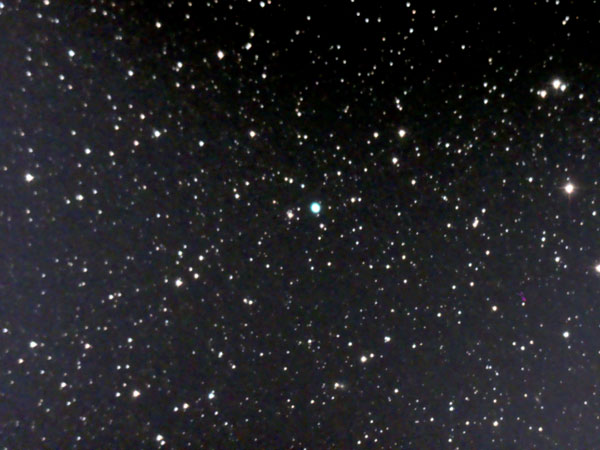 |
According to Stoyan brighter than the Ring Nebula M 57, but not so easy to observe. In the eVscope it is just a blue dot... |
| NGC 6835 | Sagittarius | G | 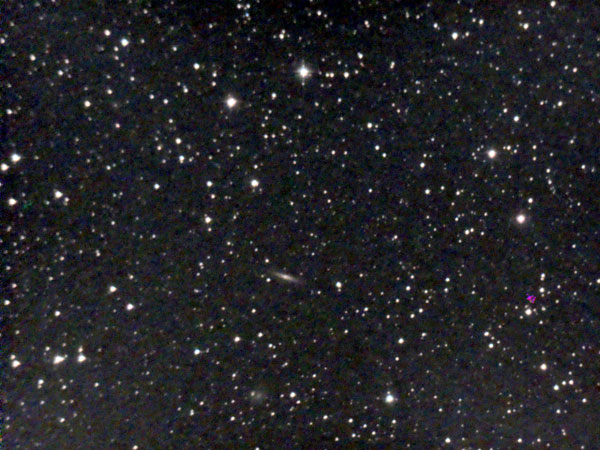 |
Very small and seen edge-on; some sources call it a barred spiral. | |
| NGC 6882/5 | Vulpecula | OC | 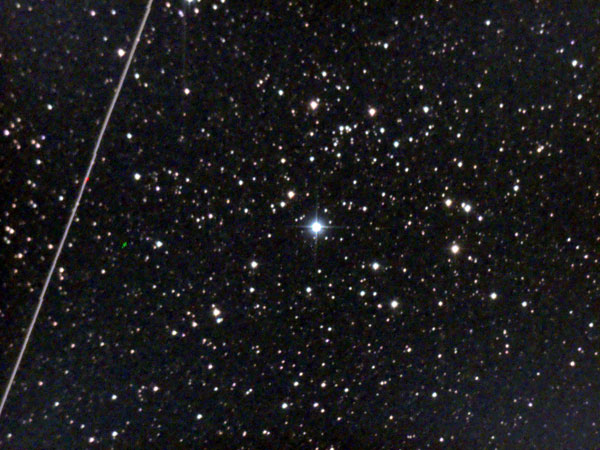 |
Wide-spread star cluster, actually NGC 6885, not NGC 6882... | |
| NGC 6888 | Crescent Nebula | Cygnus | GNE | 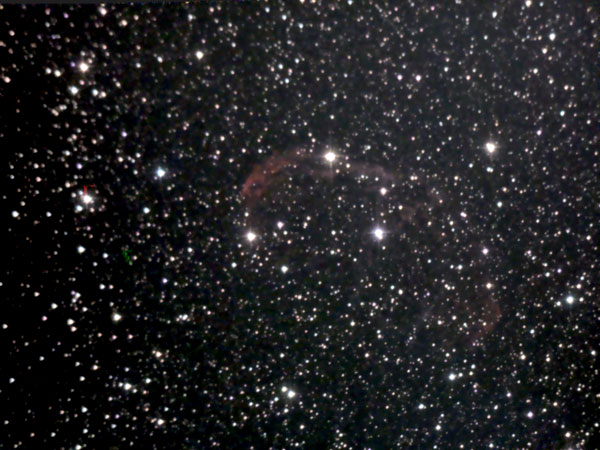 |
Faint and better suited to larger telescopes |
| NGC 6934 | Delphinus | GC | 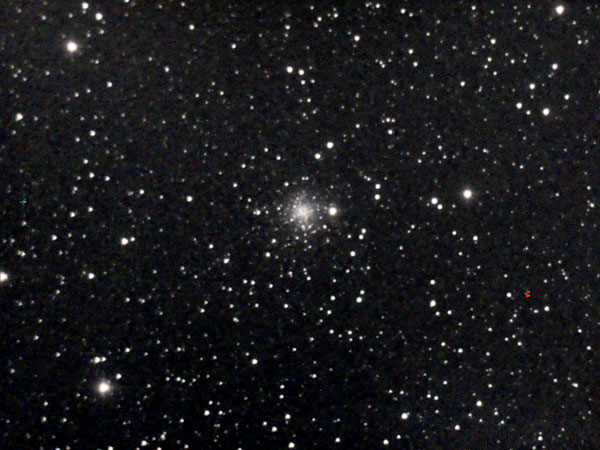 |
According to Stoyan hard to resolve; it is, however, possible with the eVscope. | |
| NGC 6946 | Fireworks Galaxy | Cepheus | G | 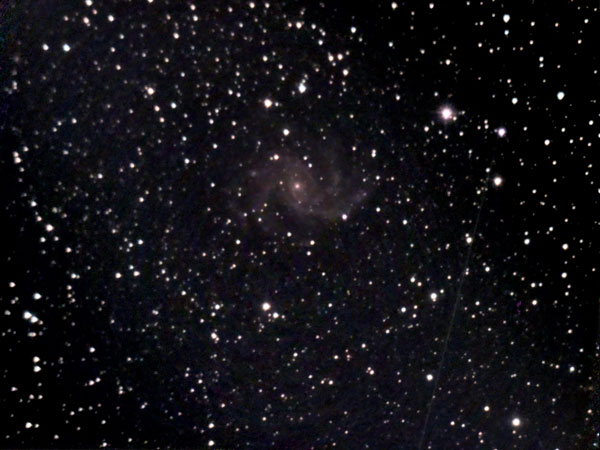 |
40' distant from the open star cluster NGC 6939, too far away to see both in the eVscope at once |
| NGC 6960 | Western Veil Nebula | Cygnus | GN/SR | 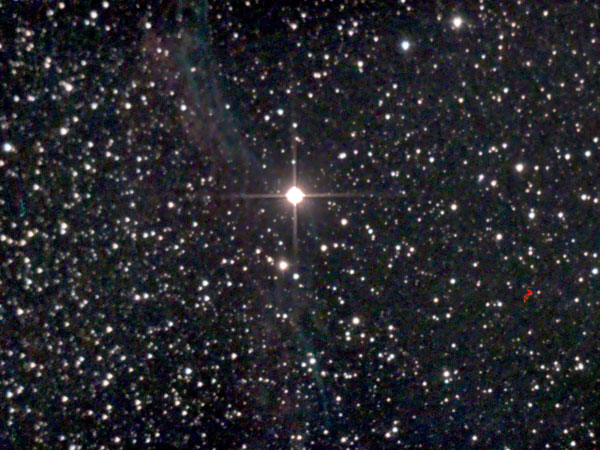 |
I was able to catch at least a glimpse of NGC 6960 with the eVscope, although all this is far too large for the eVscope's field of view. Together with NGC 6992/5 a supernova remnant. |
| NGC 6992/5 | Eastern Veil Nebula | Cygnus | GN/SR | 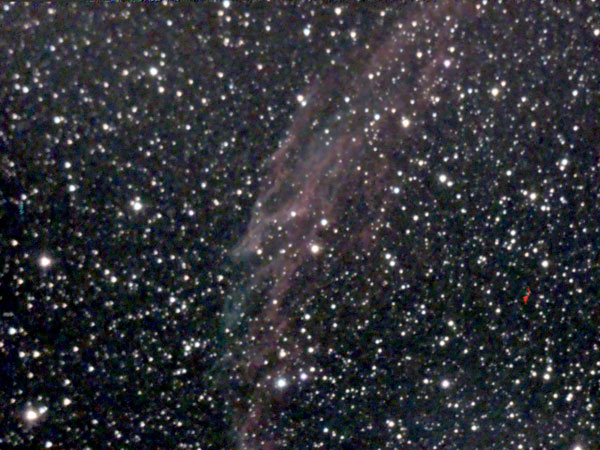 |
I was able to catch at least a glimpse of NGC 6992/5 with the eVscope, although all this is far too large for the eVscopes field of view. Together with NGC 6960 a supernova remnant. |
| NGC 7000 | North America Nebula | Cygnus | GN | 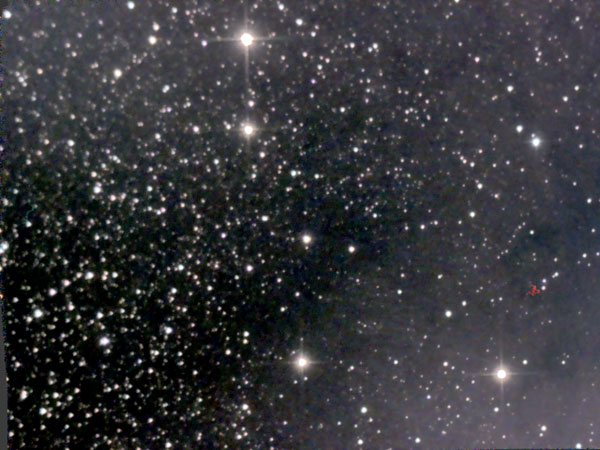 |
Too large for the eVscope, nebula not really recognizable... |
| NGC 7006 | Delphinus | GC | 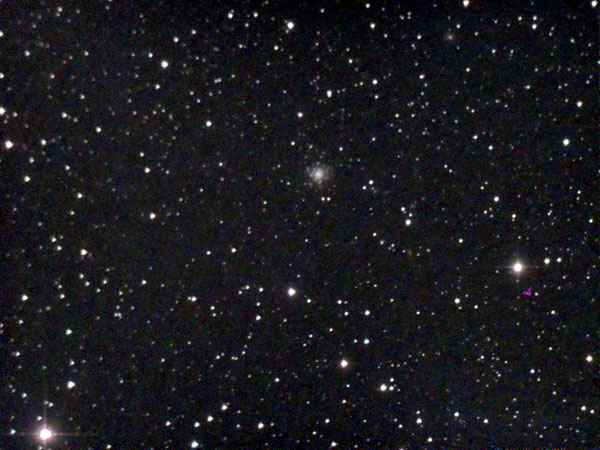 |
Small, but also far away for a globular star cluster | |
| NGC 7009 | Saturn Nebula | Aquarius | PN | 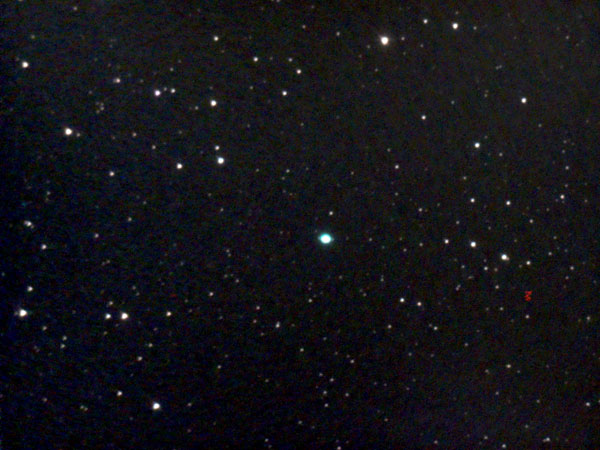 |
Very small, reminds of the planet Saturn with its "ears". |
| NGC 7023 | Iris Nebula | Cepheus | GN | 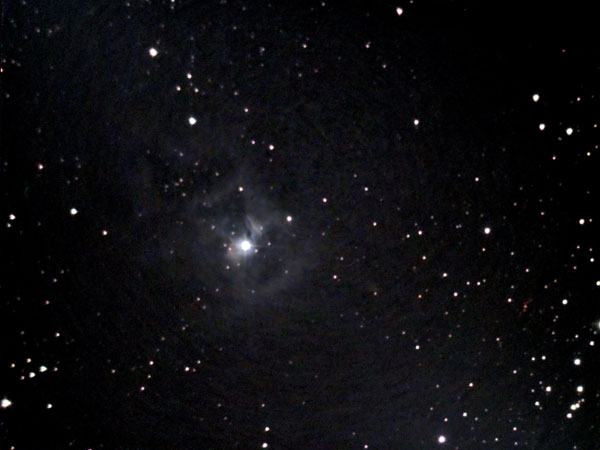 |
NGC 7023 is the name of an open star cluster containing the Iris Nebula. The Iris Nebula is a reflection nebula illuminated by a central star. |
| NGC 7243 | Lacerta | OC | 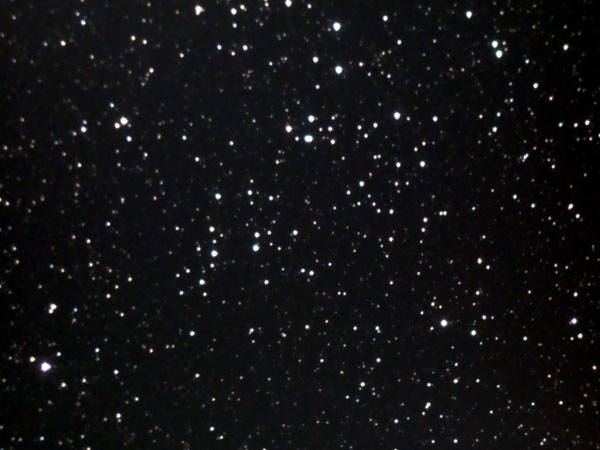 |
Originally confirmed with a Karkoschka photo; better seen in August 2020 | |
| NGC 7293 | Helix Nebula (Eye of God) | Aquarius | PN | 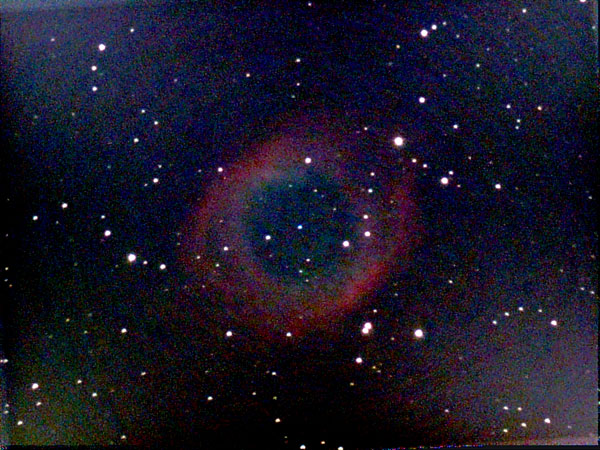 |
Extremely faint and barely detectable under the existing sky conditions; a little bit better later... |
| NGC 7317 | Stephan's Quintet | Pegasus | G | 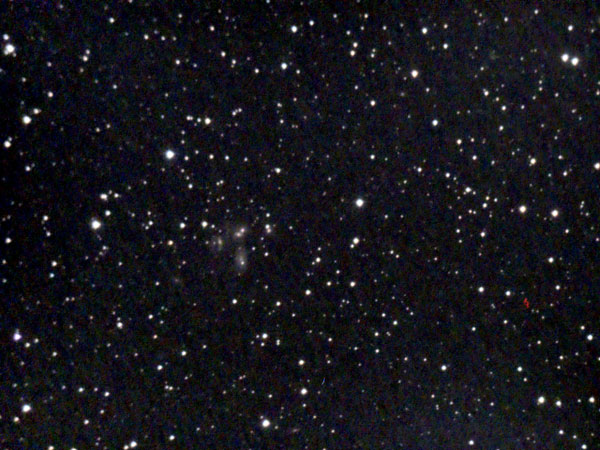 |
Part of Stephan's Quintet, a group of small galaxies. In the eVscope it is very small. It is located close to the galaxy NGC 7331. |
| NGC 7331 | With NGC 7335, NGC 7336, NGC 7337, and NGC 7340 | Pegasus | G | 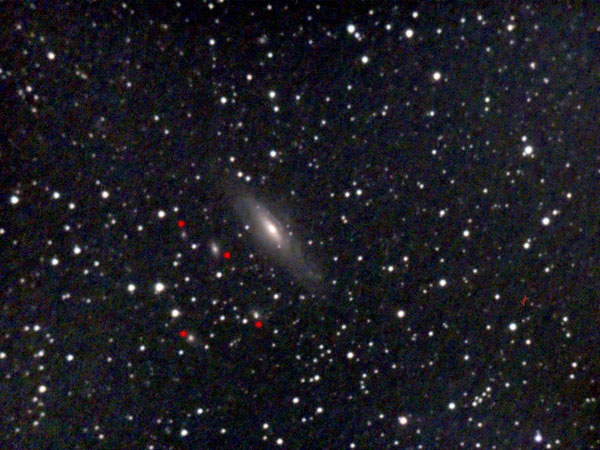 |
Originally faint, but confirmed with a Stoyan drawing; better seen in August and September 2020; the galaxy NGC 7335 and three smaller galaxies are on the better photos. |
| NGC 7332/39 | Pegasus | G | 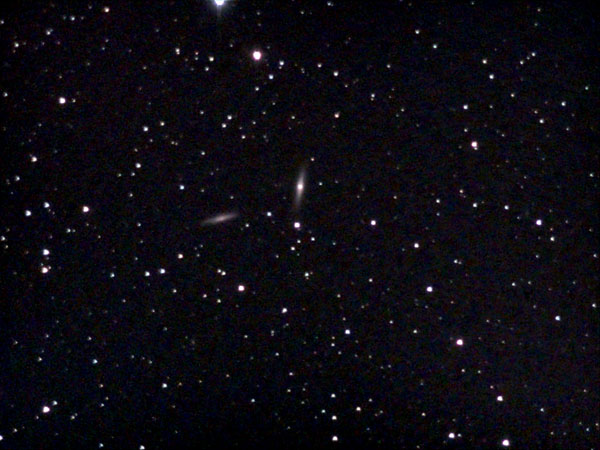 |
Double galaxy | |
| NGC 7380 | Wizard Nebula / Cluster | Cepheus | GN/OC | 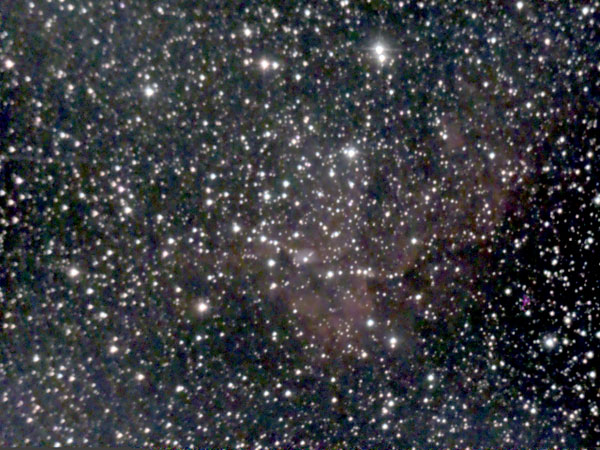 |
A star formation region that contains the young open star cluster NGC 7380. |
| NGC 7479 | Superman Galaxy | Pegasus | G | 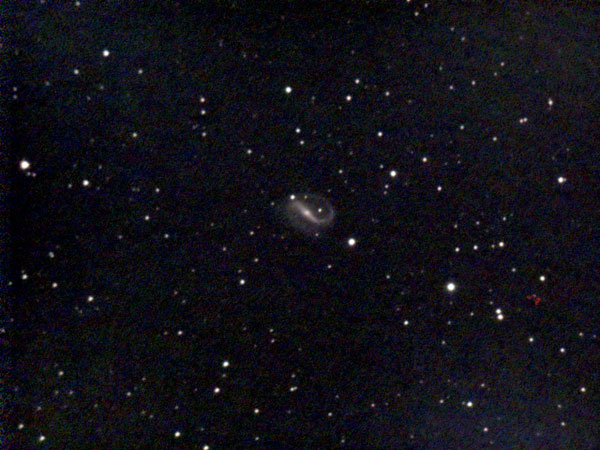 |
Can be seen well as a barred spiral |
| NGC 7600 | Aquarius | G | 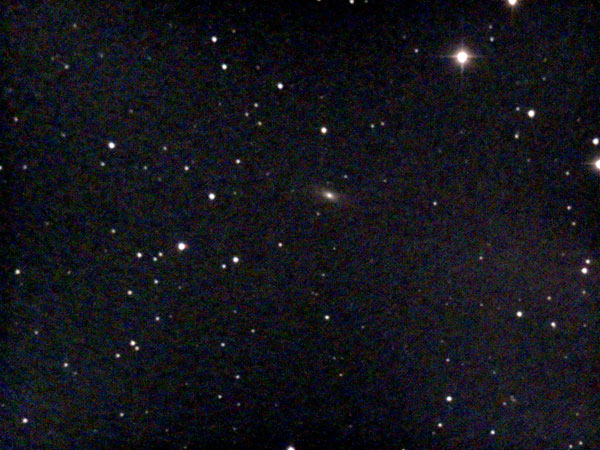 |
Elliptical galaxy, close to the ecliptic | |
| NGC 7635 | Bubble Nebula | Cassiopeia | GN | 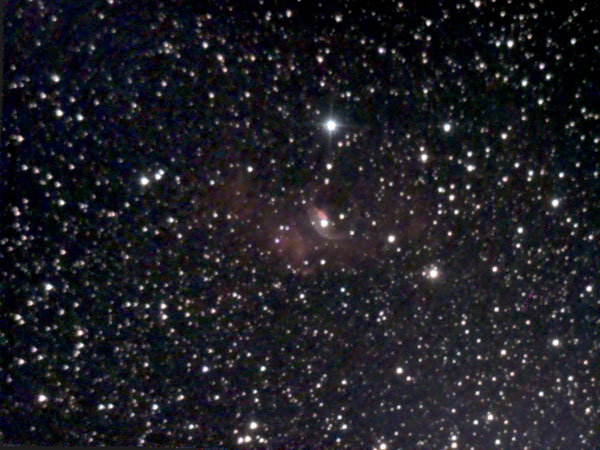 |
Nice, is located close to the well-known open star cluster M 52. |
| NGC 7640 | Andromeda | G | 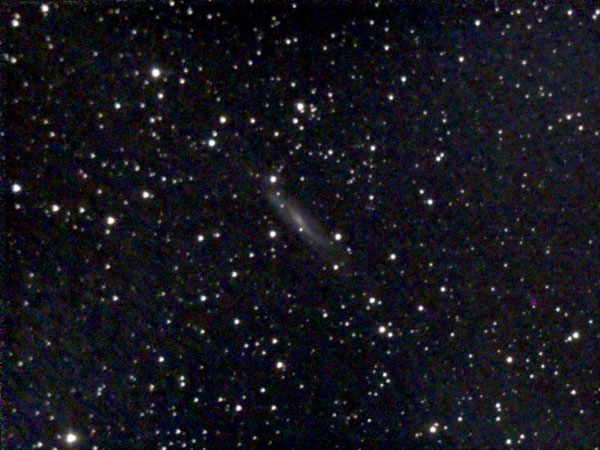 |
Faint | |
| NGC 7662 | Blue Snowball Nebula | Andromeda | PN | 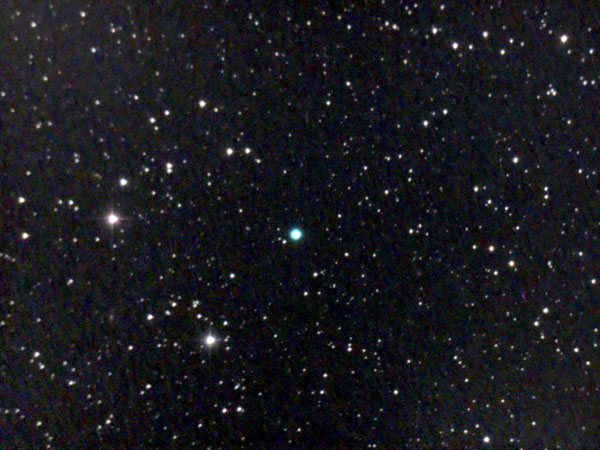 |
According to Stoyan, one of the most beautiful planetary nebulae in the autumn sky, which appears in the small telescope as an even blue disc. In the eVscope it appears as a prominent but small blue spot. |
| NGC 7721 | Aquarius | G | 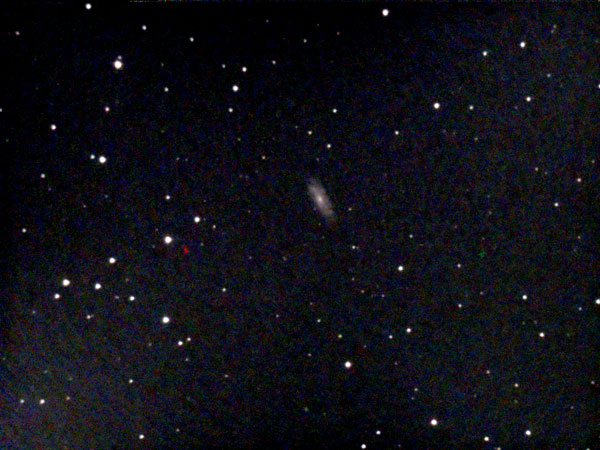 |
Spiral galaxy, close to the ecliptic | |
| NGC 7742 | Pegasus | G | 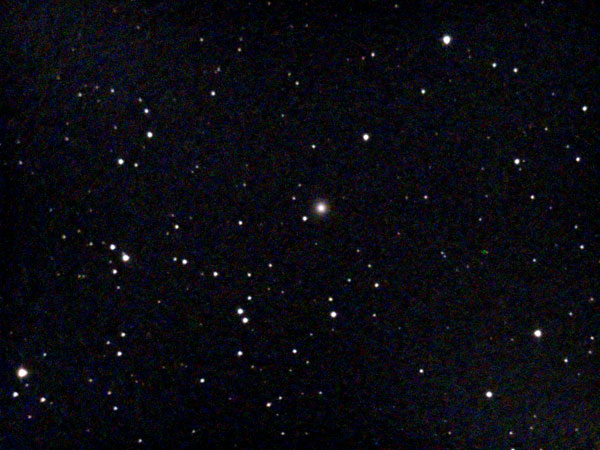 |
Spiral galaxy, small but has a very active core. | |
| NGC 7789 | Caroline's Rose Cluster, White Rose Cluster | Cassiopeia | OC | 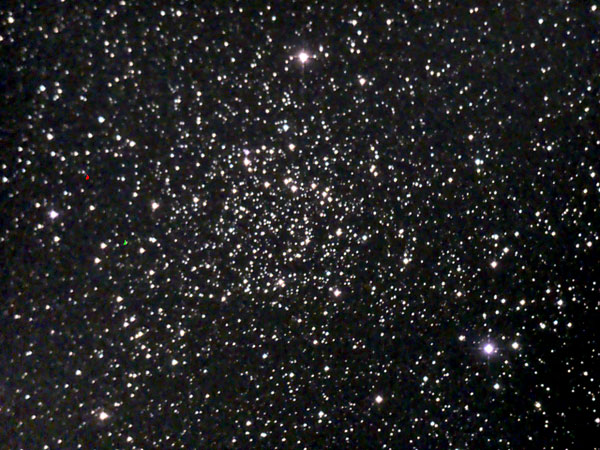 |
Large; according to Stoyan one of the richest star clusters for small telescopes. |
| NGC 7814 | Pegasus | G | 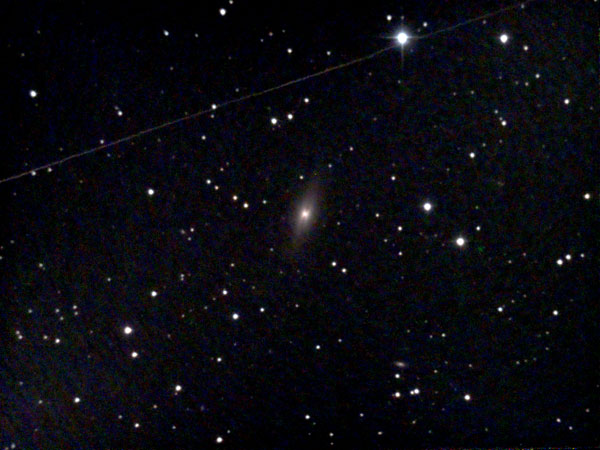 |
Spiral galaxy, seen edge-on | |
| Albireo | Cygnus | DS | 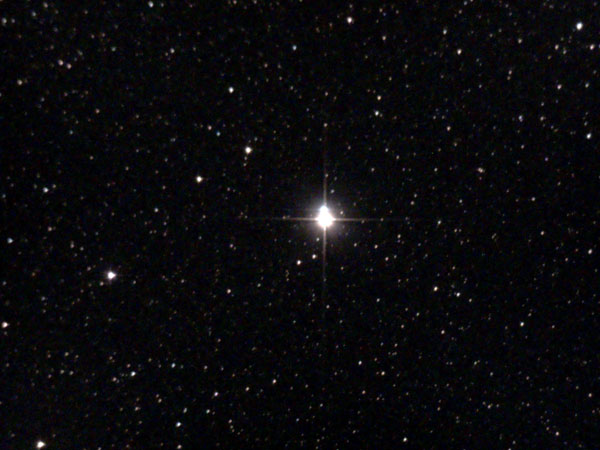 |
Hard to recognize as a double star in the eVscope | |
| Jupiter | P | 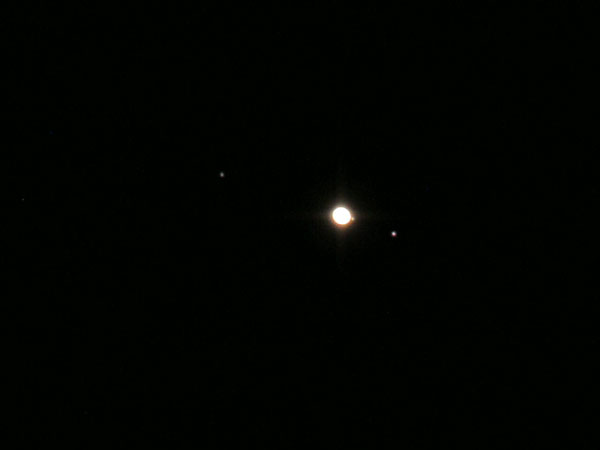 |
If I want to see moons, I cannot see the stripes - and vice versa... | ||
| Mars | P | 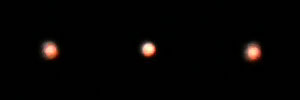 |
A small orange-yellow disk | ||
| Neptune | P | 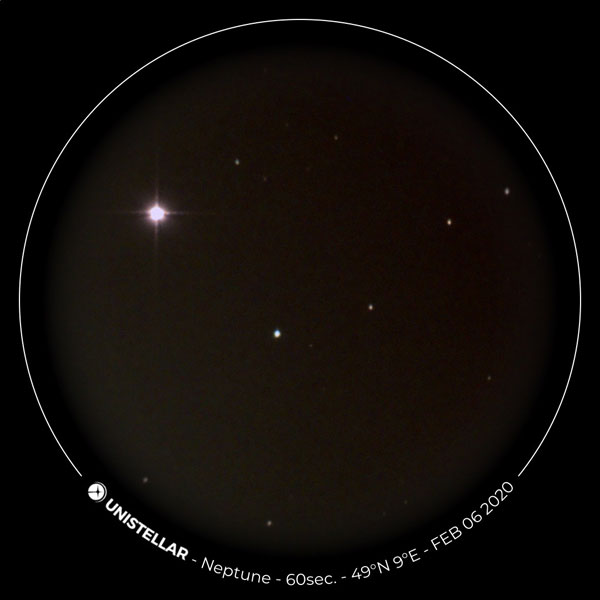 |
Small and bluish |
||
| Pluto | P | 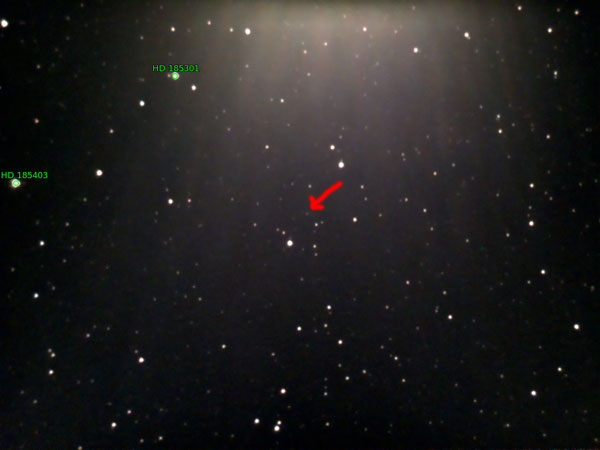 |
Too close to Jupiter, hard to detect | ||
| Saturn | P | 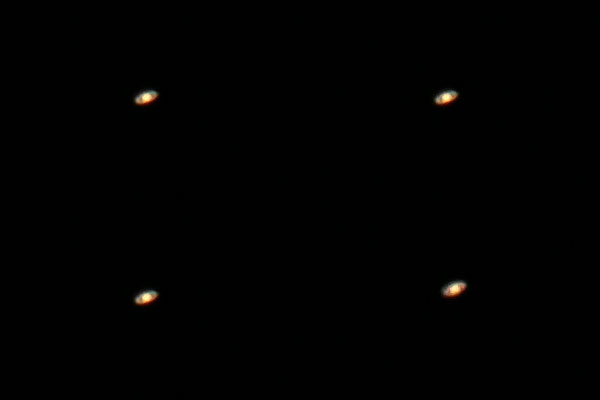 |
Small, but the ring can be recognized | ||
| Uranus | P | 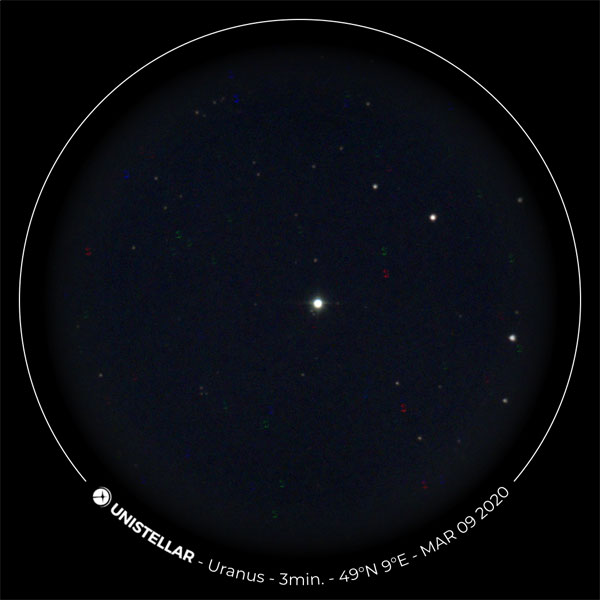 |
Small, saw even two moons... | ||
| Moon | M | 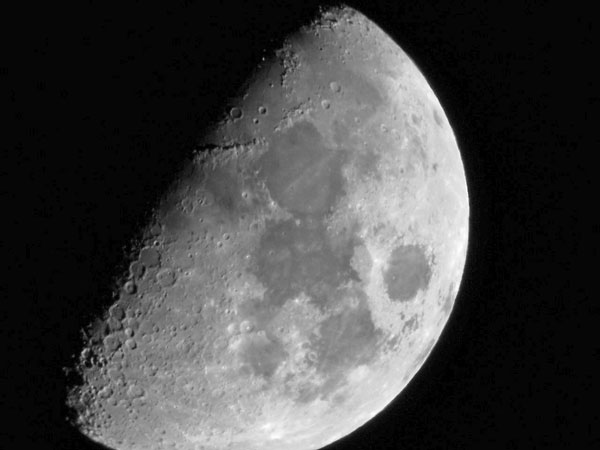 |
The moon does not quite fit the eVscope's FOV | ||
G = galaxy, OC = open star cluster, GC = globular star cluster, GN = galactic nebula, GE = galactic emission nebula, GR = galactic reflection nebula, DN = dark nebula, C = comet, PN = planetary nebula, SP = star pattern, SC = star cloud, SR = supernova remnant, HII = HII region (emission nebula in other galaxies), P = planet, M = moon
References
Books
- Michael Feiler & Philip Novak (2023). Deep Sky Reiseatlas (5th edition), Oculum Verlag (ISBN 978-3-949370-04-5)
www.oculum-verlag.de/detailview?no=608 - Ronald Stoyan (2021). Deep Sky Reiseführer (6th edition), Oculum Verlag (ISBN 978-3-938469-72-9)
www.oculum-verlag.de/detailview?no=603 - Erich Karkoschka (2022). Atlas für Himmelsbeobachter, Kosmos Verlag (EAN: 9783440173602)
www.kosmos.de/de/atlas-fur-himmelsbeobachter_1074889_9783440173602
On this Website
- Overview of Observations
- DSO List (Collected from Books)
- Unistellar eVscope - Information
- Unistellar eVscope - Photo Gallery (Messier Catalog)
- Unistellar eVscope - Photo Gallery (Other)
- Unistellar eVscope - Specialty Gallery Part 1 - Part 2 - Part 3
- Unistellar eVscope - Galaxies - Unistellar eVscope - Globular Star Clusters - Unistellar eVscope - Open Star Clusters - Unistellar eVscope - Nebulae
| 29.05.2025 |